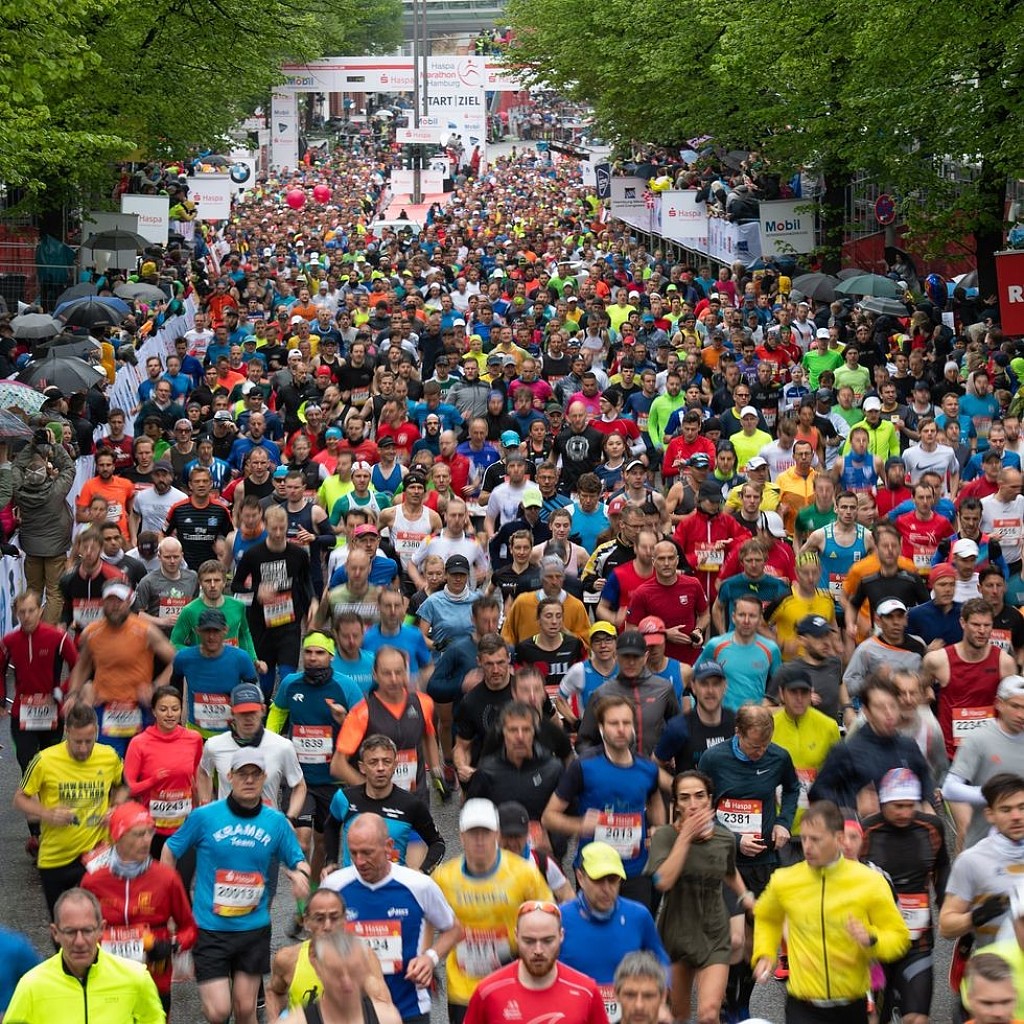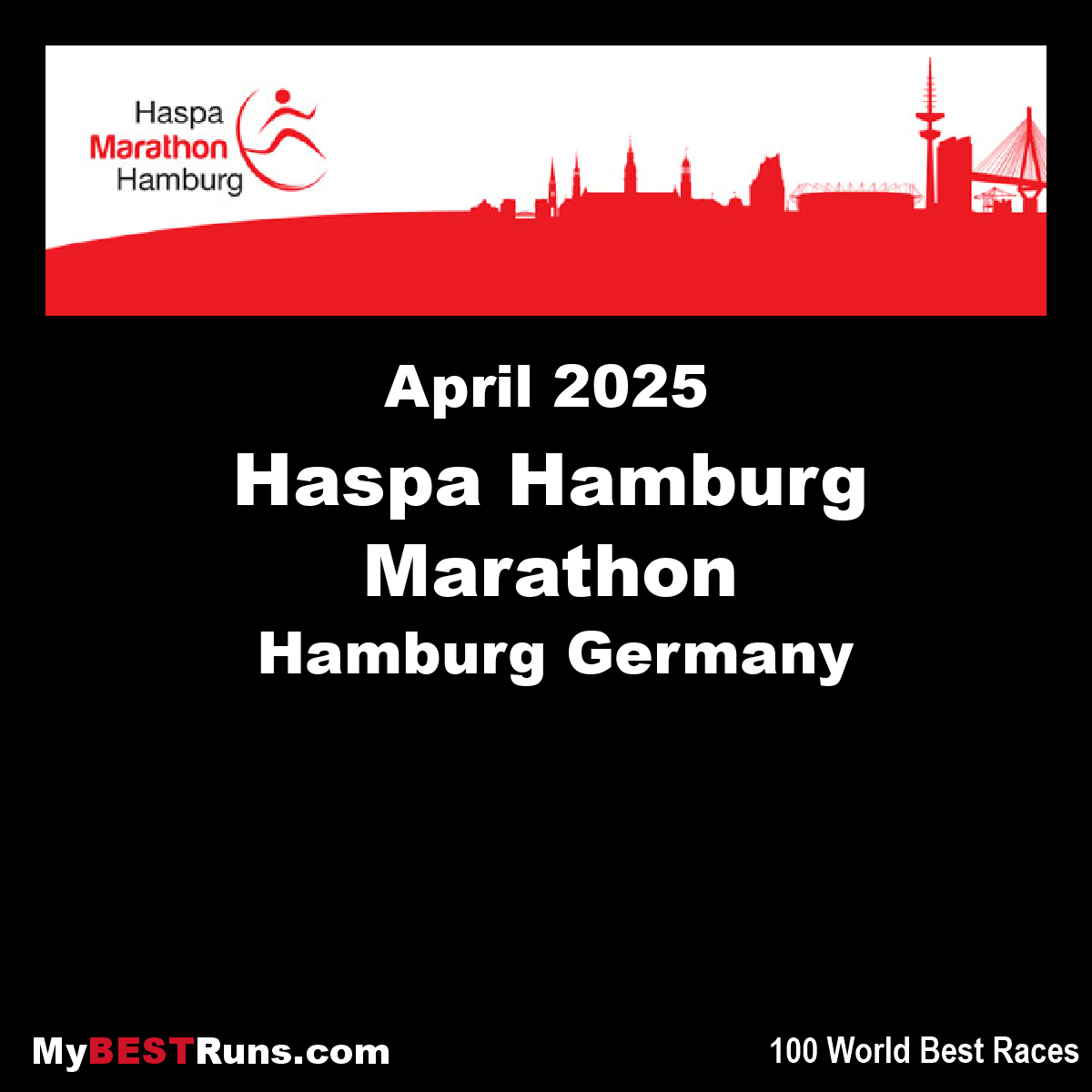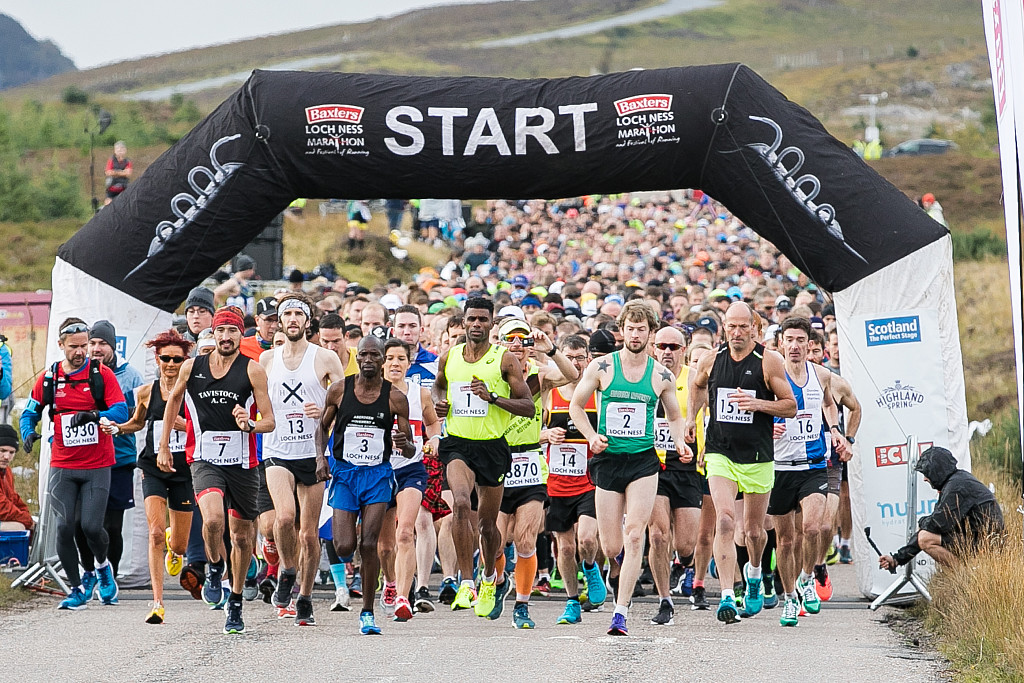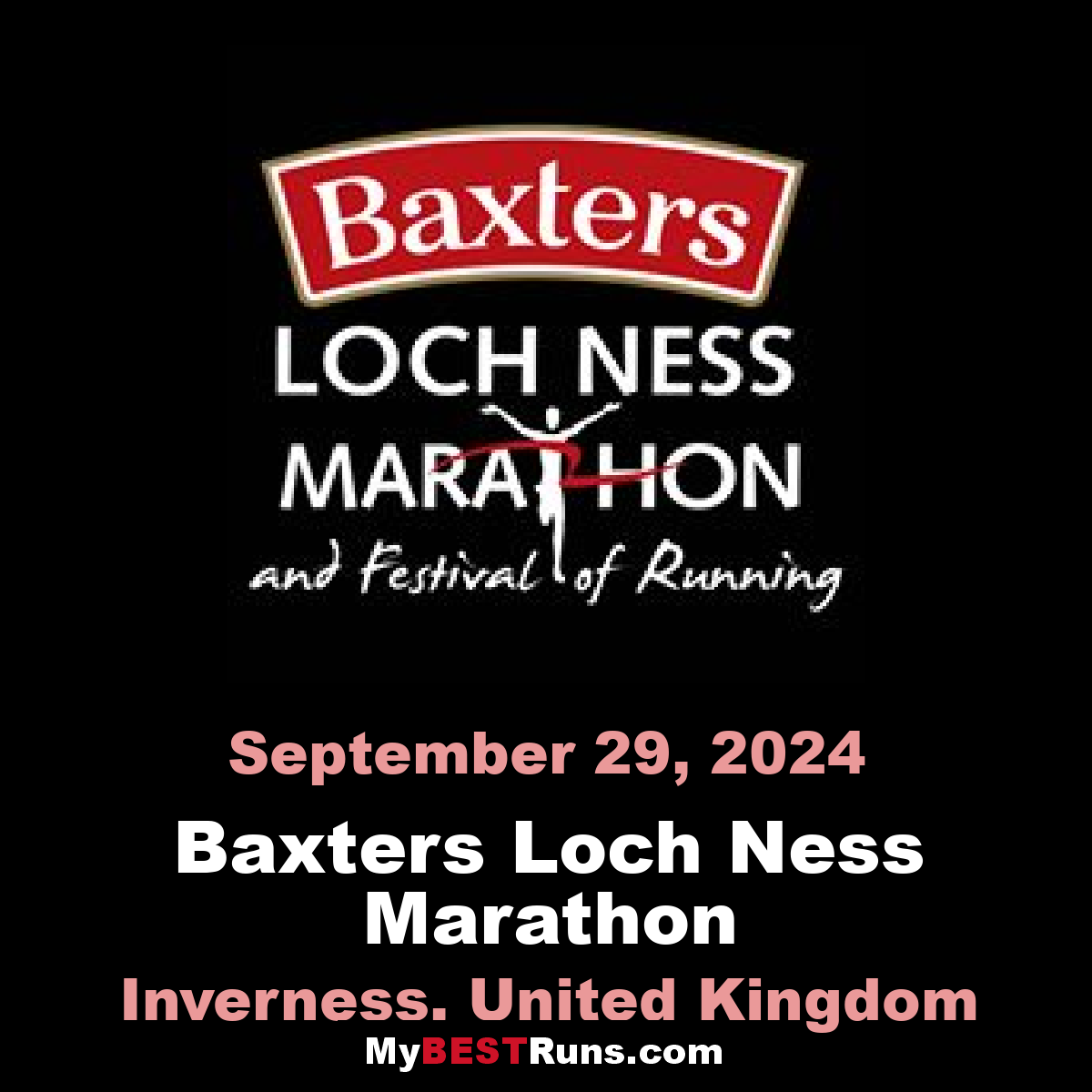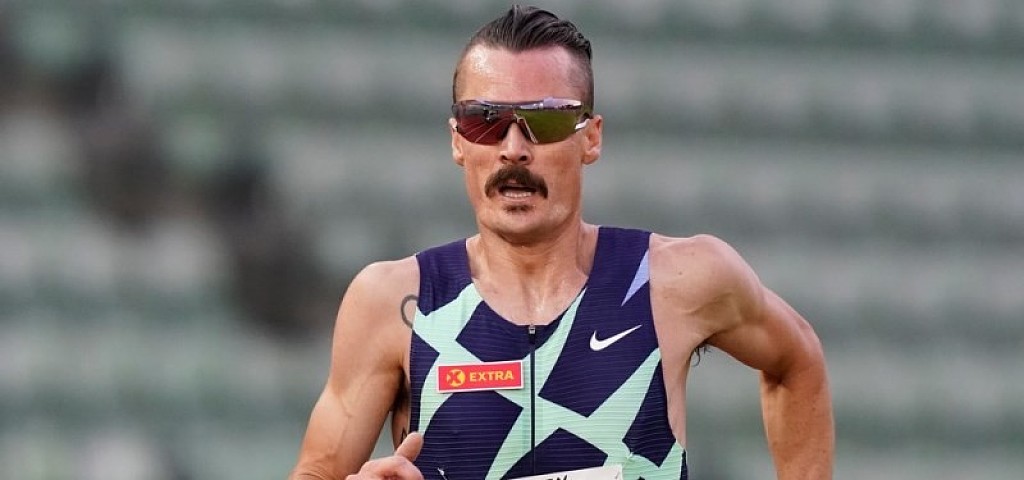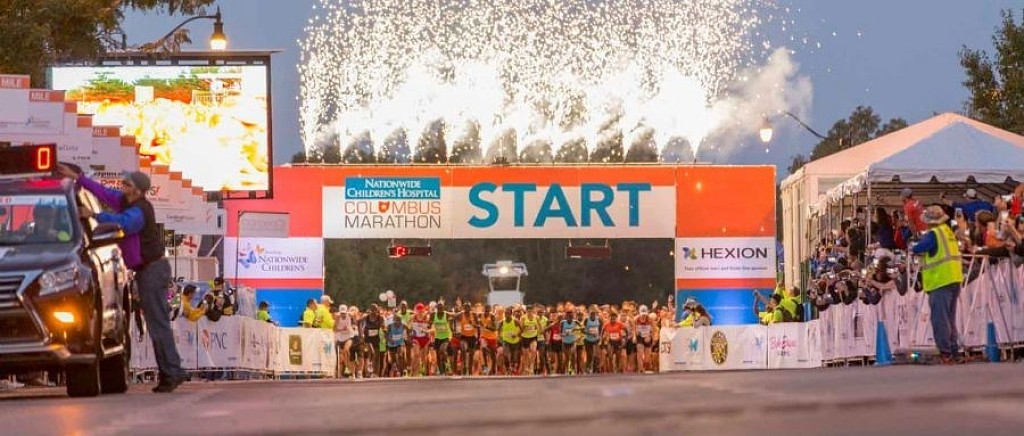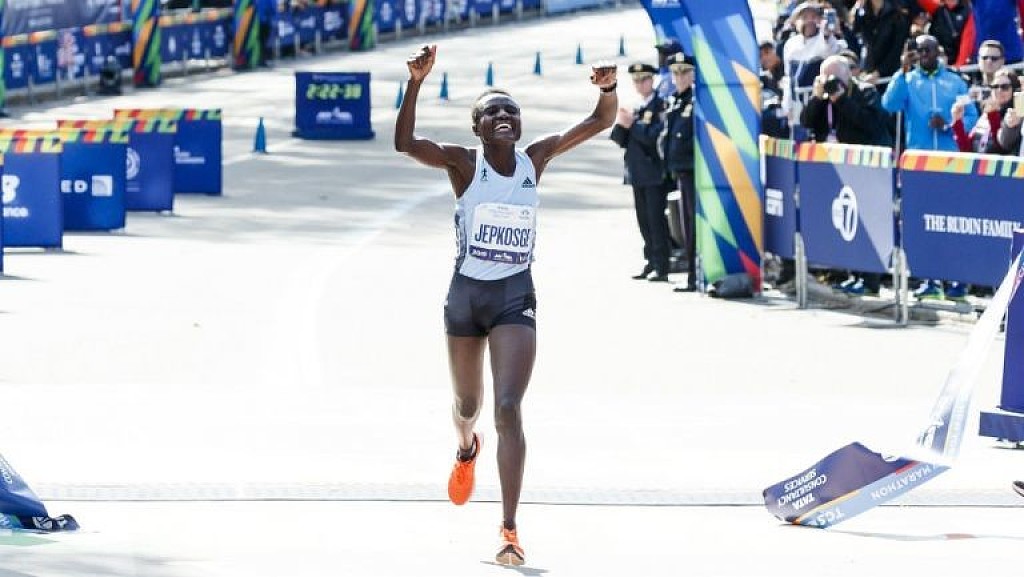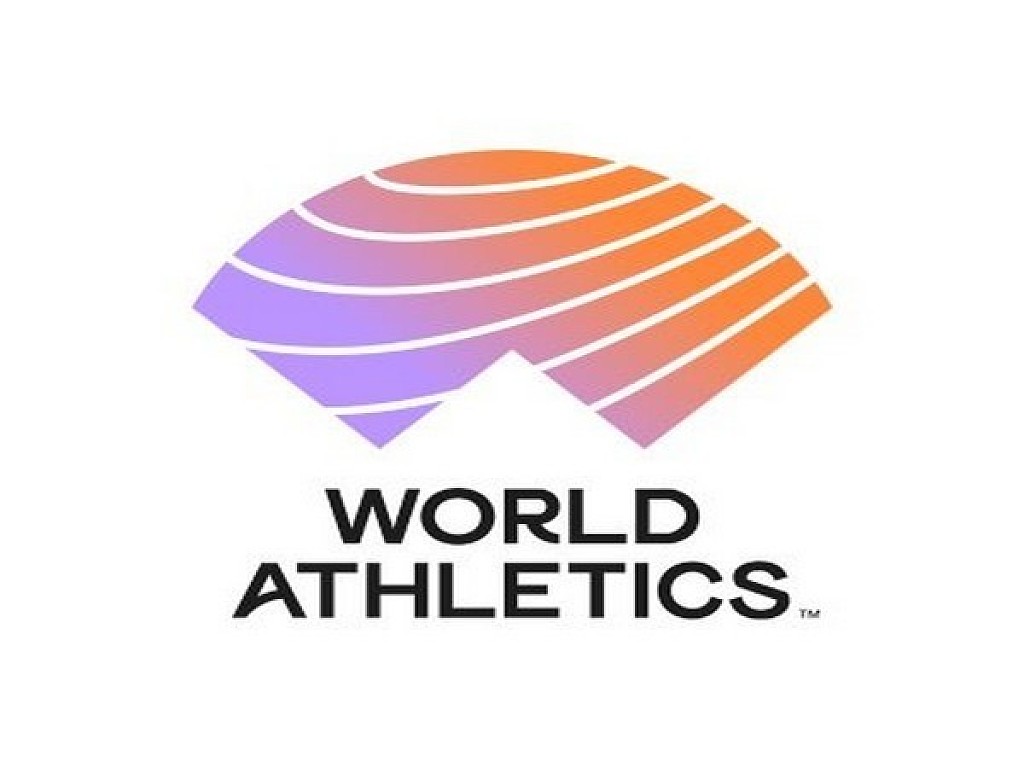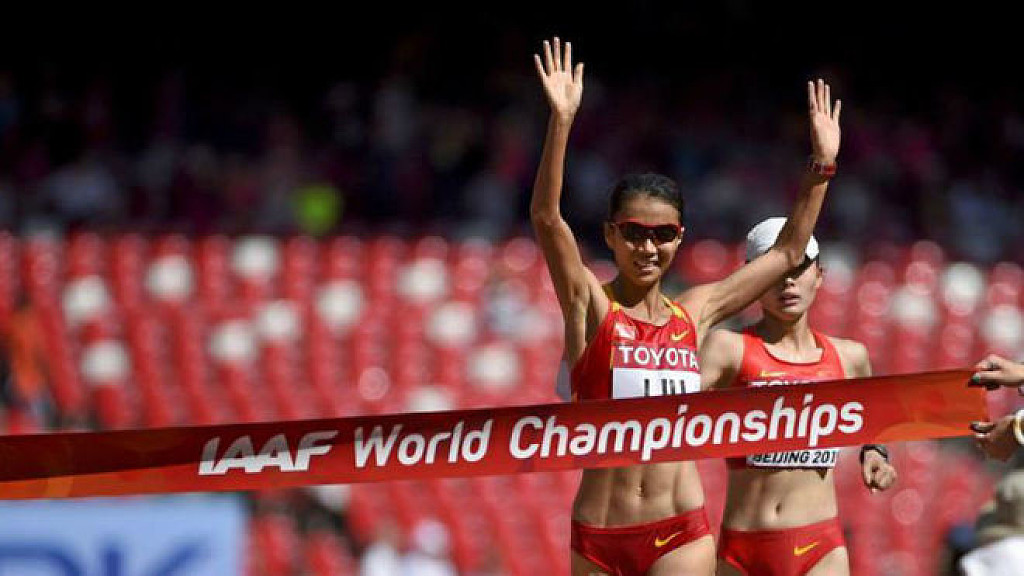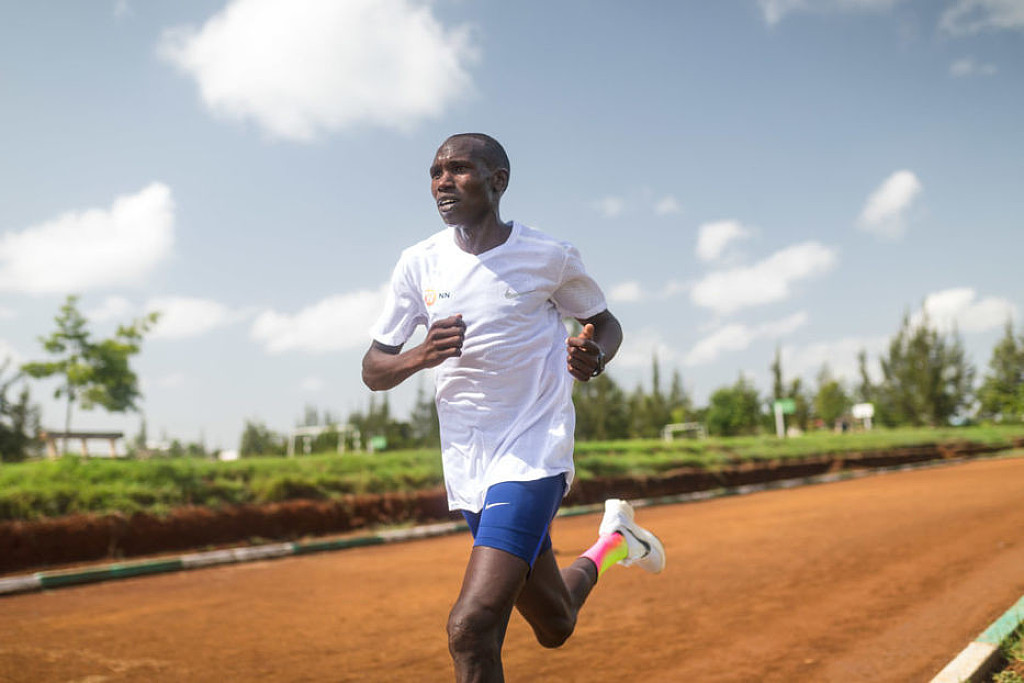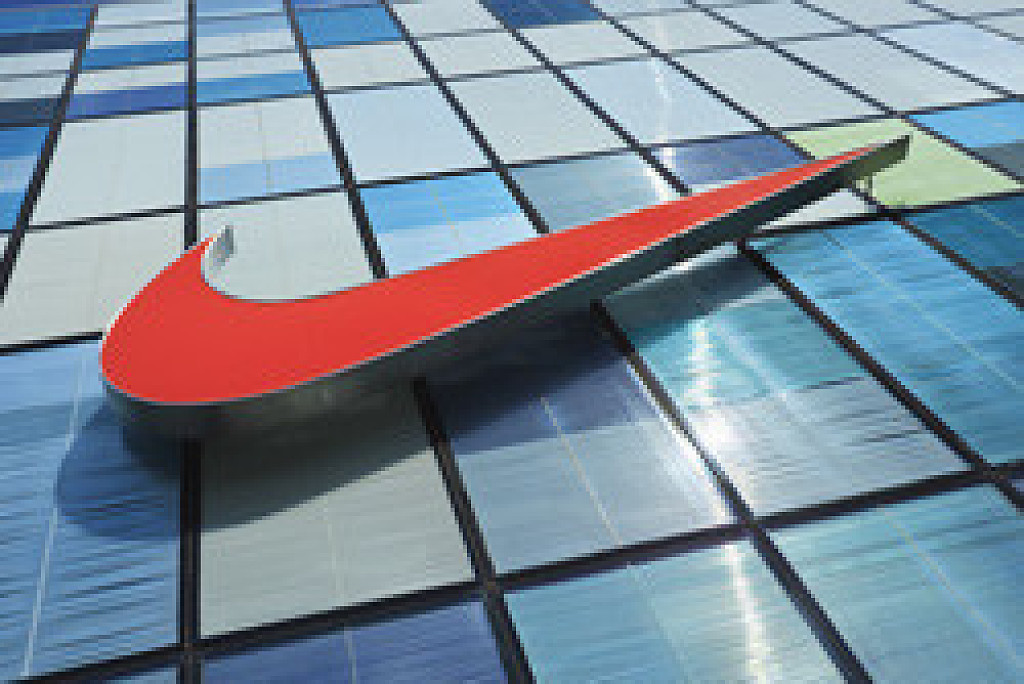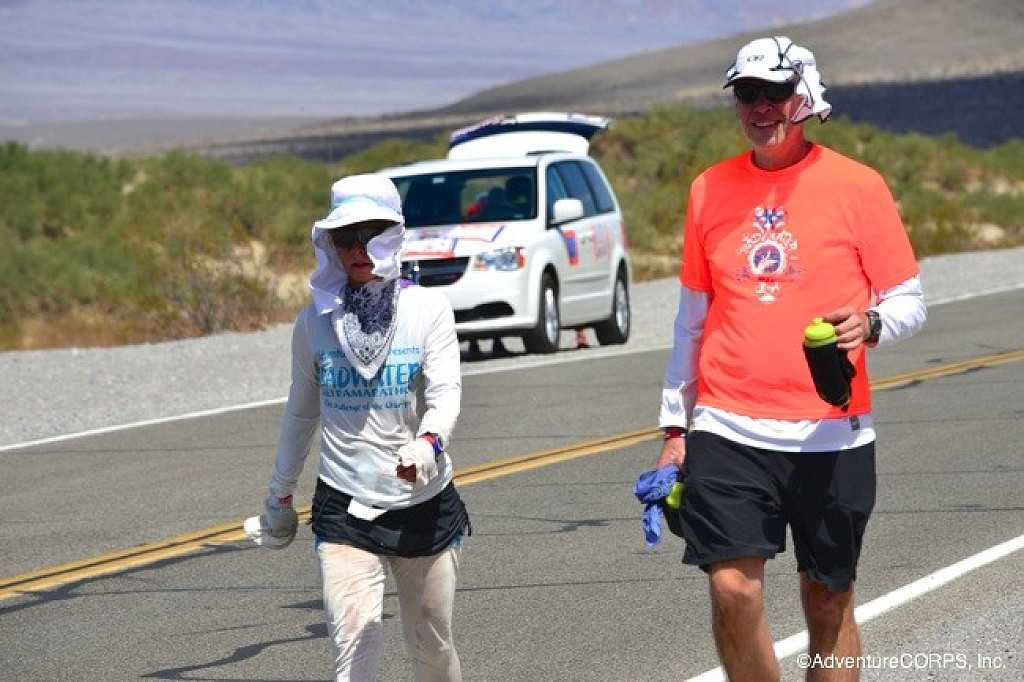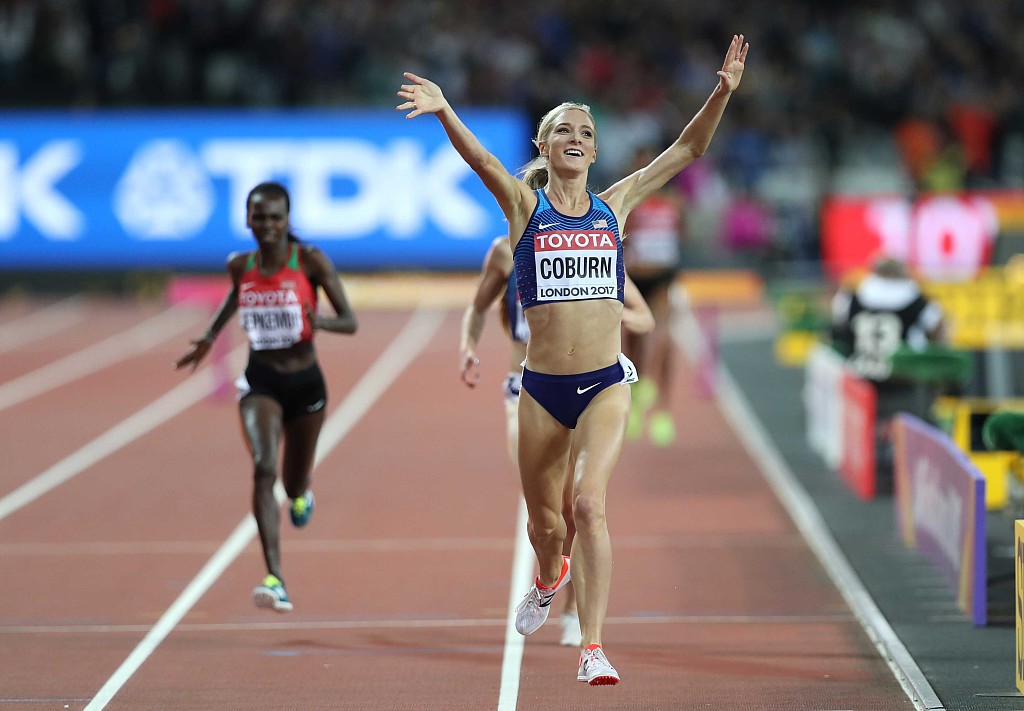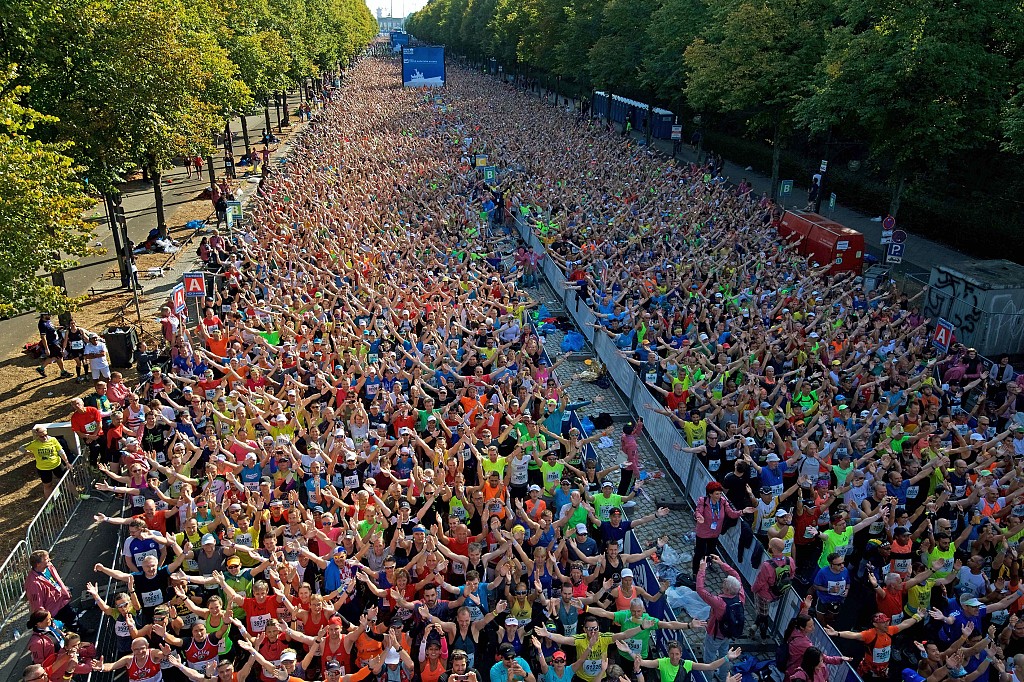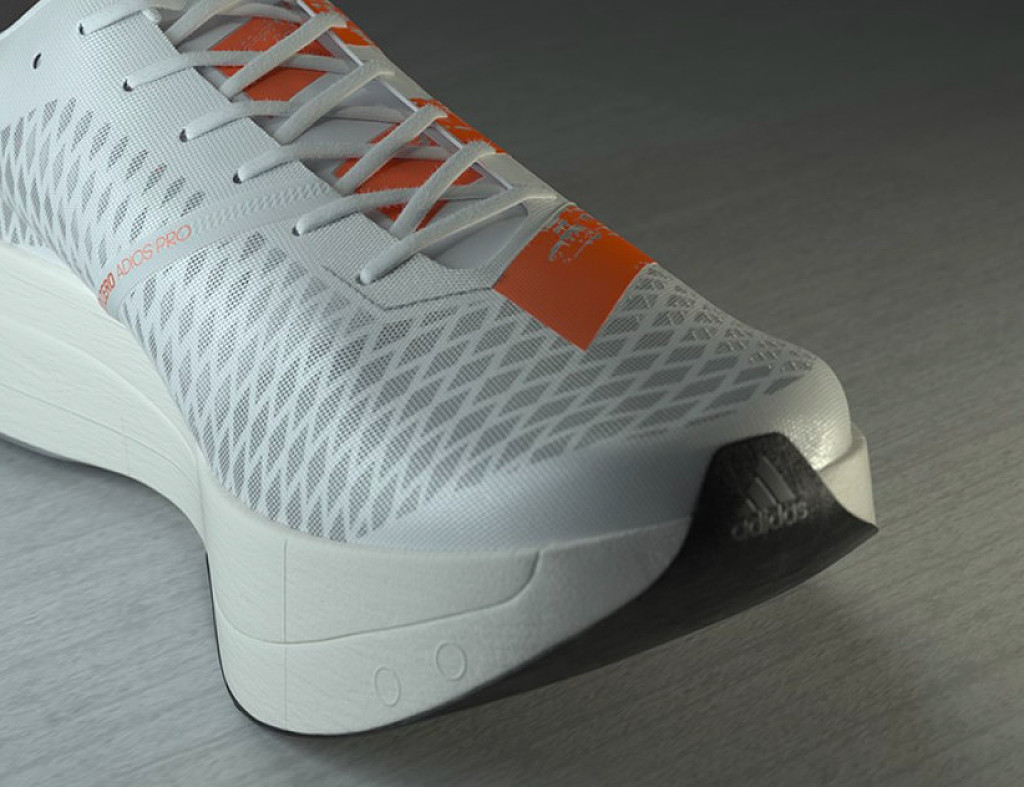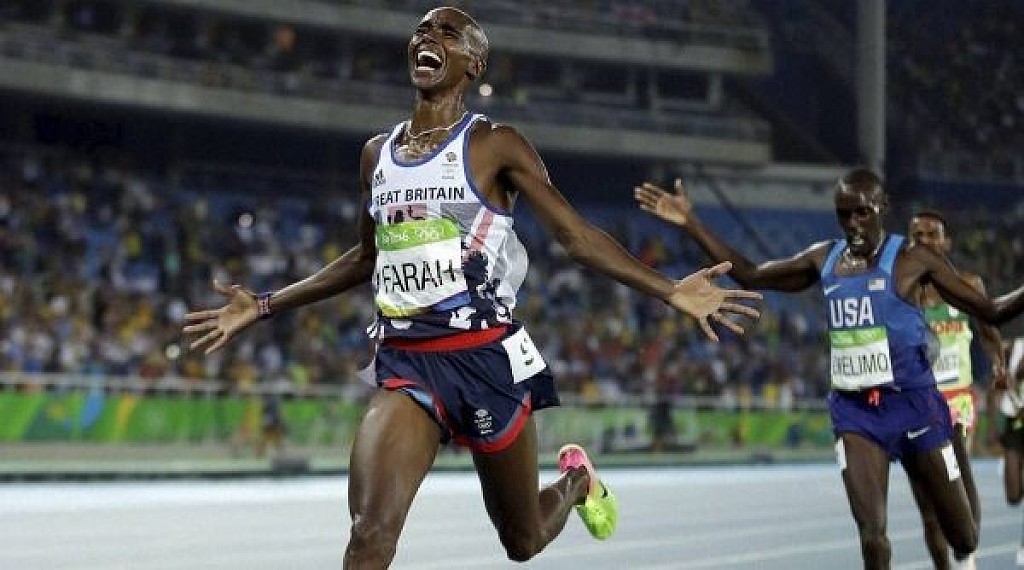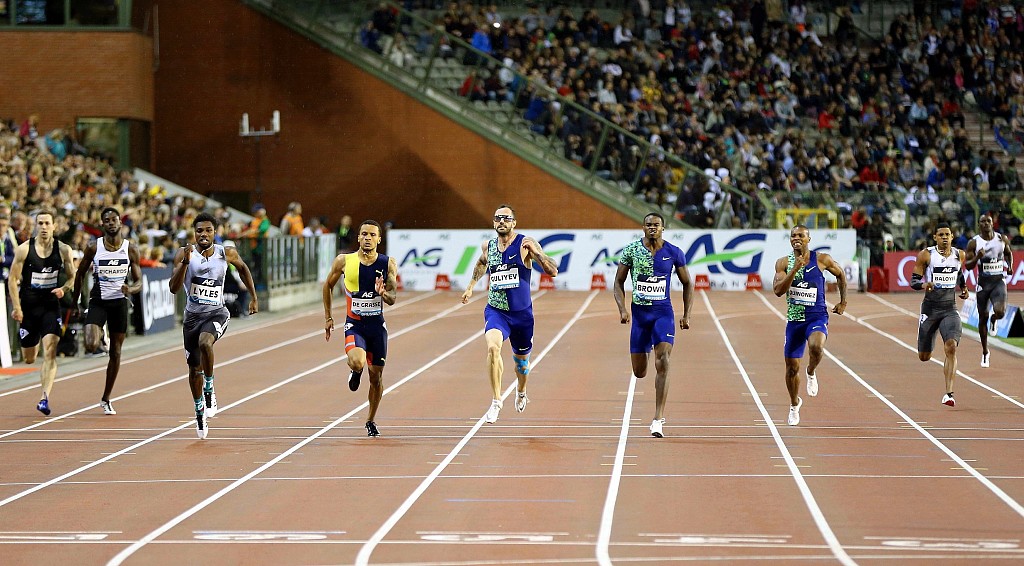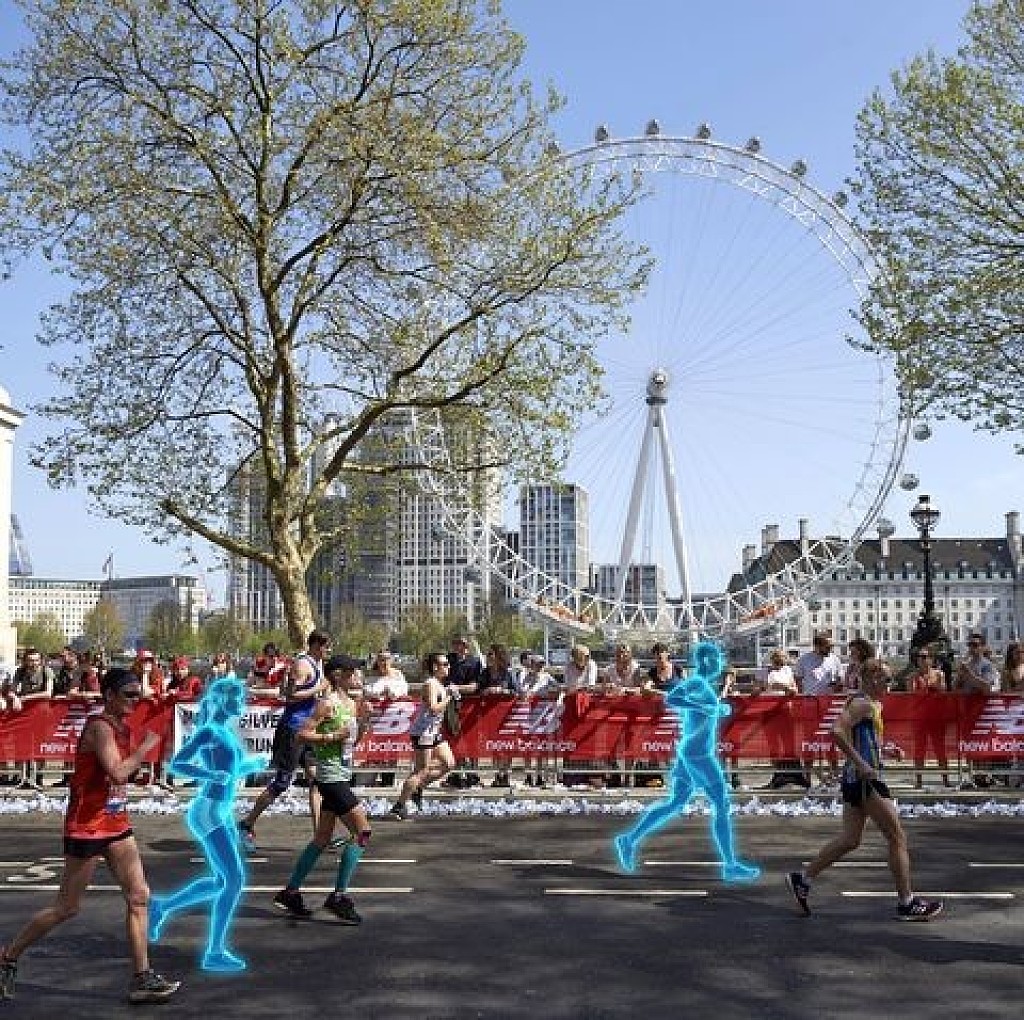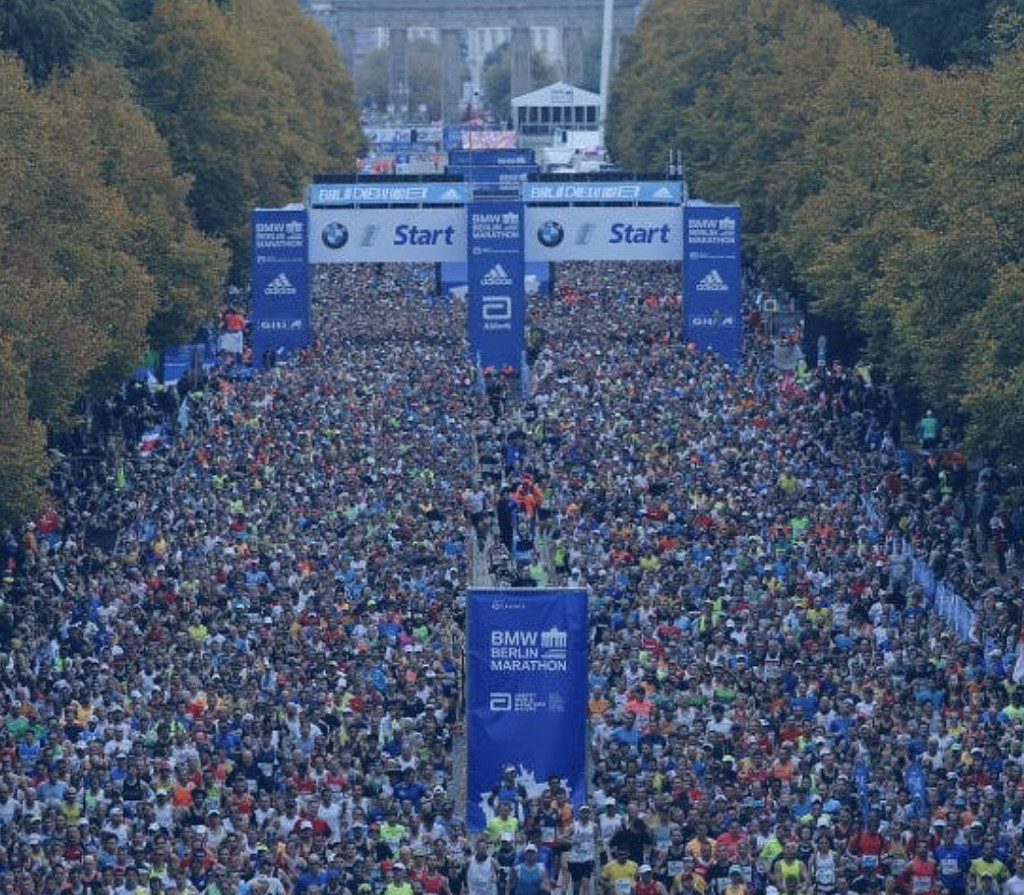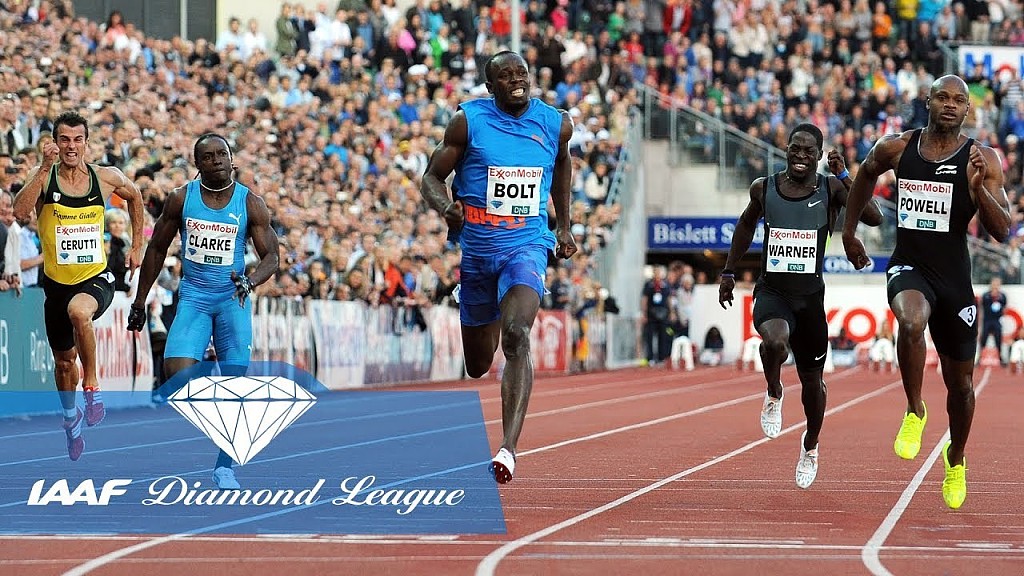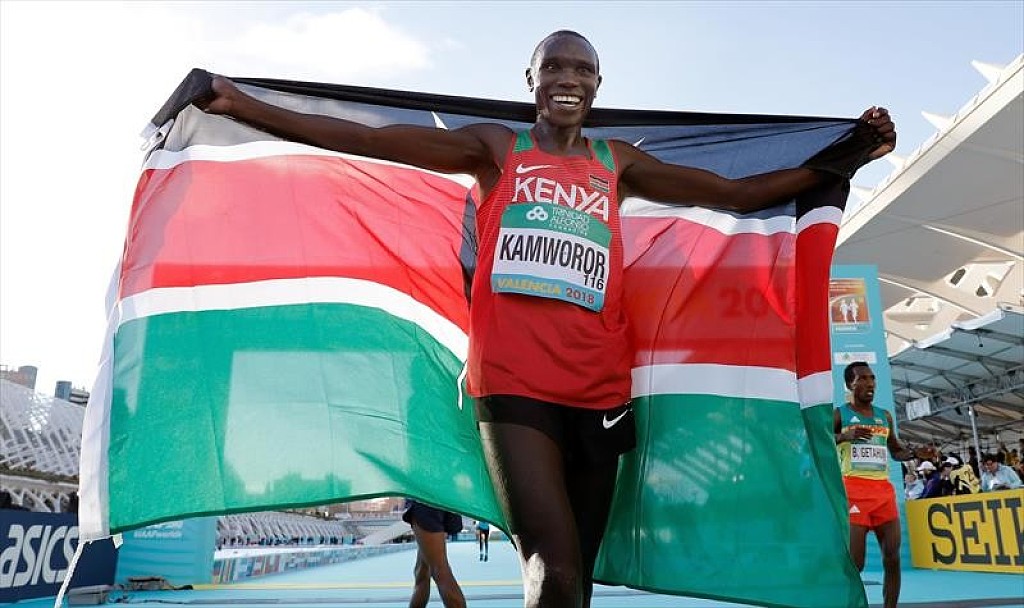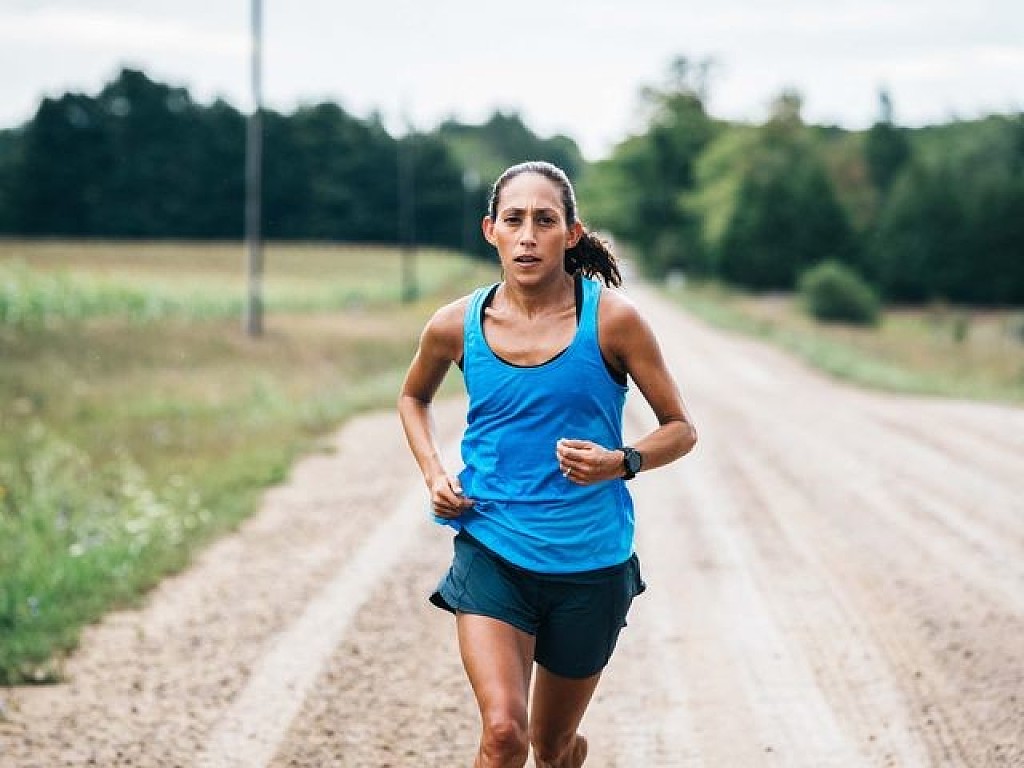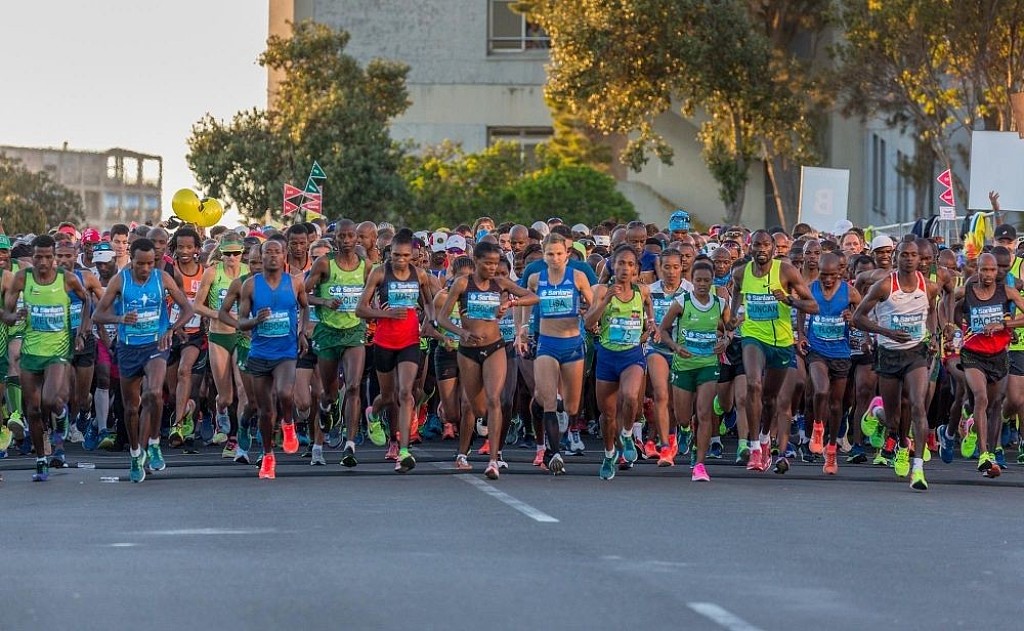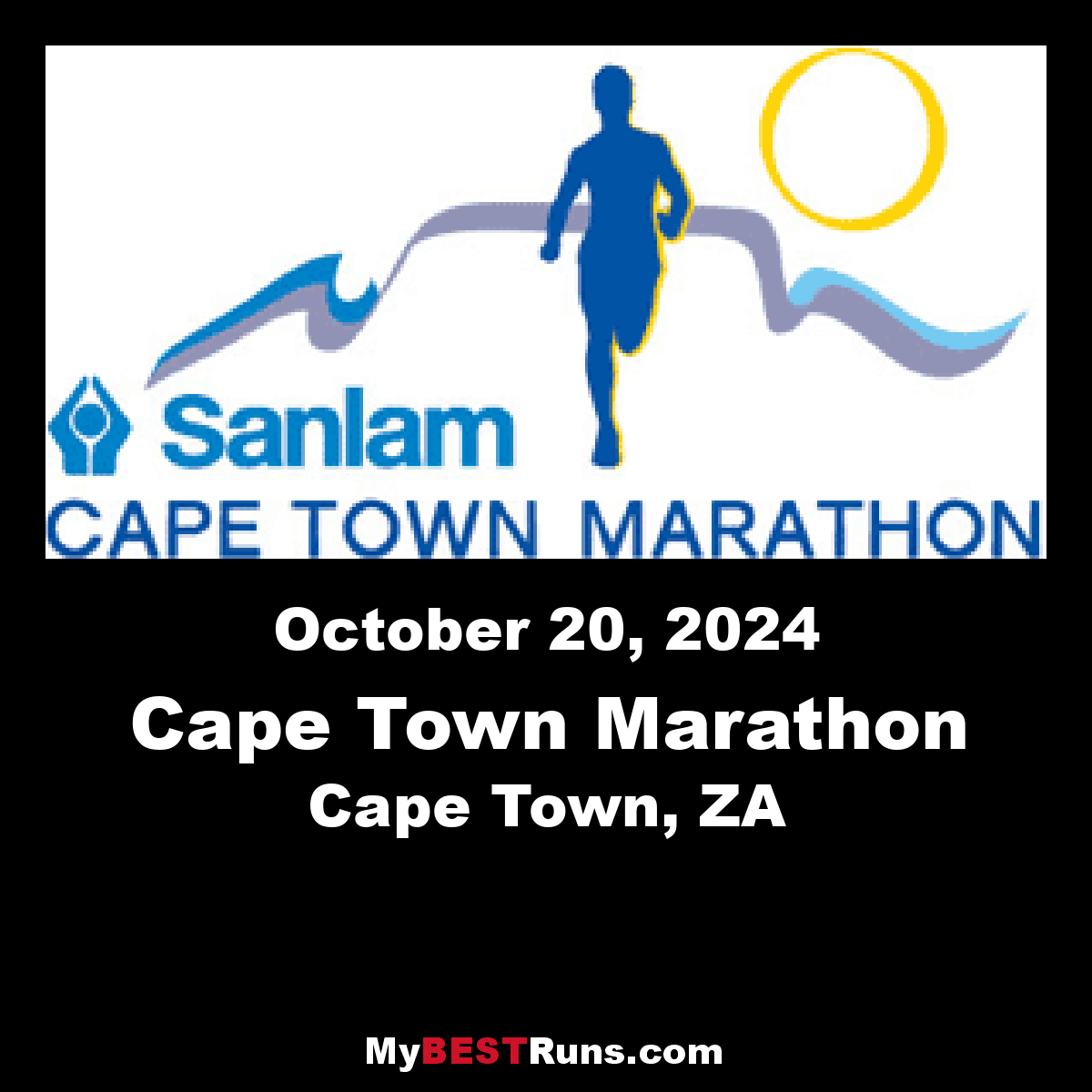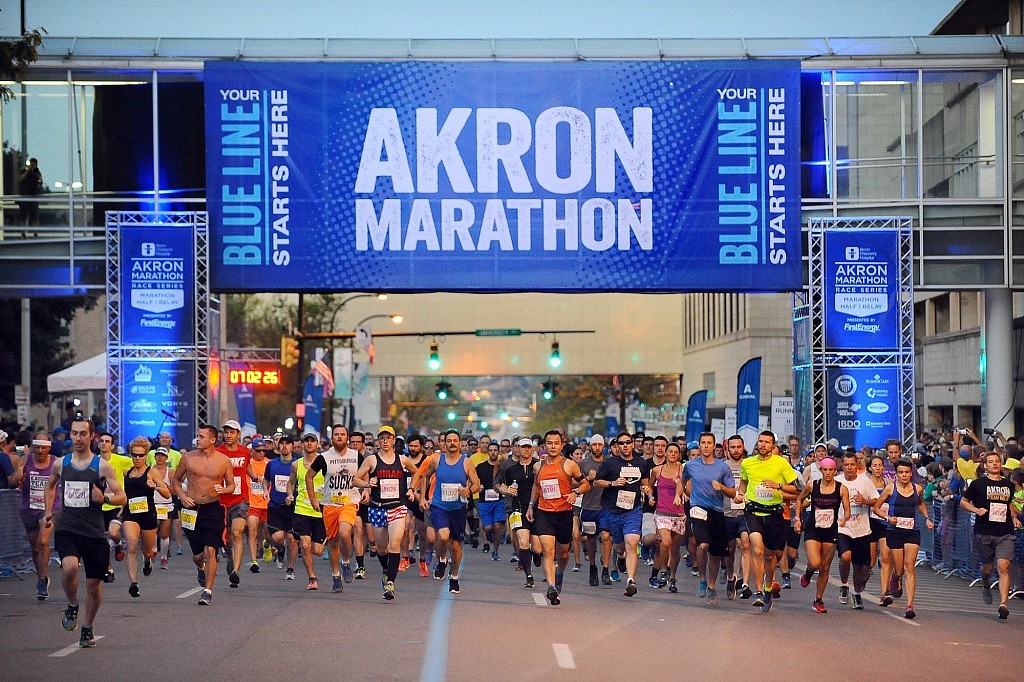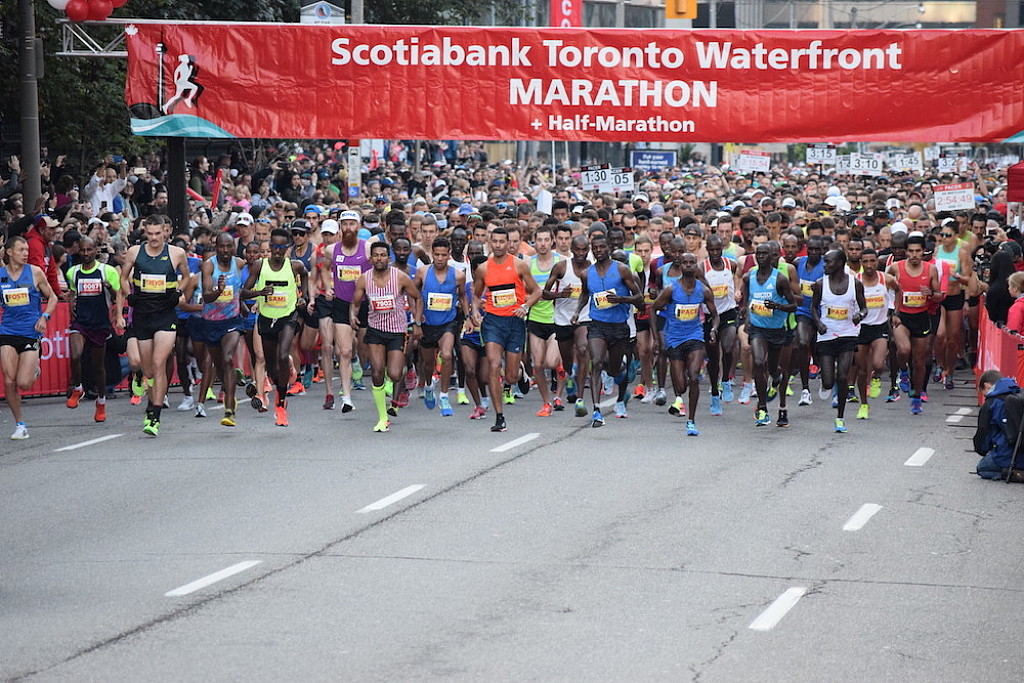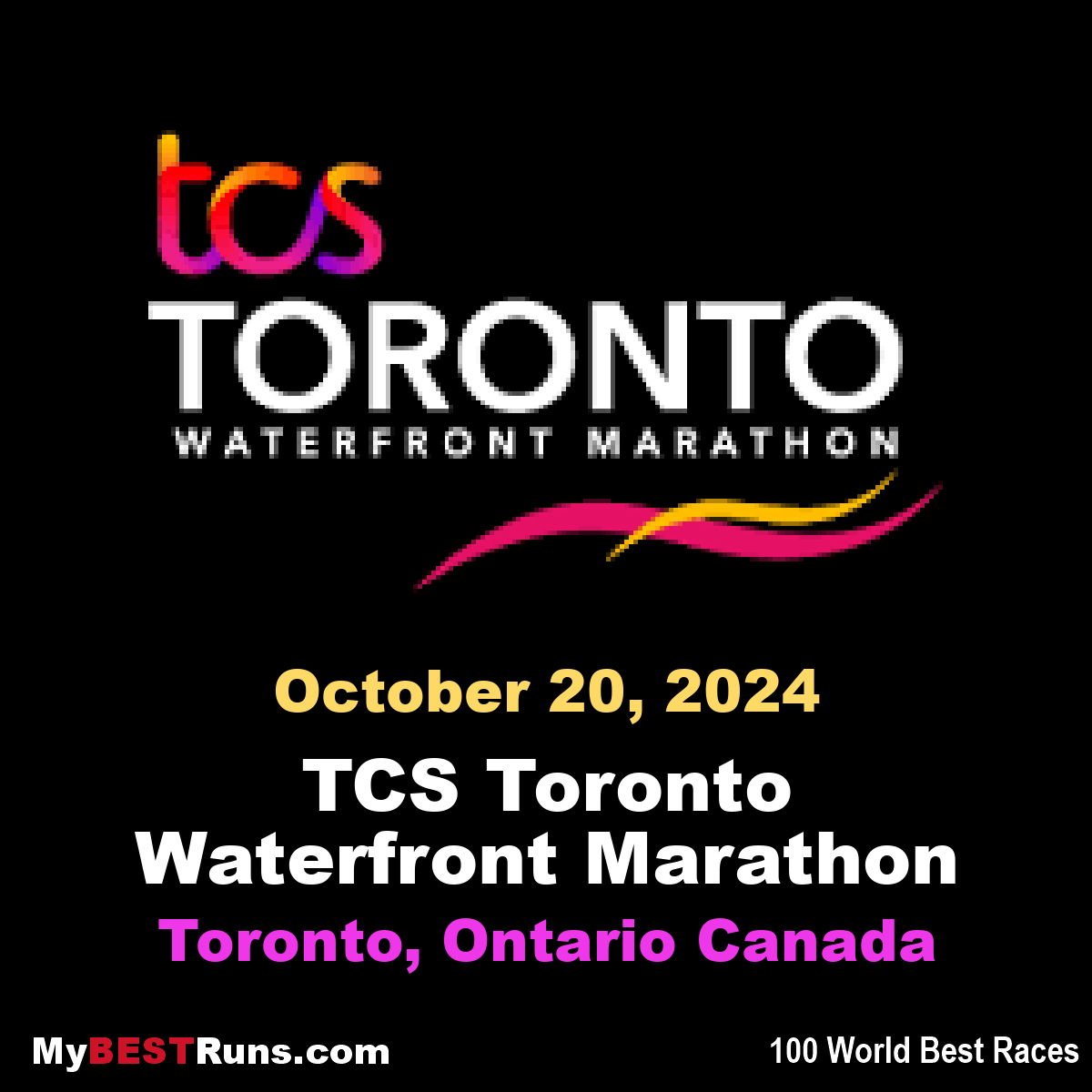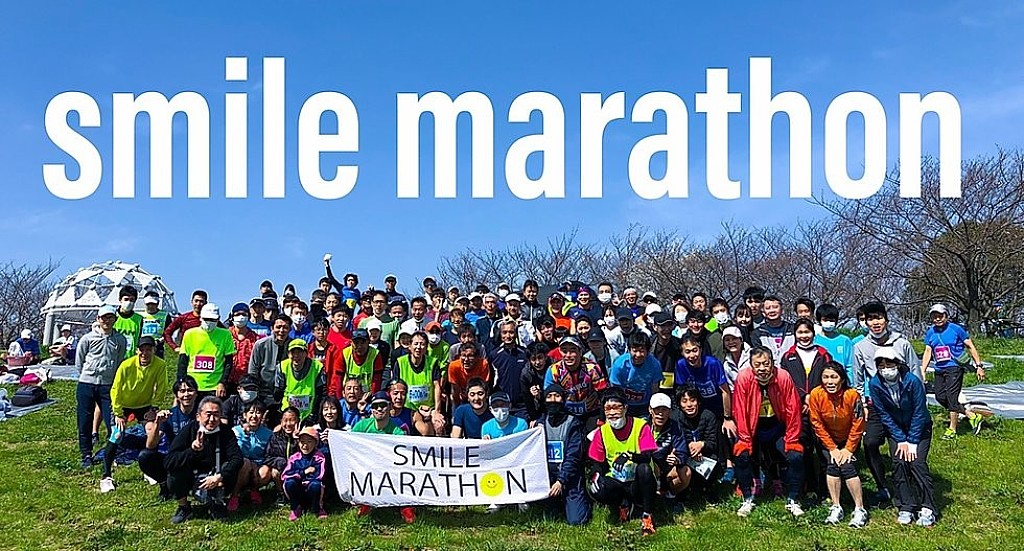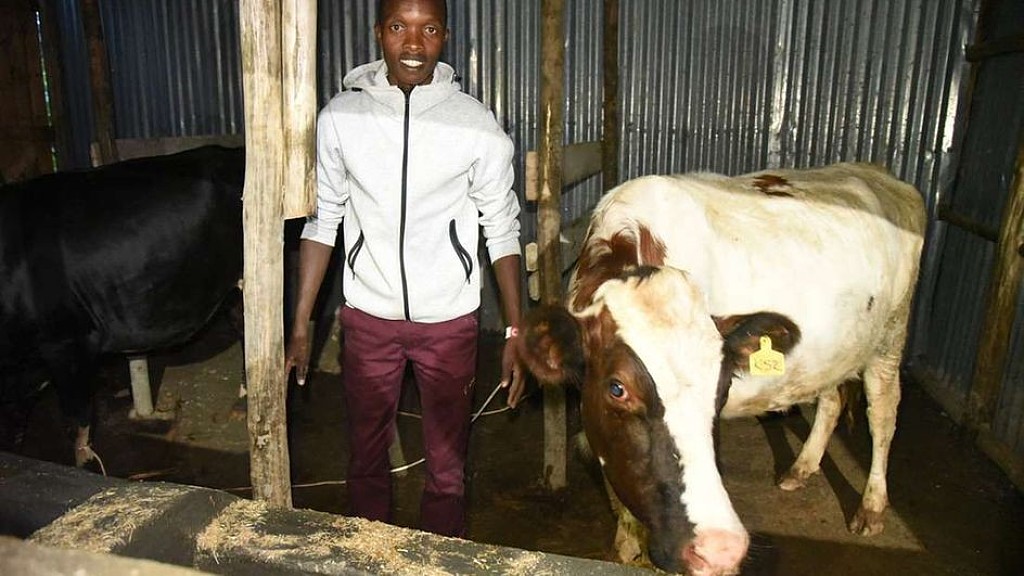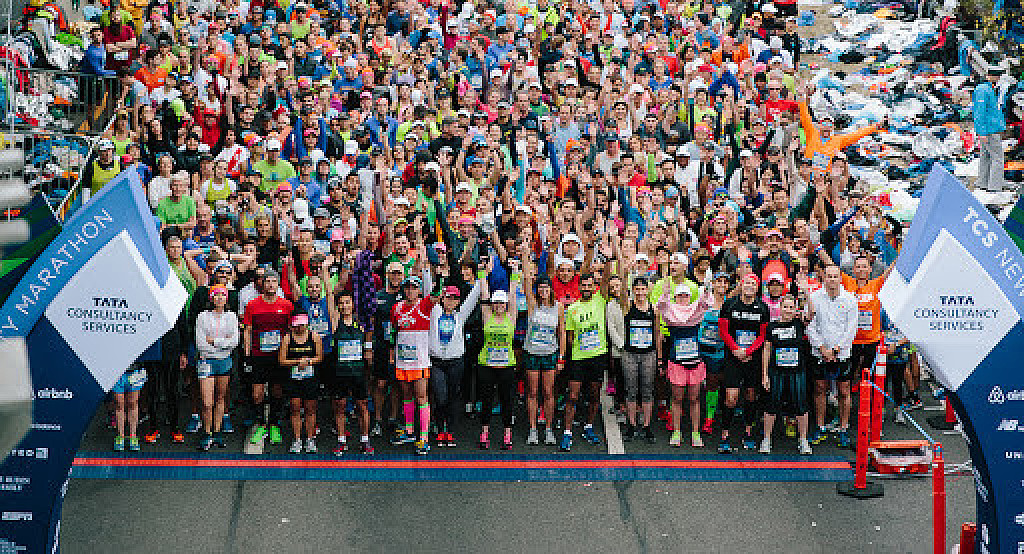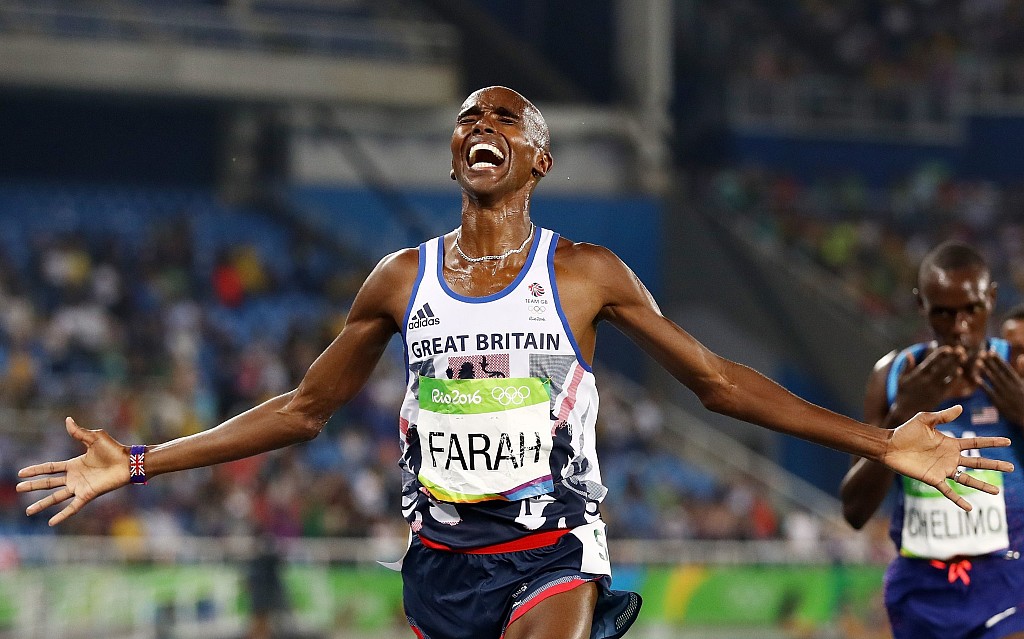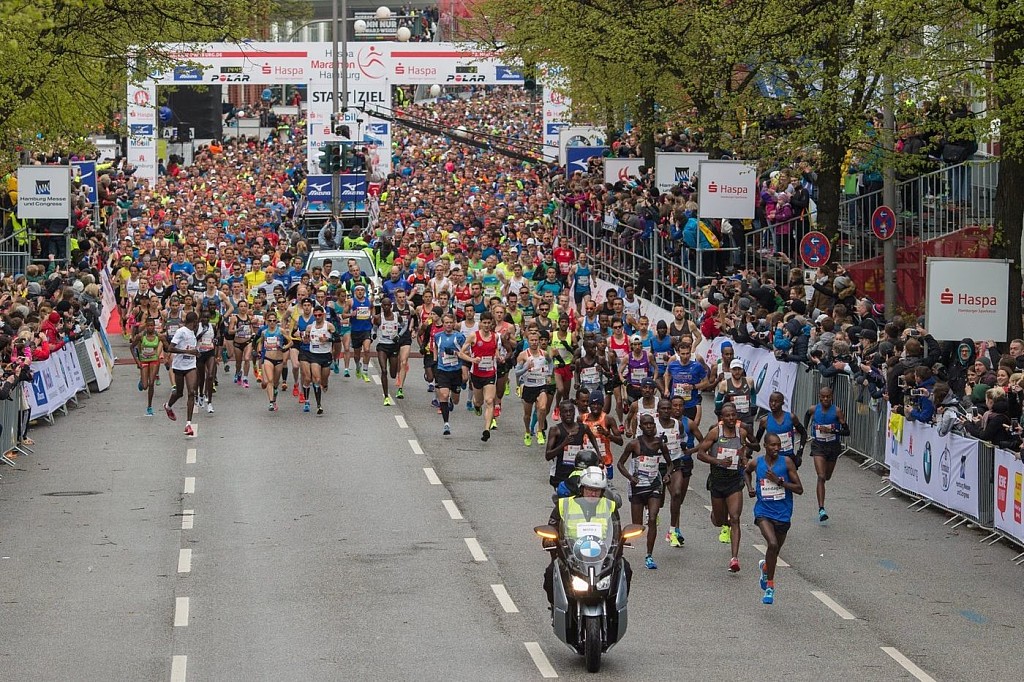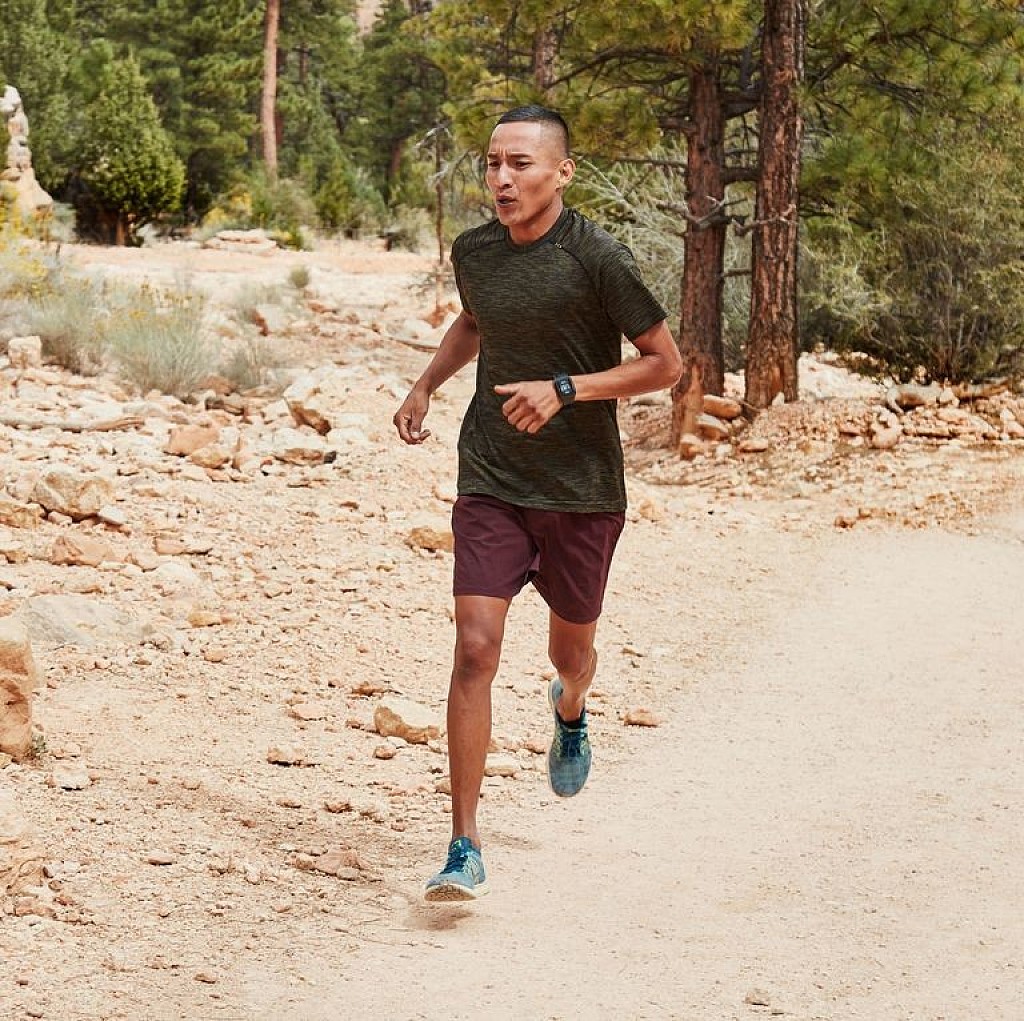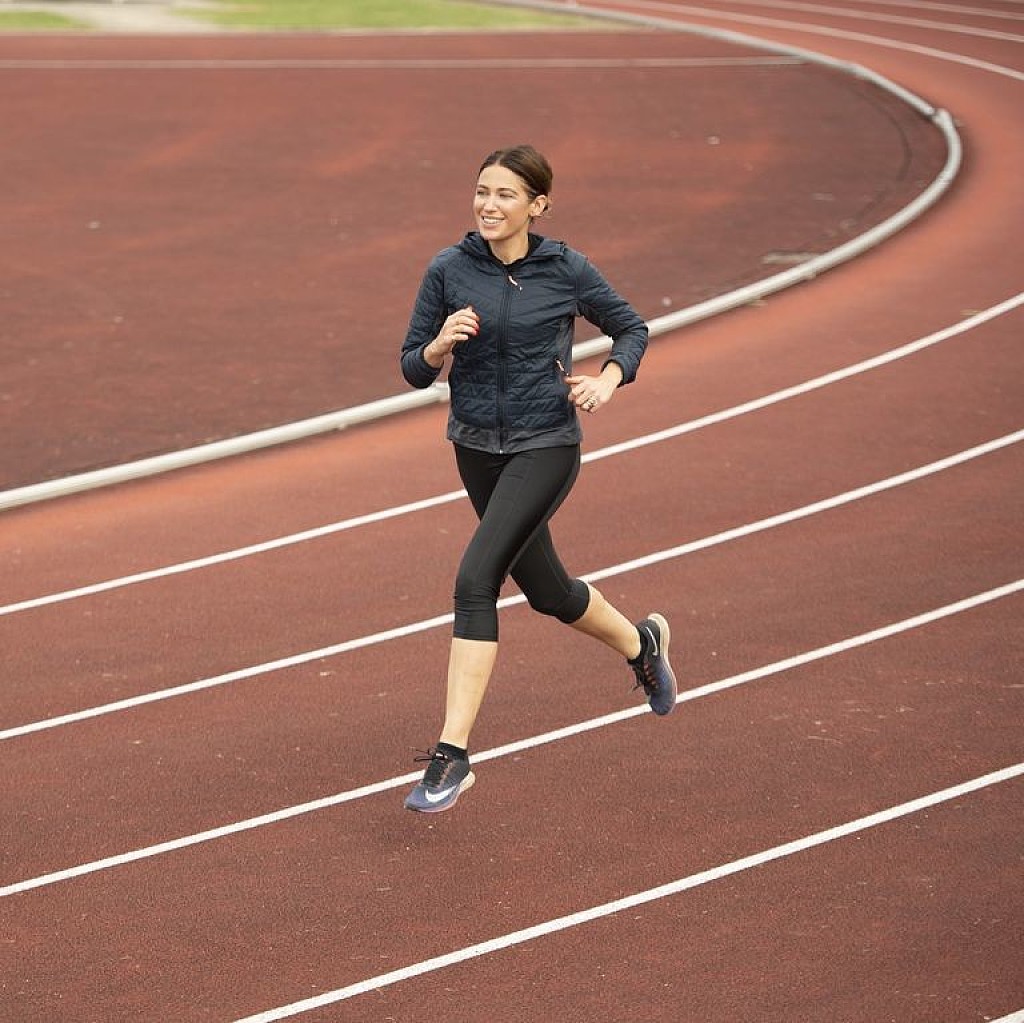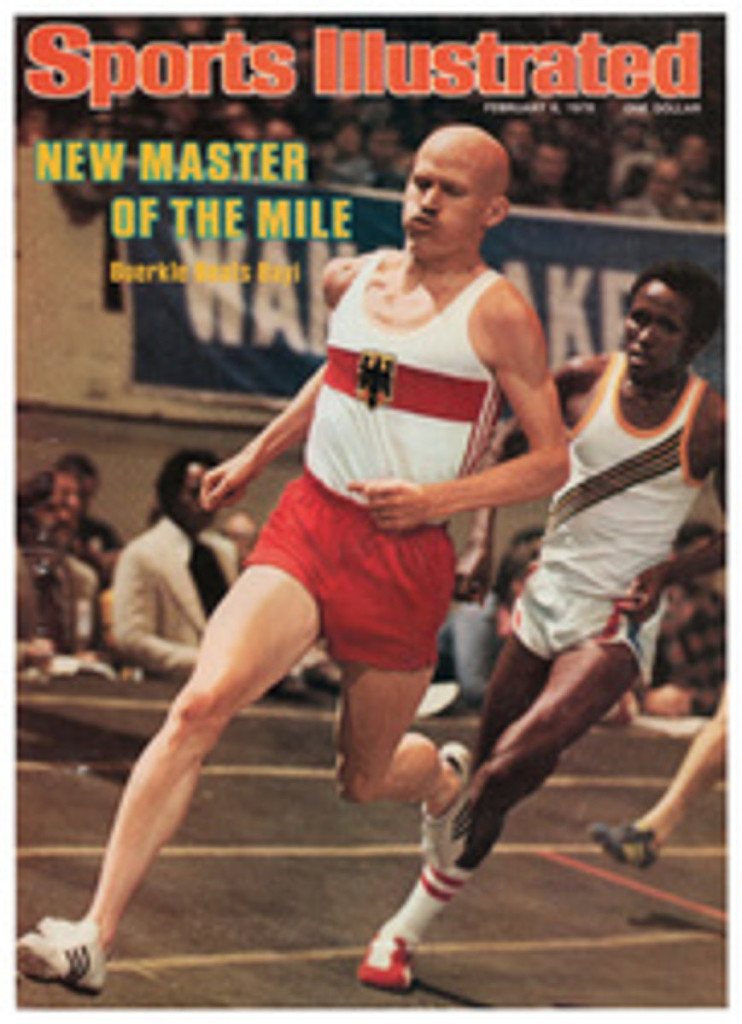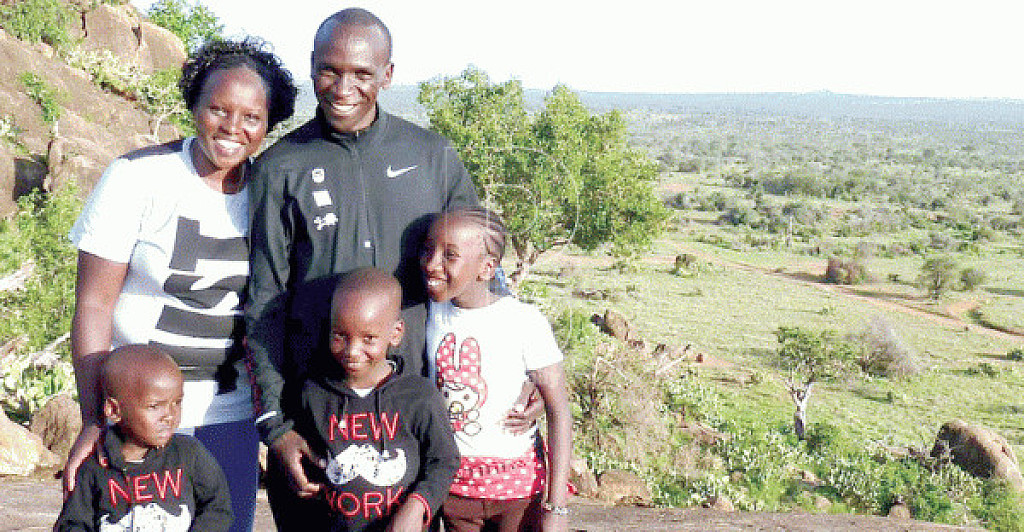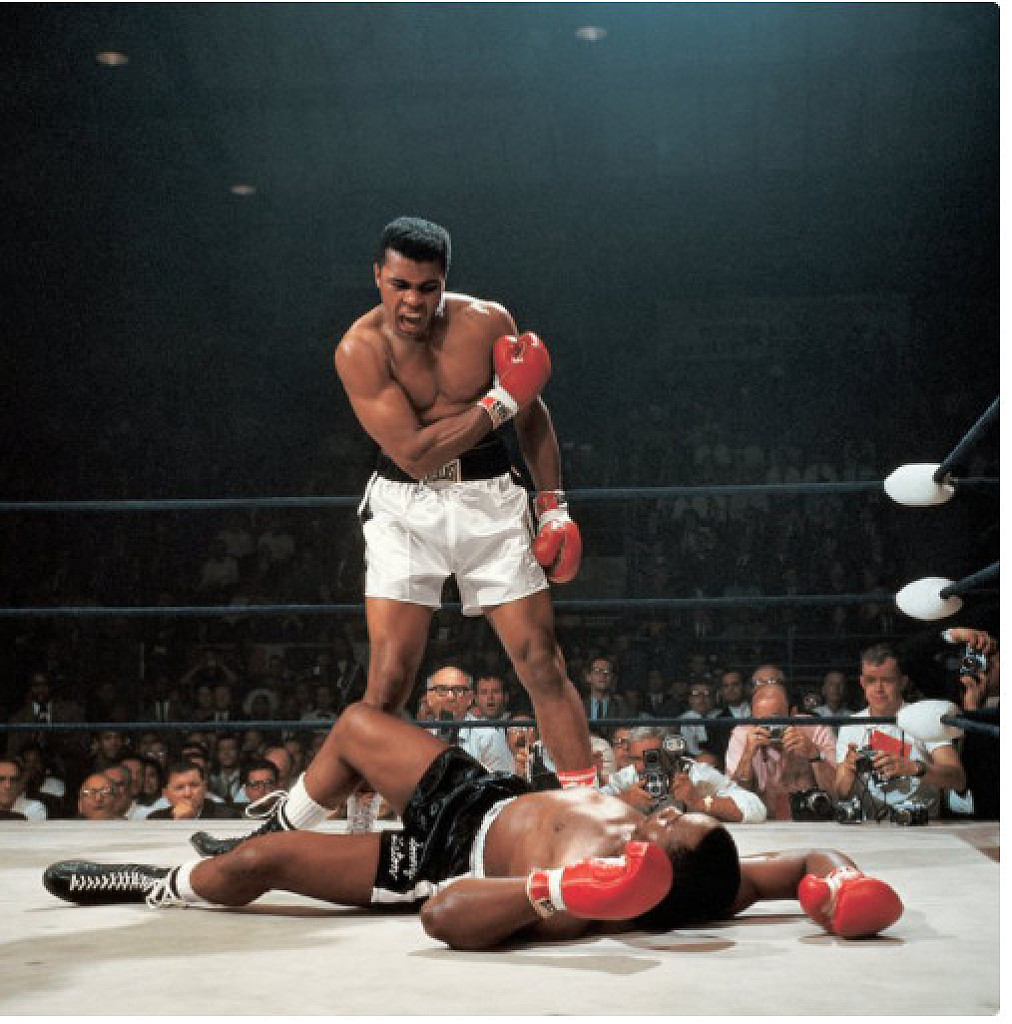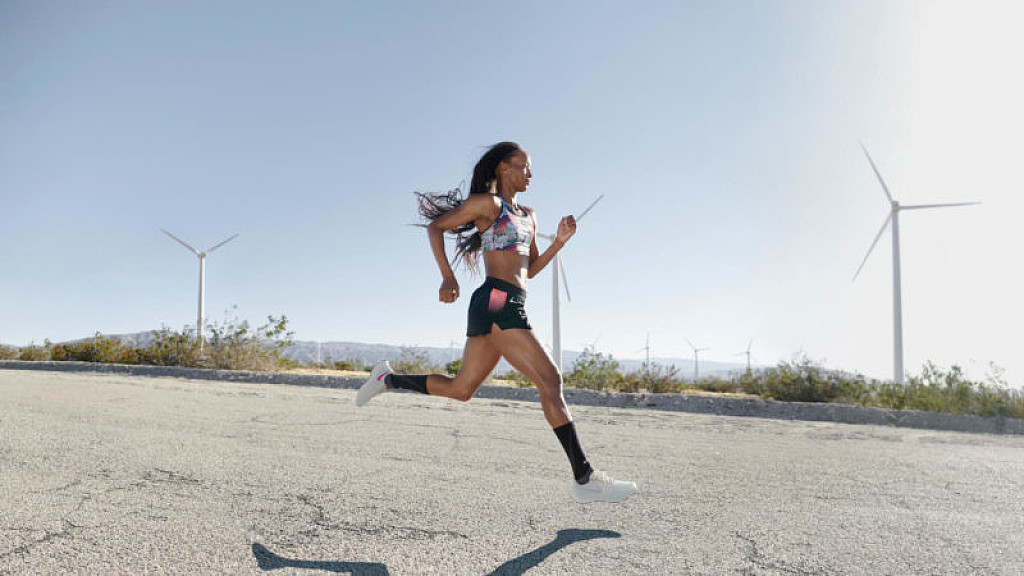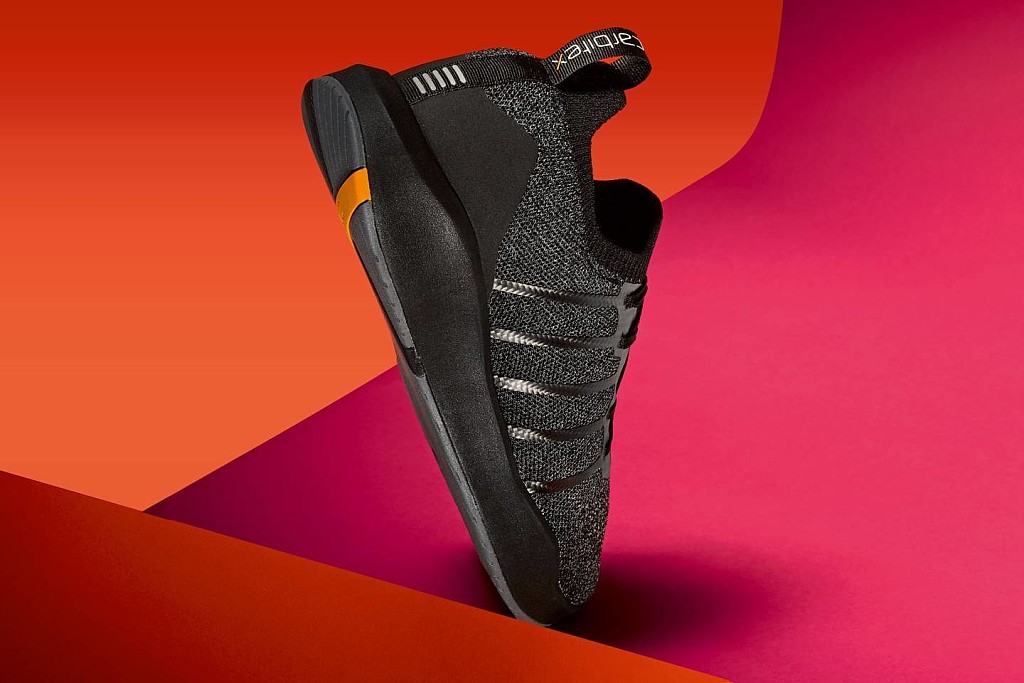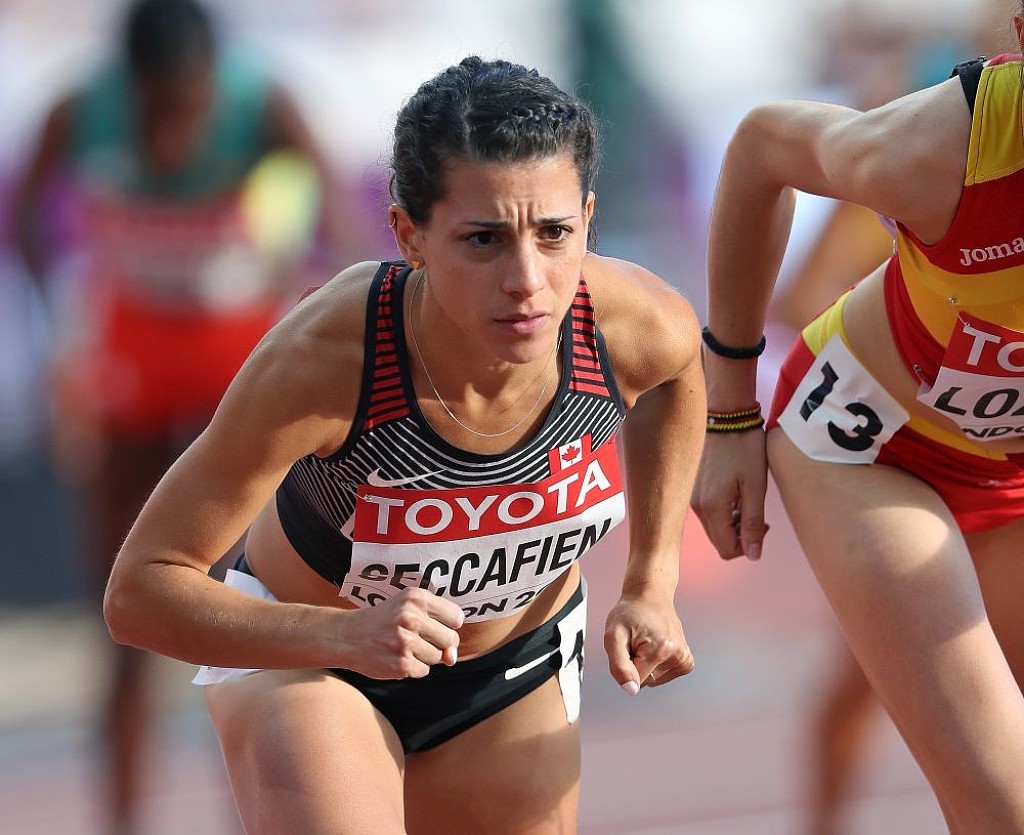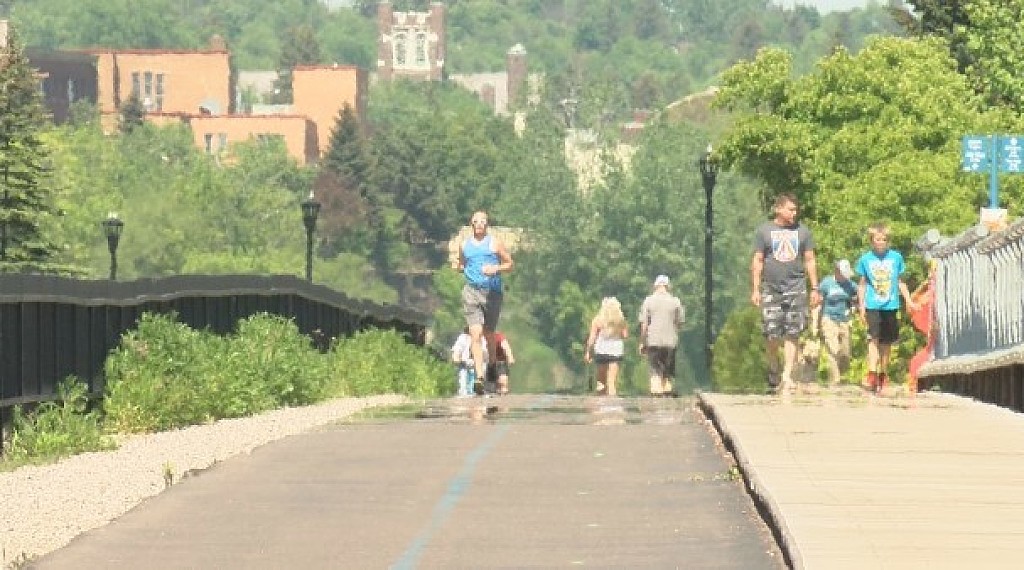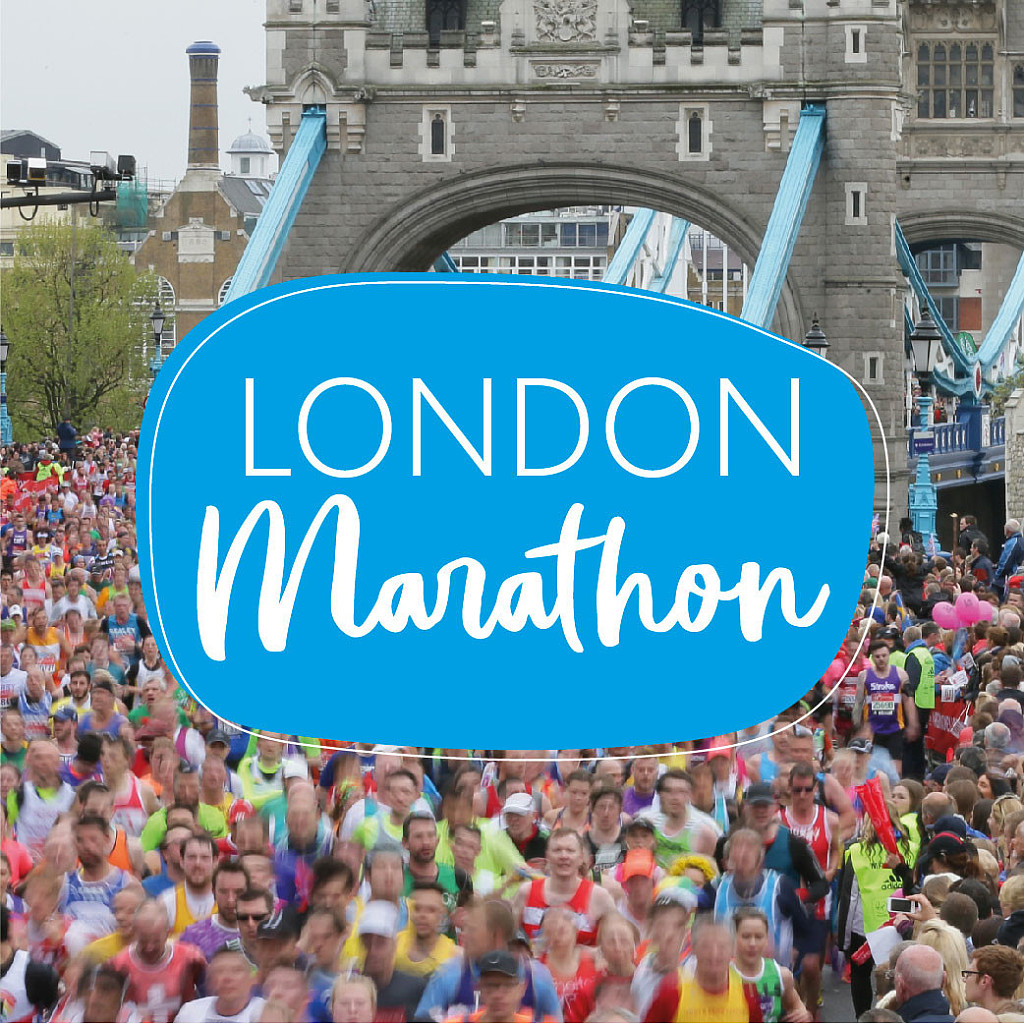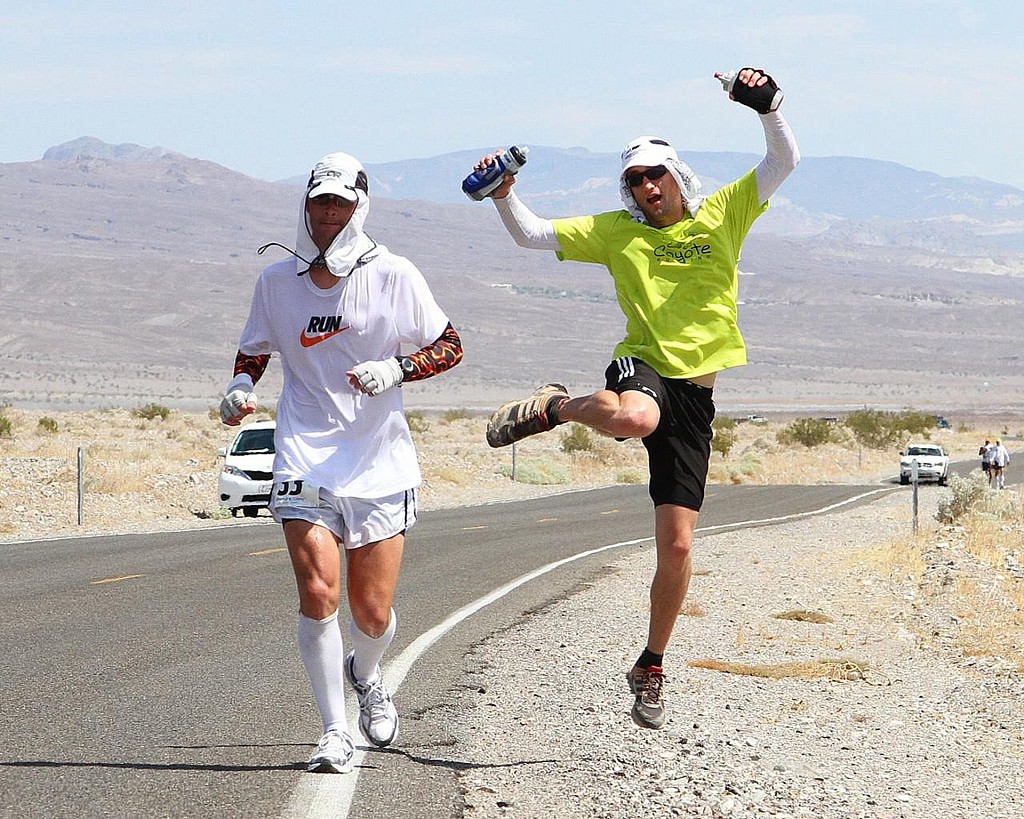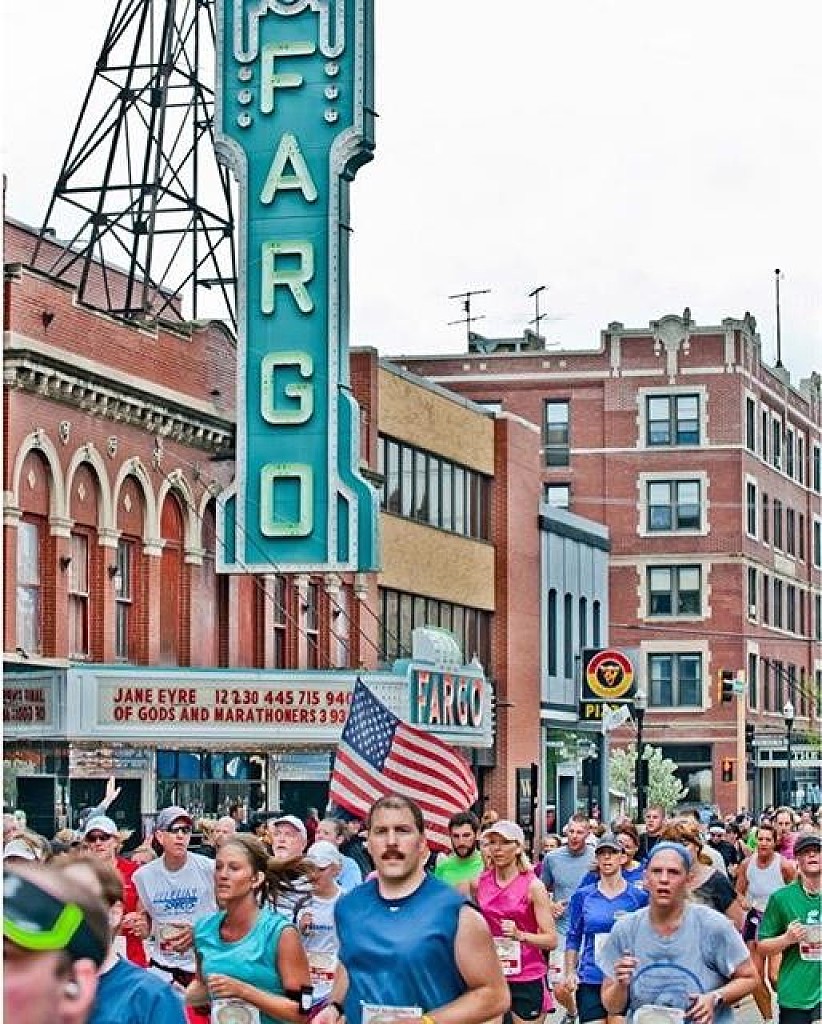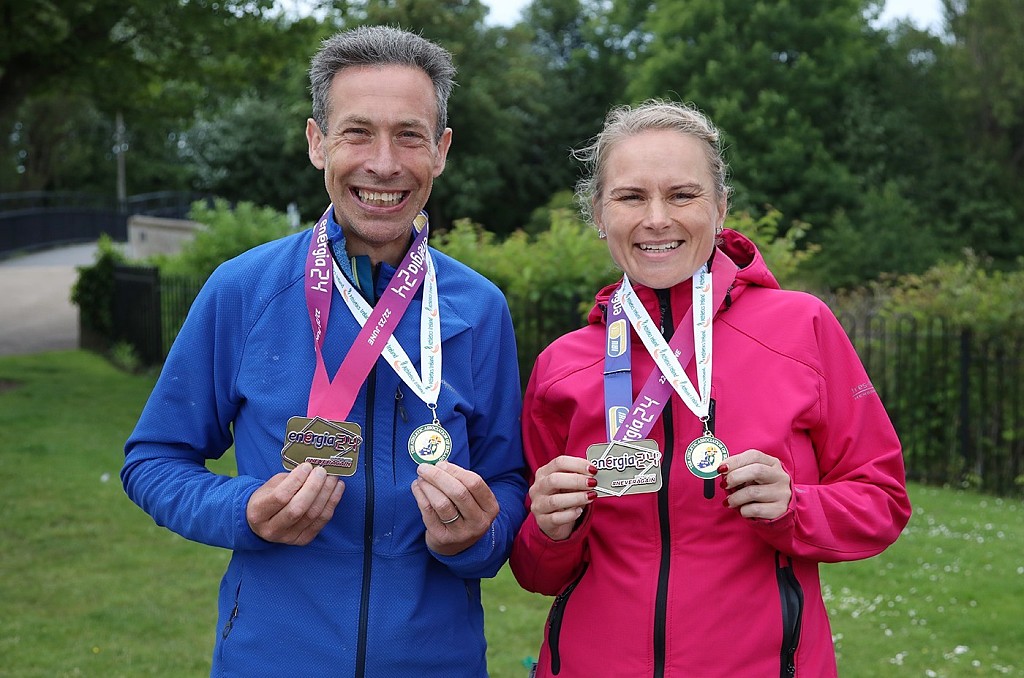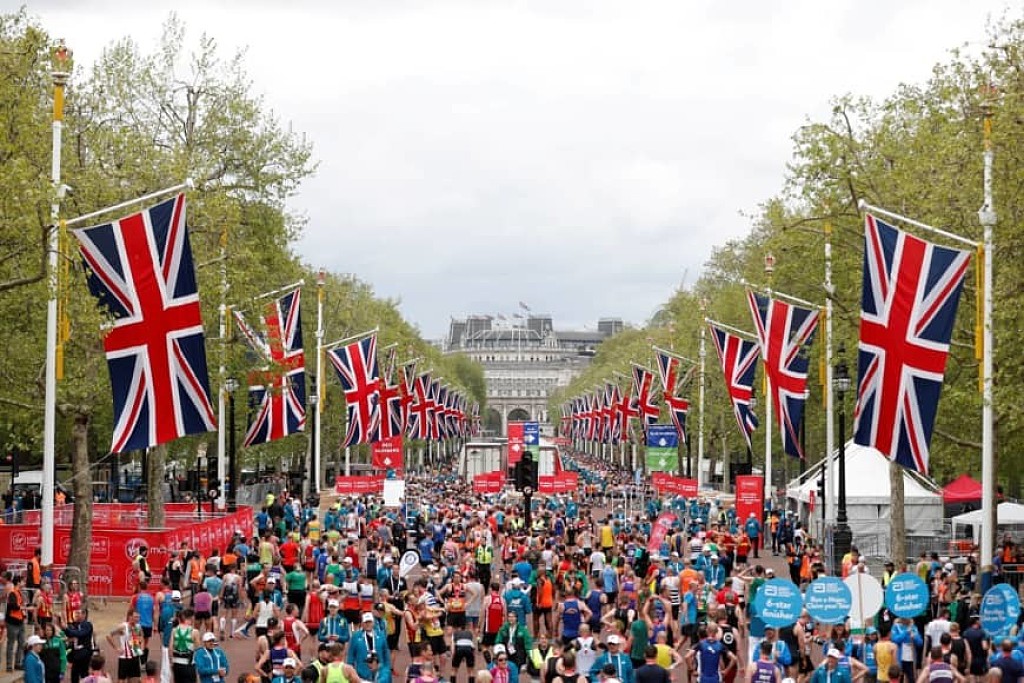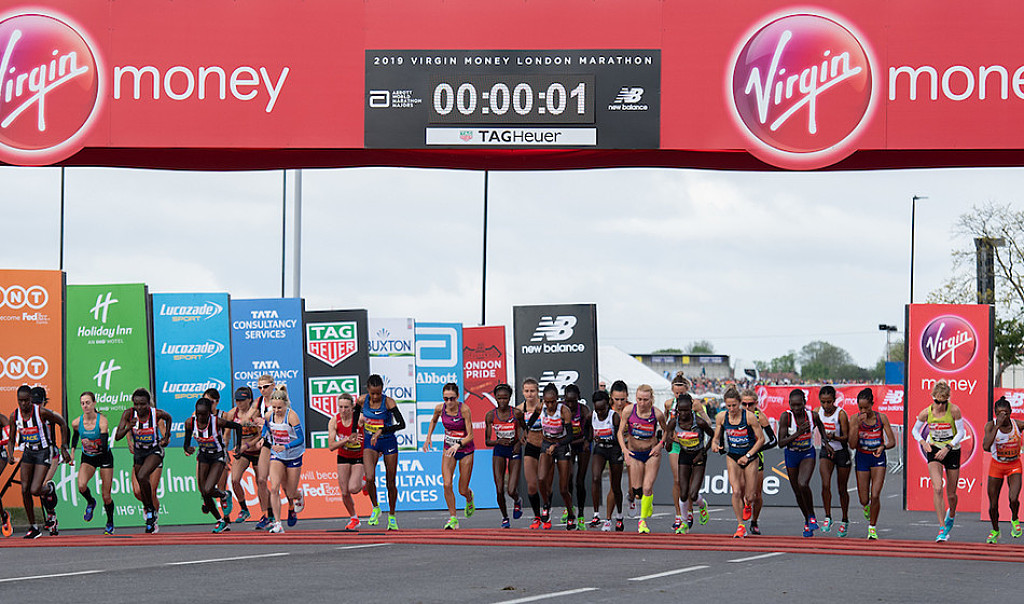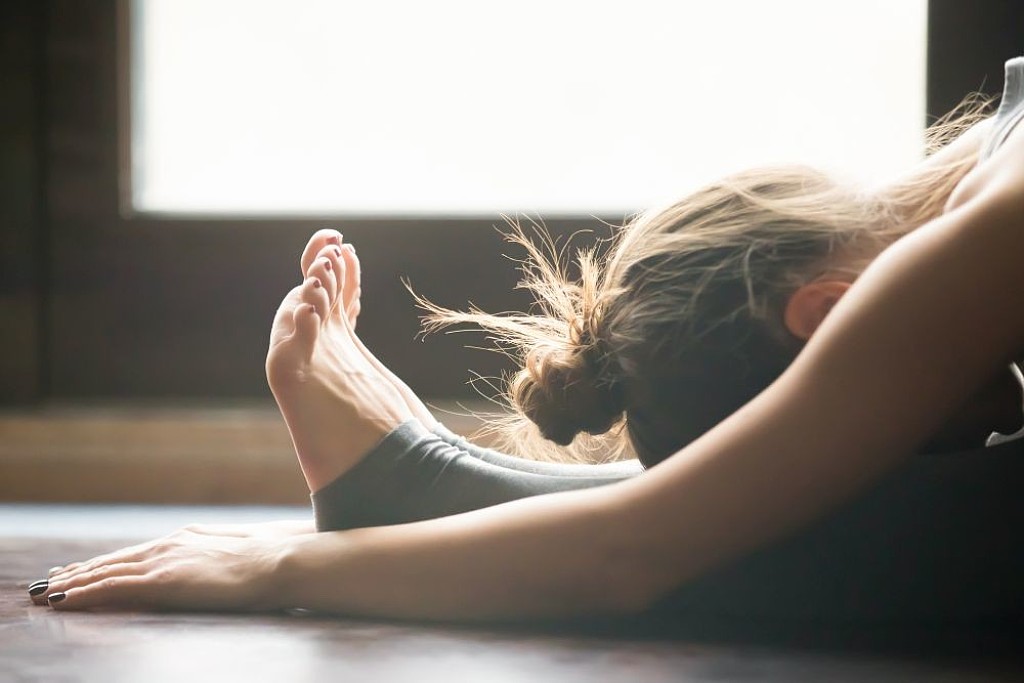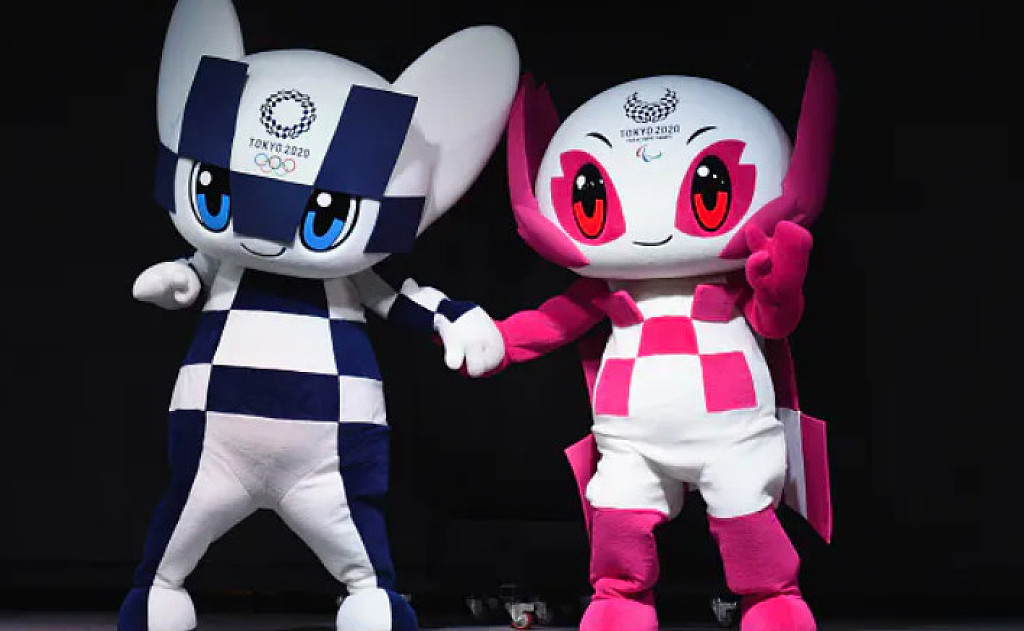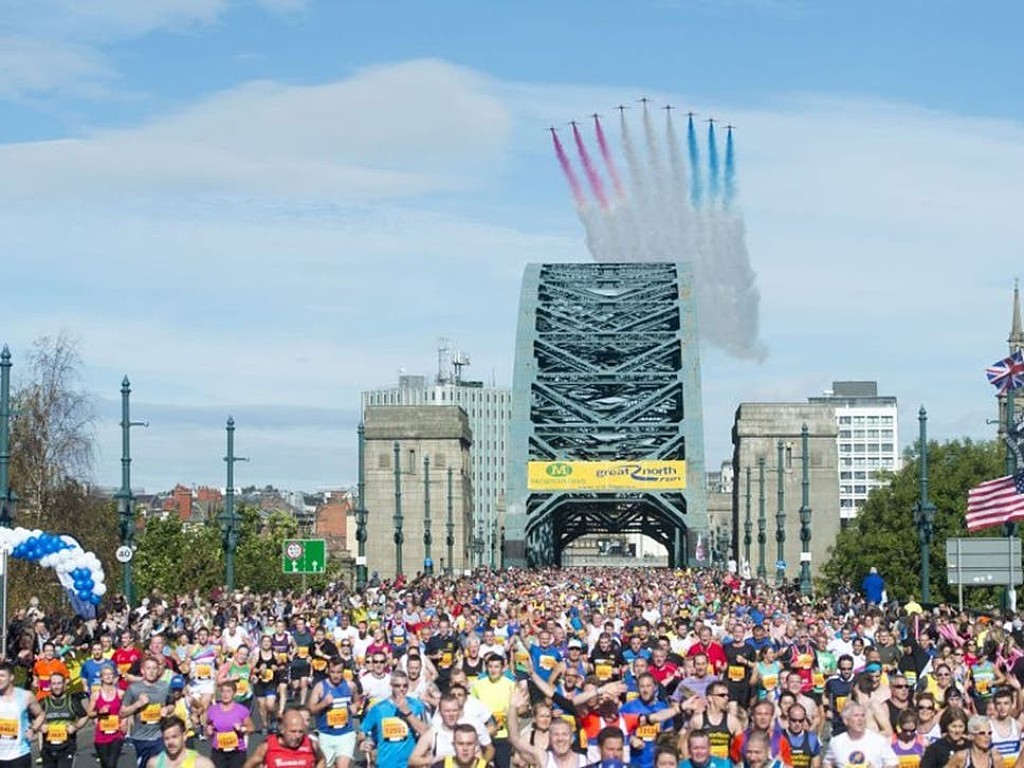Running News Daily
Running News Daily is edited by Bob Anderson in Mountain View, California USA and team in Thika Kenya, La Piedad Mexico, Bend Oregon, Chandler Arizona and Monforte da Beira Portugal. Send your news items to bob@mybestruns.com Advertising opportunities available. Over one million readers and growing. Train the Kenyan Way at KATA Running Retreat Kenya. (Kenyan Athletics Training Academy) in Thika Kenya. Opening in june 2024 KATA Running retreat Portugal. Learn more about Bob Anderson, MBR publisher and KATA director/owner, take a look at A Long Run the movie covering Bob's 50 race challenge.
Index to Daily Posts · Sign Up For Updates · Run The World Feed
Hamburg Marathon, Which Still Hasn’t Canceled, Announces a Strict Hygiene Policy
In the same week the Berlin Marathon and New York City Marathon were canceled, Hamburg Marathon race organizers announced they are moving forward with plans to host 26.2 in Germany amid the COVID-19 pandemic.
On June 23, race organizers shared an extensive hygiene policy, which was proposed to the city of Hamburg in hopes that the marathon will happen on September 13.
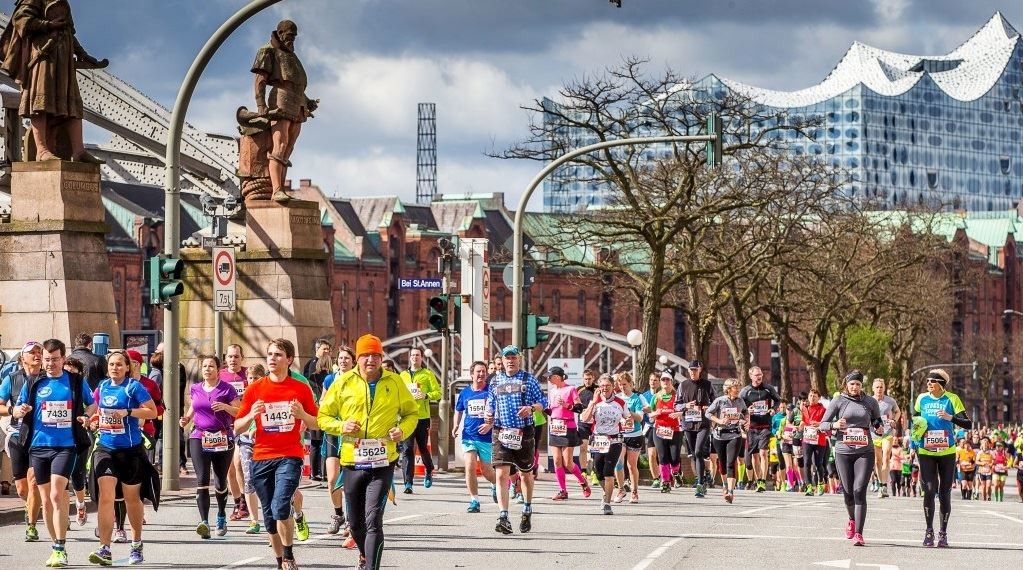
Hamburg Marathon race organizers do not have the city’s approval to gather the 14,000 runners anticipated for the event, but they are hoping to receive permission by the beginning of August, communications director Reinald Achilles confirmed in an email to Runner’s World.
The Hamburg marathon and half marathon were planned for April 19 but had to be rescheduled when the German government implemented a nationwide shut down in mid-March. While the number of new infections has stabilized at a lower level, as reported by Reuters on June 17, the country’s ban on large events was extended to October 24. But exceptions are being made for events where contract tracing and hygiene regulations are possible.
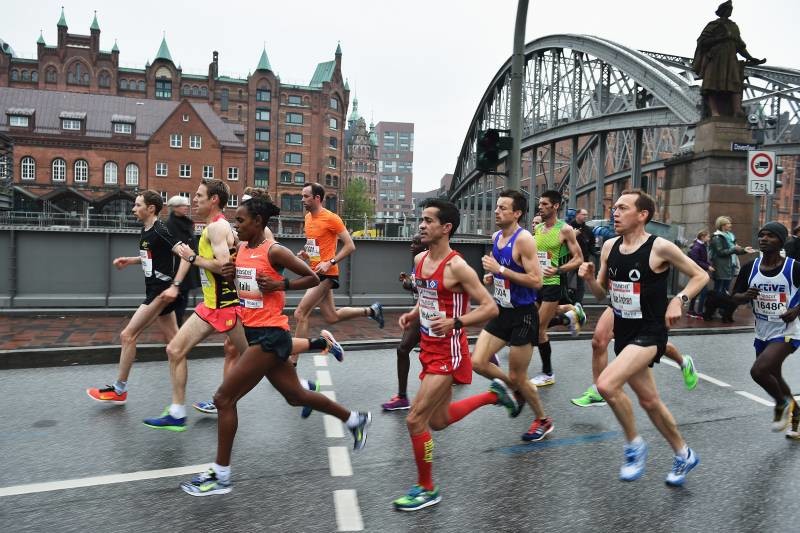
If the event continues, the Hamburg Marathon will likely be the first large-scale international marathon to be hosted since the start of the pandemic.
“We are optimistic that the Haspa Marathon Hamburg will be started on September 13,” race director Frank Thaleiser said in a statement. “We have the plans and the infrastructure required. We will now make detailed plans together with the city to realize the race.”
The hygiene policy, outlined by race officials last Tuesday, was developed by experts at Manchester Metropolitan University in England, which offers a masters degree in crowd safety and risk analysis.
To prepare for the 10,000 marathon participants and 4,000 half marathon runners expected to compete, race organizers are planning to include social distancing and increased hygiene measures prior to and during the event.
The half marathon and the marathon will have different start and finish areas, and the runners will begin each race in staggered groups of 1,000 about 10 minutes apart over the course of two hours. Before the event, runners will be assigned in predetermined groups and corralled in different halls of the expo building prior to the start. Disinfection stations will be available throughout the event area and along the course.
Each participant will be given a scarf with a breathing filter to be worn over the nose and mouth in the event areas. And unlike previous races, open food and drink will not be available in the finish area. Instead, race organizers will be offering a refueling package to the participants.
The elite field will be a smaller group of 30 athletes who will be required to complete COVID-19 testing prior to the competition. Runners in the elite and the mass field will not be allowed to participate if they are traveling from countries where the virus poses a higher risk.
“The organizational and hygiene policy should demonstrate that a running event with up to 14,000 participants within a city environment can be carried out responsibly while respecting the restrictions on contact and current hygiene guidelines since the outbreak of the COVID-19 pandemic,” Thaleiser said in a statement.
On June 24, the Berlin Marathon, which hosted 62,444 participants in 2019, was officially canceled. The news followed earlier reports in April in which race organizers announced the World Marathon Major would not go on as planned because of the ordinance set in place by the German government prohibiting all events with more than 5,000 people until October 24. The race looked into different options for holding the event but ultimately determined it wasn’t possible to continue on September 26-27.
The New York City Marathon was also canceled last Wednesday in a joint decision made by the New York Road Runners and the New York City Mayor’s Office. The marathon was supposed to take place in November, and it would have been the 50th running of the event.
New York and Berlin are the latest World Marathon Majors to be canceled or postponed in 2020. The Boston Marathon was initially postponed from April to September before being canceled in May. The London Marathon was rescheduled for October 4, and the Chicago Marathon remains on the calendar for October 11.
(06/30/2020) ⚡AMPby Taylor Dutch (Runner’s World)
Haspa Marathon Hamburg
The HASPA MARATHON HAMBURG is Germany’s biggest spring marathon and since 1986 the first one to paint the blue line on the roads. Hamburcourse record is fast (2:05:30), the metropolitan city (1.8 million residents) lets the euphoric atmosphere spill over and carry you to the finish. Make this experience first hand and follow the Blue Line....
more...Baxters Loch Ness Marathon cancelled due to the ongoing Coronavirus pandemic
Organizers of the Baxters Loch Ness Marathon & Festival of Running have today announced the cancellation of the 2020 event due to the challenges posed by the ongoing Coronavirus pandemic.
Established in 2002, the event attracted a record 9,500 participants in 2019 with 60% of marathon runners coming from outside Scotland and 17% from overseas. The cancellation is the first in the event’s 18-year history. The event raised over GBP 1m (EUR 1.1m) for charity in 2019.
Following consultation with partner agencies, sponsors and stakeholders over the past few months during lockdown, the difficult decision was made based on the safety and welfare of all those involved in the event. The uncertainty over travel restrictions for the large number of participants who travel to Inverness and the Highlands from around the UK and abroad was also taken into account.
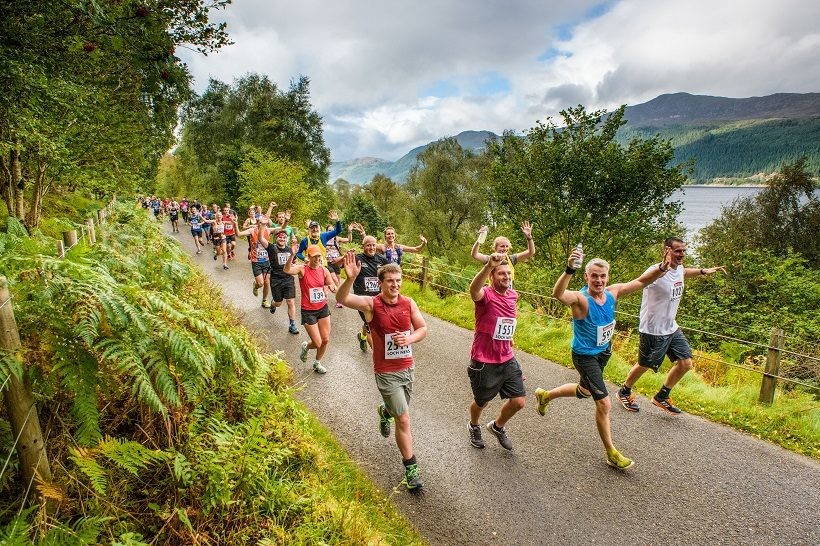
All those with a place in the 2020 Baxters Loch Ness Marathon & Festival of Running will automatically be transferred to the 2021 event, scheduled to take place on 3rd October. All participants have been contacted by email today with further information.
Commenting on the decision, Malcolm Sutherland, Event & Race Director of Baxters Loch Ness Marathon & Festival of Running, said: “I would like to extend my thanks to all those signed up for the 2020 event for their patience and support during this uncertain and very challenging time. “It has been a difficult decision and not one we have taken lightly however the health, safety and welfare of our participants, volunteers, staff, charities and stakeholders is at the heart of everything we do and will always remain our priority. We feel it is our responsibility to protect everyone involved including our emergency services and local community which has always been so supportive.
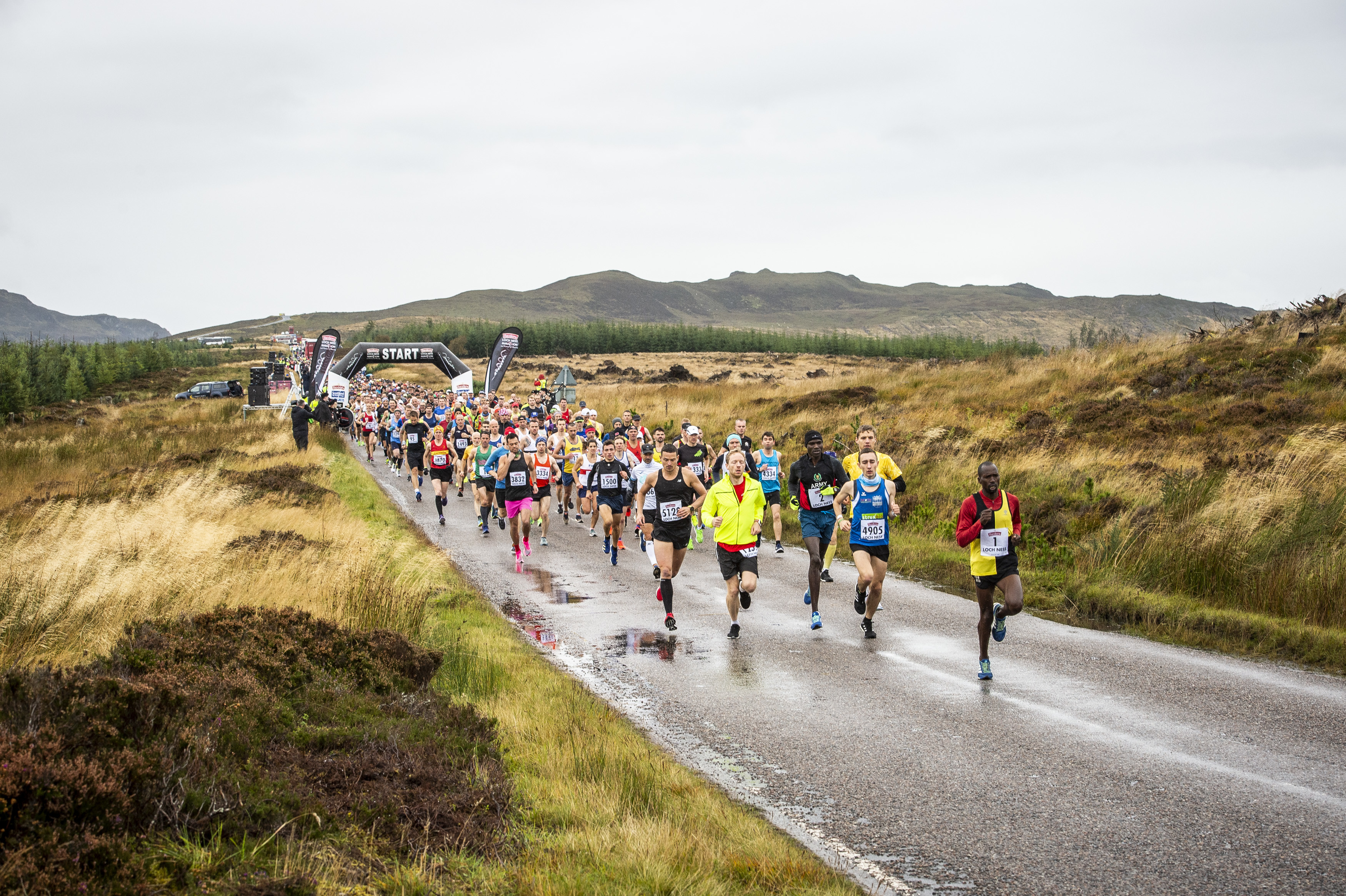
“The Baxters Loch Ness Marathon is a highlight of the UK running calendar with one of the most spectacular marathon routes in the world and has also gained a reputation as one of the most memorable.
We pride ourselves on offering a very special Highland experience and we are concerned this would be lost were we to stage the event with all the necessary physical distancing measures and other restrictions in place. Instead, we will put our efforts into ensuring the 2021 Baxters Loch Ness Marathon & Festival of Running is an outstanding experience for everyone.
“We also understand the many weeks of training required to prepare for this event, that many of you will be starting your 12-week training programme and many are fundraising for charity. We will therefore be working with our partner charities – Macmillan Cancer Support, Alzheimer Scotland, Cancer Research UK and the Highland Hospice and a host of other charities – to maximize fundraising in 2021.
“We really hope those due to take part this year will join us in 2021 – we can’t wait to see you then.”
(06/30/2020) ⚡AMPBaxters Loch Ness Marathon
The Loch Ness Marathon is an annual marathon race in Scotland, held along the famous loch, Loch Ness, ending in Inverness. The event is part of the Festival of Running, held annually at the beginning of October. This also includes a 10K race and a 5K fun run, and attracts over 8,000 participants across all of the events. The Baxters...
more...European 5000m silver medalist Henrik Ingebrigtsen clocks world leading 13:19.65 5000m in Oslo
European 5000m silver medalist Henrik Ingebrigtsen from Norway glided to a world leading 5000m time of 13:19.65 at the Boysen Memorial in Oslo, a European Athletics Area Permit Meeting, on Monday.
Paced by Sindre Buraas in the early stages, Ingebrigtsen cut loose from a leading pack which also included Sondre Nordstad Moen after the pacemaker dropped out and picked up the pace significantly over the closing laps.
Running the last 800 meters inside two minutes, Ingebrigtsen was rewarded with a finishing time inside 13:20 and a time which was only four seconds slower than his lifetime best of 13:15.38. The eldest of the Ingebrigtsen brothers also believes he had more in the legs too.

“It was really a good race. It suited me well today, I got a moderate opening and got to drive towards the end. The body responded quite well, I know the body has more inside, but I am happy that I got this out on a Monday at Bislett. It was one of my best races,” Ingebrigtsen told NRK after the race.
Ingebrigtsen also said the postponement of the Olympic Games in Tokyo could play to his advantage and believes he could even quite possibly challenge for a medal in the 5000m next summer.

“I might be a little more optimistic. If I can get consistency in the training work I do at home, then I have a hundred percent belief that I should have the level to fight for a medal - I have that belief,” he said.
In a good quality race, the top four runners all broke the 13:40-barrier with Ingebrigtsen followed home by Narve Nordas (13:33.39) and Zerei Kibrom Mezngi (13:37.59). Moen finished fifth in 13:42.96.
Henrik’s brothers Filip and Jakob Ingebrigtsen will be in action this evening in the 800m.
(06/30/2020) ⚡AMPThe 2020 Nationwide Children’s Hospital Columbus Marathon has been cancelled due to the pandemic
The 2020 Nationwide Children’s Hospital Columbus Marathon and Half Marathon has been canceled.
The event, previously slated for October, joins several other races and festivals in the Columbus area that have been shelved, rescheduled or replanned to take place virtually because of the coronavirus pandemic.
“No one at the finish line last October could have anticipated that we would cancel the event for this year, but it is absolutely the correct thing to do,” Board Chairman Dan Leite said in a news release. “The safety of our athletes, volunteers, first responders, team and the entire community is the top priority for our event. “
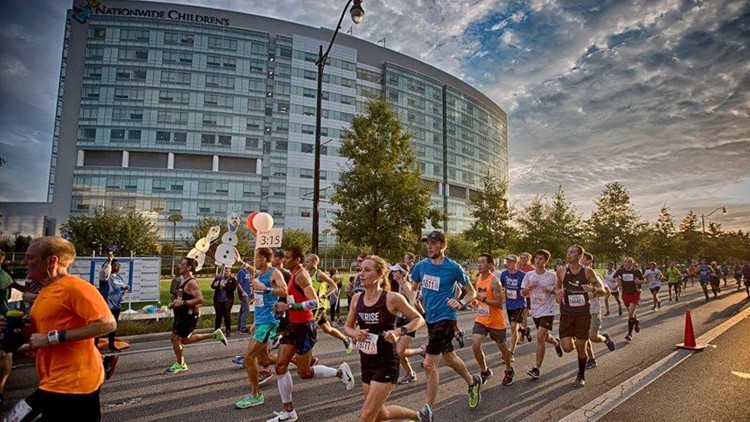
The event has raised $10 million for Nationwide Children’s Hospital, the marathon’s benefiting charity, since 2012.
“It pains us to not be able to bring our race forward in 2020, but these are no ordinary times,” Race Director Darris Blackford said in the release. “Everyone has faced changes to our ‘normal’ ways of life. When you think about the best health and safety practices needed to help slow the spread of the virus, holding a major running footrace isn’t the responsible thing to do right now.”
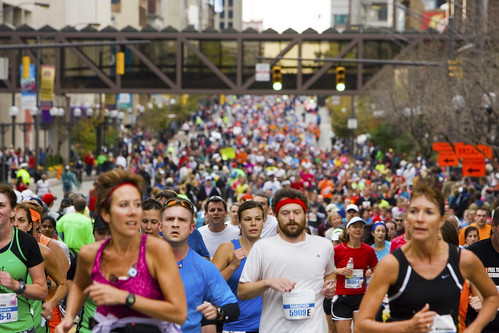
Race participants will have their fees refunded. However, would-be participants will still have a chance to fundraise for Children’s Hospital’s patients and families. There will be a forthcoming announcement on fundraising activities.
"This is the right decision and whole this news might disappoint in the short term, our 128-year-old mission is not taking a break,” Steve Testa, president of the Nationwide Children’s Hospital Foundation, said in the release.
“Kids still get cancer, babies are still born prematurely,” Testa said. “We look forward to working with everyone to help children.”
(06/30/2020) ⚡AMPColumbus Marathon
The Nationwide Children's Hospital Columbus Marathon, first run in 1978 and held annually since 1980, features a flat, fast course which saw nearly 20 percent of finishers qualify for the Boston Marathon in 2010. The event has sold-out in mid-August the past eight years. There are 7,000 runners in the full marathon and 11,000 in the half marathon, making it...
more...New York marathon champion Joyciline Jepkosgei dreams to rule the roost in marathon despite cancellations
New York marathon champion Joyciline Jepkosgei had not planned to venture into the ultimate distance late in 2019.
For her, the graduation from road races to the marathon was penciled for 2018 after meticulous planning.
However, illness, poor form and injury delayed her promotion to the new challenge until late in 2019.
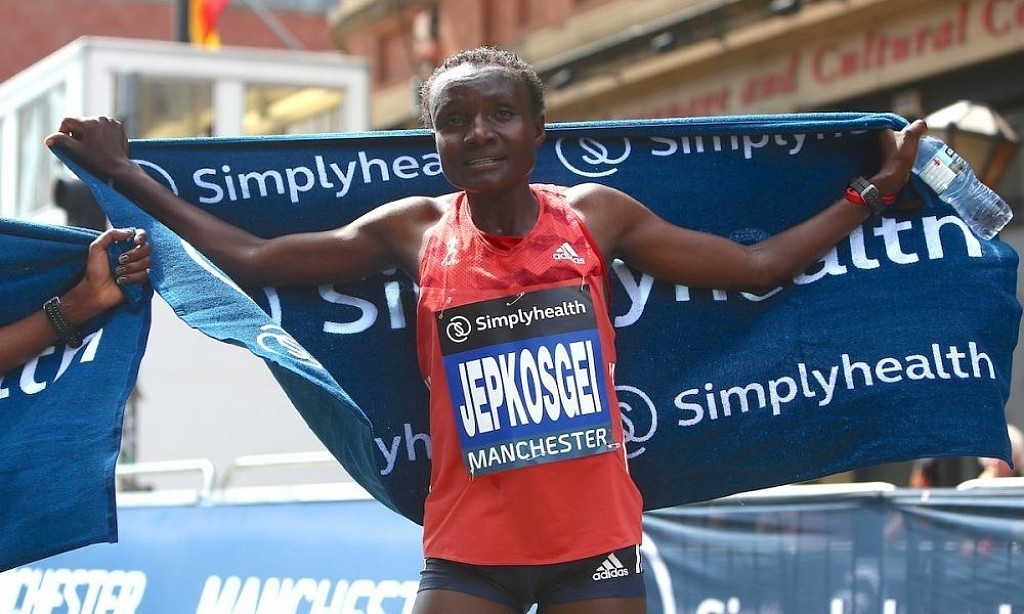
Jepkosgei had plans to answer her critics by running at the Honolulu marathon and later in the London marathon in 2018 but failed to get the chance due to injury and sickness.
However in 2019, after a lot of self-evaluation, she took a leap of faith and ventured into the marathon and was handsomely rewarded with a win in New York on first asking, powering to cut the tape in 2:22:38, which was seven seconds off the course record of Margaret Okayo (2:22:31) set in 2003.

"I was not expecting to win in New York, based on the high profile athletes that I was running against, especially my village mate Mary Keitany," Jepkosgei told Xinhua on Monday from Iten, her training base.
However, the 26-year-old never anticipated her development in the marathon would be stalled by COVID-19. She had planned to compete at the Africa Cross Country Championships in Lome, Togo in March as part of her preparations for the London marathon in April. But the event was postponed to 2021.
Earlier Jepkosgei had let the chance to compete at the World Half Marathon in Gdynia, Poland slip past her to focus on running in London.
However, the sports calendar was wrecked by the global pandemic and all the three events were either postponed or canceled.
"At first, I thought it was going to be a short time and we would return to action by June. Then we saw governments closing down, movement within and outside the country was restricted and all hope was dashed and we had to isolate even in training at home. Our training camps were shut down and we had to retreat back to our homes to avoid catching the COVID-19 pandemic," said Jepkosgei.
While all this was happening, Jepkosgei, who is also the world marathon record holder (64:51) hinged her hopes on defending her title in New York in November.
However, even that has been taken away from her, throwing the season into uncertainty.
That cancellation of the 2020 New York City marathon was no surprise to Jepkosgei.
"I was preparing for another good run to defend my title in New York. I had turned down my chance to compete at the World Half Marathon so as to focus on London and New York marathons, but both will not be held as planned in 2020," Jepkosgei added.
She, however, has not given up on her hope and dreams to lead Kenya to one day win the Olympic gold in the 2024 Paris Games.
"For me, I take the cancellations of marathon races positively knowing that there will always be another chance to excel, to showcase my talent and to work on my career performances. A chance will always come when we will return to competition post-COVID-19 and that is why I keep on training. To be ready when called upon to compete again," she said.
Jepkosgei, however, believes though 2019 was her best season, so far, better performances are in cue for her starting in 2021.
"Past records are just that, they lay in the past. I look forward to the future and want to do well," she said.
Indeed last year, Jepkosgei excelled better than predicted. For an athlete who held world records in the half marathon and road 10K, the year saw her clinch the New York City Half Marathon in March and go on to overcome her fears and compete in her first full marathon.
In addition, Jepkosgei is the youngest women's marathon champion in New York since 2001. She is the first woman to win in her debut since Tegla Loroupe of Kenya in 1994 and posted the fastest debut finish by a woman in New York City Marathon history.
"I have scaled down my training because I love running. I always want to be in my best shape. For now, there is no inspiration to train hard for a competition venture, but for the love of sport, I have to continue doing what I love, running," Jepkosgei added.
For now, she is at peace with organizers' projection to host the next New York City Marathon in 2021 with a set date being Nov. 7.
Hopefully, for Jepkosgei, she prays to remain injury-free and fit to defend her title. Time will tell.
(06/29/2020) ⚡AMPTCS New York City Marathon
The first New York City Marathon, organized in 1970 by Fred Lebow and Vince Chiappetta, was held entirely in Central Park. Of 127 entrants, only 55 men finished; the sole female entrant dropped out due to illness. Winners were given inexpensive wristwatches and recycled baseball and bowling trophies. The entry fee was $1 and the total event budget...
more...World Athletics and parkrun to announce a new partnership
World Athletics and parkrun Global Limited are delighted to announce a new partnership by which they will combine their resources to grow the sport of athletics and deliver good health and fitness outcomes for communities around the world.
Parkrun’s simple concept of offering an opportunity for anyone to participate in a free, weekly, organised 5km or 2km run at a local park has captured the imagination of communities around the world over the past 16 years.
From its roots at Bushy Park, Teddington in the United Kingdom in 2004, parkrun has expanded to 20 countries in the past 10 years, and now has more than three million participants globally.
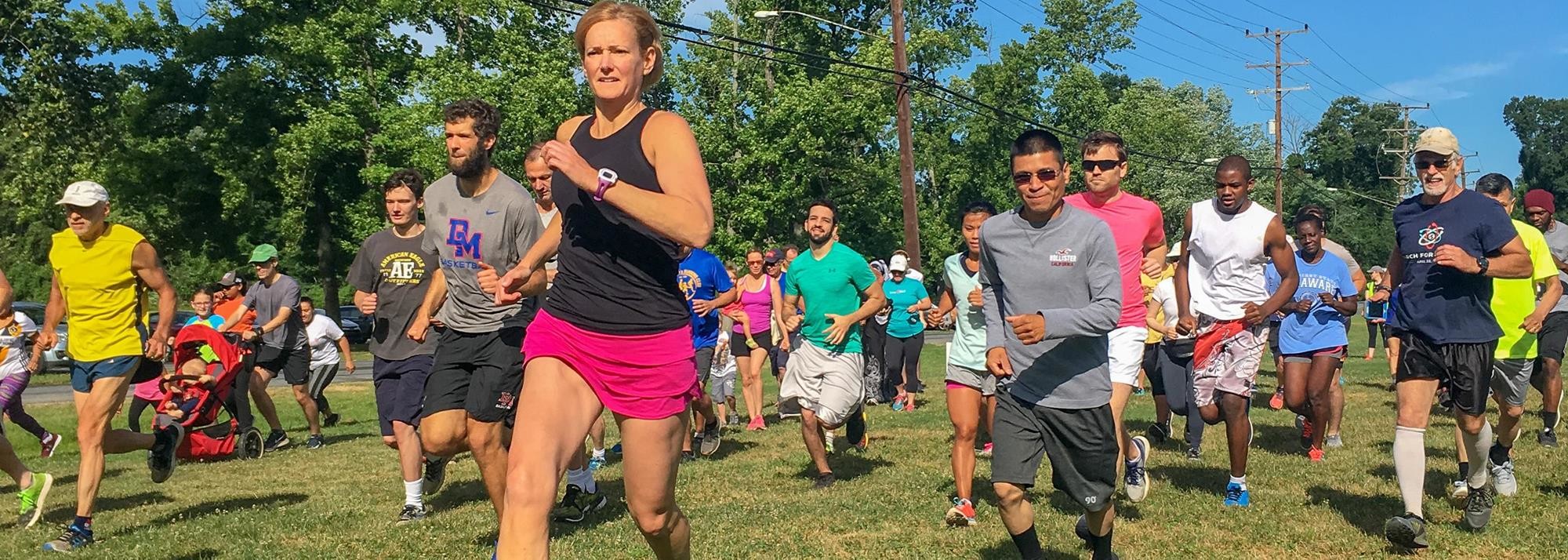
World Athletics, which has 214 Member Federations, and parkrun will work together to encourage people around the world to get moving and keep moving by joining a local parkrun.
Parkrun will assist World Athletics to leave community health legacies in the host countries of World Athletics Series events by creating a series of permanent parkruns in the host cities and countries of world championship events, including the World Championships Oregon 2022 and Budapest 2023. To that end, World Athletics will facilitate government/city support for these events.

World Athletics CEO Jon Ridgeon said parkrun’s purpose aligned perfectly with the sport’s global ambitions for the next four years.
“We have just approved a strategic plan that has the main objective of using the power and accessibility of athletics and our athletes to create a healthier and fitter world,” Ridgeon said.
“One of the ways we are doing this is by developing strong new partnerships where our common cause is to get the world moving. We know that many more people have taken up running during the lockdowns around the world, which makes sense because our sport is the most universal and accessible of all sports, and we want to encourage those people to keep up their new fitness routines as life returns to a more normal footing after the pandemic. Doing a weekly parkrun is an excellent way to stay motivated and find a local running community once mass events are possible again.
“We’re also determined to leave tangible community legacies in all of our future host cities and countries, and there is no better way to do that than by helping to improve the health of their citizens.”
Parkrun CEO Nick Pearson said both organisations were determined to get more people running for their health, fitness and enjoyment.
“This partnership offers parkrun a fantastic platform to demonstrate the role, relevance and value of community health and wellbeing initiatives and to highlight that sport and physical activity is accessible to all,” Pearson said. “It is exciting to see this approach embraced by World Athletics, and we look forward to working with stakeholders in the host countries of World Athletics Series events to support and develop a network of parkrun events.
“We believe that finding positive ways to connect grass roots and community activity with elite sport has multiple benefits and builds stronger sporting foundations and broader engagement. Exercise and physical activity is more accessible and sustainable where sports organisations collaborate and work towards mutual goals. Encouraging the social and community participants to engage with and experience a more competitive sporting environment will help to build a stronger sport and expose pathways to more sporting opportunities.”
Parkrun New Zealand has announced last week that it will be able to resume on July 4, with measures in place to allow contact tracing of participants.
(06/29/2020) ⚡AMPby World Athletics
Olympic 20km race walk champion Liu Hong eager to get back racing
Olympic 20km race walk champion Liu Hong told World Athletics she is eager to return to competition after the COVID-19 pandemic brought global sport to a halt.
"I'm really looking forward to racing, and I feel even more appreciative now of the things I have been used to. I miss the feeling of competing with other race walkers all over the world," she said.

Liu Hong should currently be busy preparing to defend her title at the Tokyo Olympic Games, but the tournament's postponement until 2021 has forced her to adjust her plans. However, the three-time world champion sees it as a chance to refine her training.
"Usually, June is the time when training is the most difficult and stressful, and it is the key preparation stage for major competitions in August and September," said the 33-year-old.
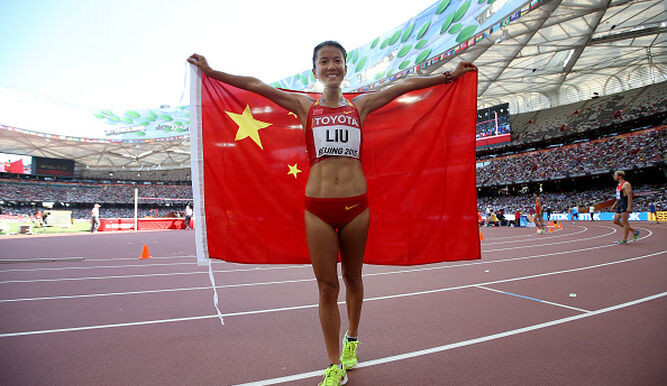
"But all the training this year has returned to basic practise, leaving my body in good shape. I've also had more time to try things in training that may make me perform better in future."
The postponement also disrupted Liu's plan for her family. Originally planning to buy a house in Shenzhen, she instead relocated to Kunming in southwest China's Yunnan Province earlier this year, in order to take advantage of the city's 2,000m altitude and pleasant climate while in lockdown.
"Moving with my family to Kunming has been the biggest change for me so far this year," she noted. "The weather here is perfect for training, and we are changing our previous views on altitude training."
"Life doesn't always go smoothly, but we should face it with positivity every day," Liu added.
(06/29/2020) ⚡AMPGeoffrey Kamworor discharged, to recuperate at home
Three-time world half marathon champion Geoffrey Kamworor was discharged Saturday from the St Lukes Hospital in Eldoret after being treated following an accident on Thursday.
Kamworor, who was hit by a speeding motorcycle during his morning run just after 6am on Thursday, sustained injuries on his head and ankle in the accident on the Kaptagat-Eldoret road.
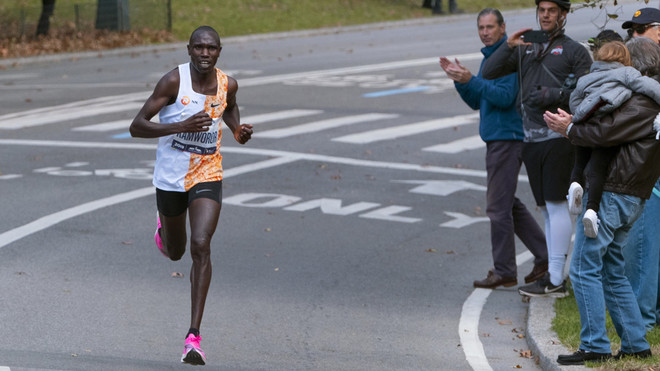
The injury could take some time to heal and the champion will almost certainly not be able to defend his World Half Marathon Championships title in Gydnia, Poland, on October 17.
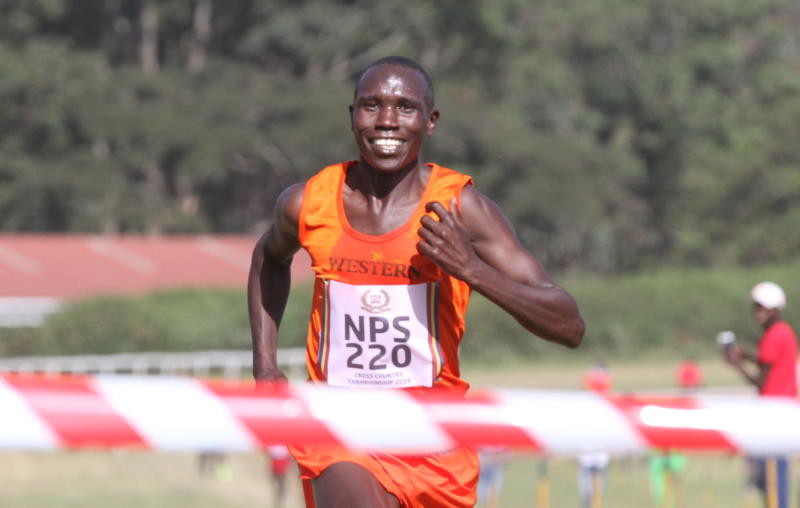
Athletics Kenya president Jack Tuwei Saturday described Kamworor as among Kenya’s top talents and regretted the fact that the athlete will be sidelined for a while.
“As a federation we want to wish Kamworor quick recovery. He missed the first season due to the coronavirus and the next season has also been affected by the injury,” Tuwei said.
(06/29/2020) ⚡AMPby Bernard Rotich
Nike reports unexpected loss as sales tumble 38%, shares fall
Nike reported an unexpected quarterly net loss and a sales decline of 38% year-over-year.
Digital sales soared 75%, representing about 30% of total revenue, as shoppers flocked to Nike’s website for sneakers and workout gear.
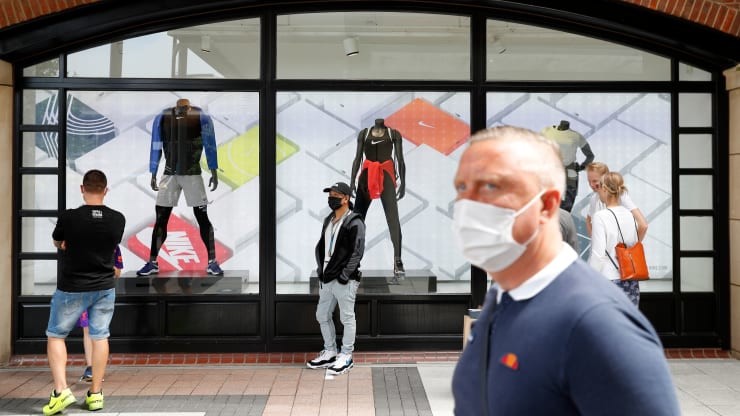
But expenses for shipping and returns also put more pressure on the company’s profits. Nike’s margins during its fiscal fourth quarter shrank to 37.3% from 45.5% a year ago.
Even Nike, often lauded as one of the strongest global brands in the retail industry, is taking a hit from the coronavirus pandemic.
The Portland, Oregon-based sneaker maker on Thursday reported an unexpected quarterly net loss and a sales decline of 38% year-over-year, as its business was hurt from its stores being shut temporarily, and online revenue was not enough to make up for that.
Its inventories also piled up, weighing on profits, as its wholesale partners such as department stores also had their shops shut and took in fewer orders for shoes and clothes.
Nike shares were recently down around 4% in after-hours trading.
Here’s how Nike did during its fiscal fourth quarter:
Loss per share: 51 cents
Revenue: $6.31 billion
Nike reported a loss of $790 million, or 51 cents per share, during the period ended May 31, compared with net income of $989 million, or earnings of 62 cents a share, a year ago.
Total revenue was down 38% to $6.31 billion from $10.18 billion a year ago. Sales in North America were down 46%, while sales in China were down just 3%, with many of Nike’s stores in that region reopening sooner during the pandemic than in the U.S.
Sales at the Converse brand dropped 38%. For the Nike brand, footwear sales fell 35%, apparel was down 42% and equipment revenue tumbled 53%, as sports and many recreational activities have largely been put on hold due to the Covid-19 crisis.
Digital sales soared 75%, representing about 30% of total revenue, as shoppers flocked to Nike’s website for sneakers and workout gear. The company had previously set a goal to reach 30% digital penetration by 2023. But that timeline was accelerated rapidly because of the pandemic. Now, the company said it is targeting its e-commerce sales accounting for 50% of overall sales “in the foreseeable future.”
But expenses for shipping and returns also put more pressure on the company’s profits. Nike’s margins during its fiscal fourth quarter shrank to 37.3% from 45.5% a year ago.
Analysts were calling for the company to report earnings of 7 cents per share on revenue of $7.32 billion, according to Refinitiv data. However, impact from the coronavirus pandemic makes it difficult to compare the company’s results to analysts’ estimates.
“We are continuing to invest in our biggest opportunities, including a more connected digital marketplace,” Chief Executive John Donahoe said in a statement.
During a call with analysts, he went on to explain that Nike will make its online business more “central” to everything the company does, and that Nike will invest in opening additional smaller-format stores that are meant for customers to do things such as pick up their online orders. It said it will open about 150 such locations globally.
“Consumers want modern, seamless experiences, online-to-offline, so we’re accelerating our approach,” Donahoe said on the call.
Nike said its inventories as of May 31 amounted to $7.4 billion, up 31% from a year ago. The company said the increase was due, in part, to it shipping less merchandise to its wholesale partners because of the pandemic.
Nike said product shipments to wholesale customers were down nearly 50% during the quarter.
As of Thursday, Nike said roughly 90% of its owned stores are back open globally. In China, almost all of its owned stores are reopened. About 85% are open again in North America.
According to CEO Donahoe, Nike’s digital business is up triple digits, so far, in June. Bricks-and-mortar retail traffic remains below prior-year levels, he said.
Nike is not offering a complete fiscal 2021 outlook at this time. But Donahoe said revenue should be flat-to-up compared with the prior year.
As of Thursday’s market close, Nike shares are down less than 1% this year. The stock is up about 22% from a year ago. Nike is valued at $157.7 billion.
(06/28/2020) ⚡AMPThe 2020 Badwater 135 will not be held due to the pandemic
"The World’s Toughest Foot Race has been cancelled for 2020. This was going to be the first race featured by My Best Runs to happen since the LA Marathon, held March 8, but Badwater 135 organizers just could not get things worked out," says MBR Director Bob Anderson.
Covering 135 miles (217km) non-stop from Death Valley to Mt. Whitney, CA, the Badwater® 135 is the most demanding and extreme running race offered anywhere on the planet. The start line is at Badwater Basin, Death Valley, which marks the lowest elevation in North America at 280’ (85m) below sea level.
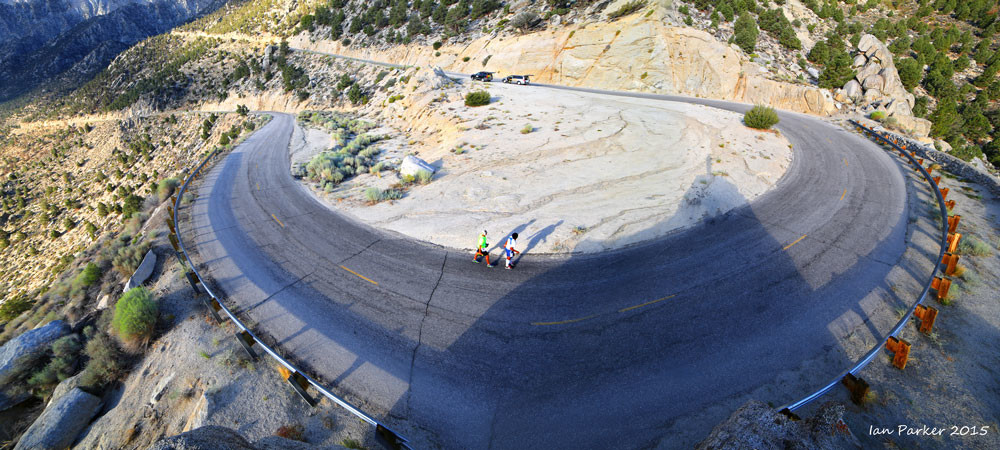
The race finishes at Whitney Portal at 8,300’ (2530m), which is the trailhead to the Mt. Whitney summit, the highest point in the contiguous United States. The Badwater 135 course covers three mountain ranges for a total of 14,600’ (4450m) of cumulative vertical ascent and 6,100’ (1859m) of cumulative descent.
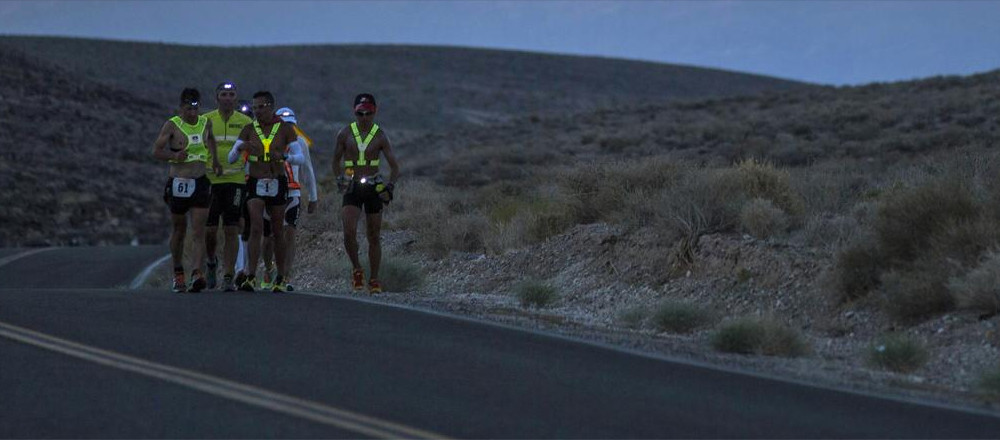
Competitors travel through places or landmarks with names like Mushroom Rock, Furnace Creek, Salt Creek, Devil’s Cornfield, Devil’s Golf Course, Stovepipe Wells, Panamint Springs, Darwin, Keeler, Lone Pine, Alabama Hills, and the Sierra Nevada.
The 43rd edition will NOT take place Monday-Wednesday, July 6-8, 2020.
(06/28/2020) ⚡AMPBadwater 135
Recognized globally as "the world’s toughest foot race," this legendary event pits up to 90 of the world’s toughest athletes runners, triathletes, adventure racers, and mountaineers against one another and the elements. Badwater 135 is the most demanding and extreme running race offered anywhere on the planet. Covering 135 miles (217km) non-stop from Death Valley to Mt. Whitney, CA, the...
more...Emma Coburn breaks Colorado Mile record
The former CU Buff clocked a 4:32 mile at Colorado Mesa University on Saturday night in Grand Junction Colorado.
Professional runner and former CU Buff Emma Coburn broke the Colorado Mile record by clocking a 4:32 mile at Colorado Mesa University. The previous record was held by fellow CU Buff Dani Jones (4:36).
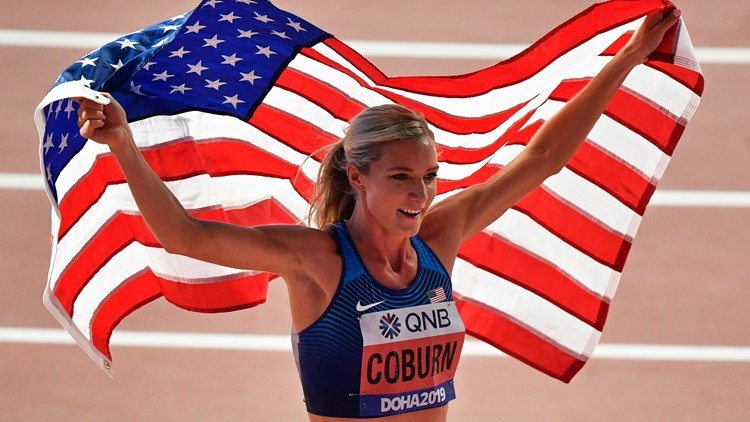
The 2020 Team Boss Colorado Mile was held as a fundraiser for the Sachs Foundation, a Colorado-based non-profit that supports Black students looking to attend college.
Team Boss was aiming to raise $20,000 through the event, but had more than $30,000 pledged by the end of the event on Saturday night.
Following the women's race, no male runner was able to break the 4:01 men's Colorado Mile record, narrowly missing the mark by just over one second.
(06/28/2020) ⚡AMP
There will be no rescheduled event to replace the cancelled BMW Berlin-Marathon in 2020
Events with 5,000 participants or more are prohibited by the responsible authorities in Germany until October 24, 2020. Hopes were raised earlier this week that a replacement race after that date might be possible, if satisfactory hygiene measures could be put in place, but the race’s organisers today drew a line under these considerations.
SCC Events, the race organisers, said in a statement: “We worked hard on the development of a hygiene concept and held countless discussions with our experts, the responsible authorities and service providers, among others. A comprehensive feasibility analysis showed that an event such as the BMW Berlin-Marathon could not be held under the current specifications – also not after October 24, 2020, especially not with the high expectations we all have for this event. Naturally, we support the containment measures, as the health of everyone is of utmost importance to us.
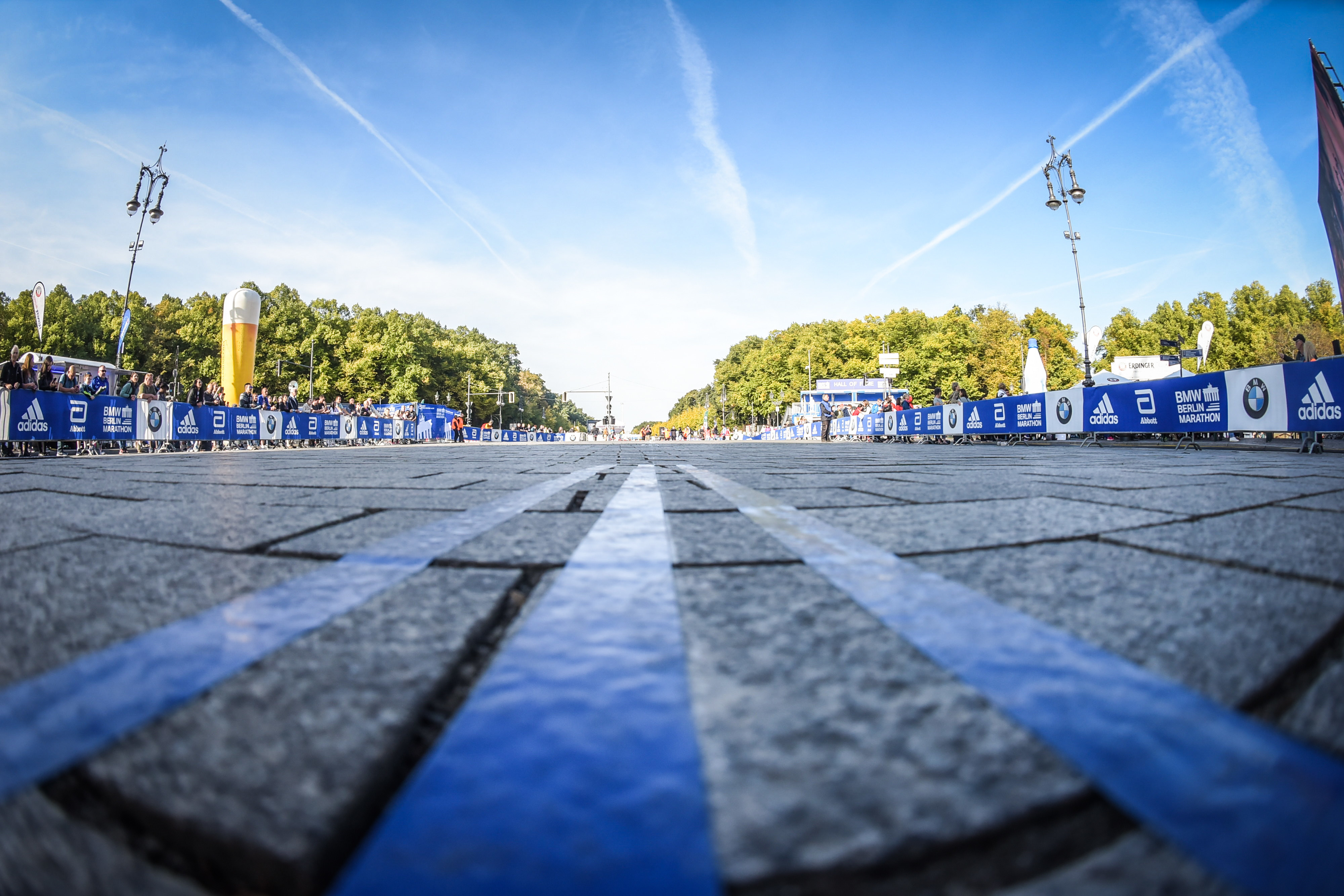
“The BMW Berlin-Marathon will therefore not take place on September 26-27, 2020 due to force majeure, and it is also not possible to hold the event at a later date this year.”
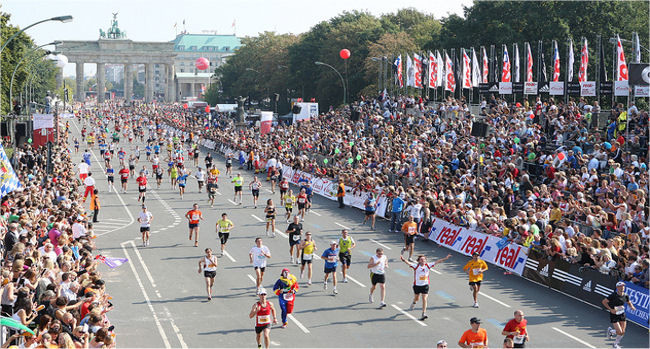
Jürgen Lock, Managing Director of SCC Events, added: “Due to the weather conditions alone and the ever shorter days, it would be very difficult to hold the BMW Berlin-Marathon with its various competitions and event formats this year.
Then there is the uncertainty about which regulations will apply at a later date. The question of whether athletes will be able to travel internationally again by then can also not yet be answered.”
Registered participants will be contacted this week and offered the opportunity of a full refund or a transfer to next year’s event on September 25–26 2021.
(06/27/2020) ⚡AMPBMW Berlin Marathon
The story of the BERLIN-MARATHON is a story of the development of road running. When the first BERLIN-MARATHON was started on 13th October 1974 on a minor road next to the stadium of the organisers‘ club SC Charlottenburg Berlin 286 athletes had entered. The first winners were runners from Berlin: Günter Hallas (2:44:53), who still runs the BERLIN-MARATHON today, and...
more...Adidas releases adizero adios Pro, Complete with five carbon-infused rods and LightstrikePRO midsole, this shoe doesn't actually have a carbon plate per se
Adidas announced this week that its fastest marathoning shoe yet will drop on June 30. The adizero adios Pro is the company’s newest carbon-plated shoe – with a twist.
Complete with five carbon-infused rods and LightstrikePRO midsole, this shoe doesn’t actually have a carbon plate per se.
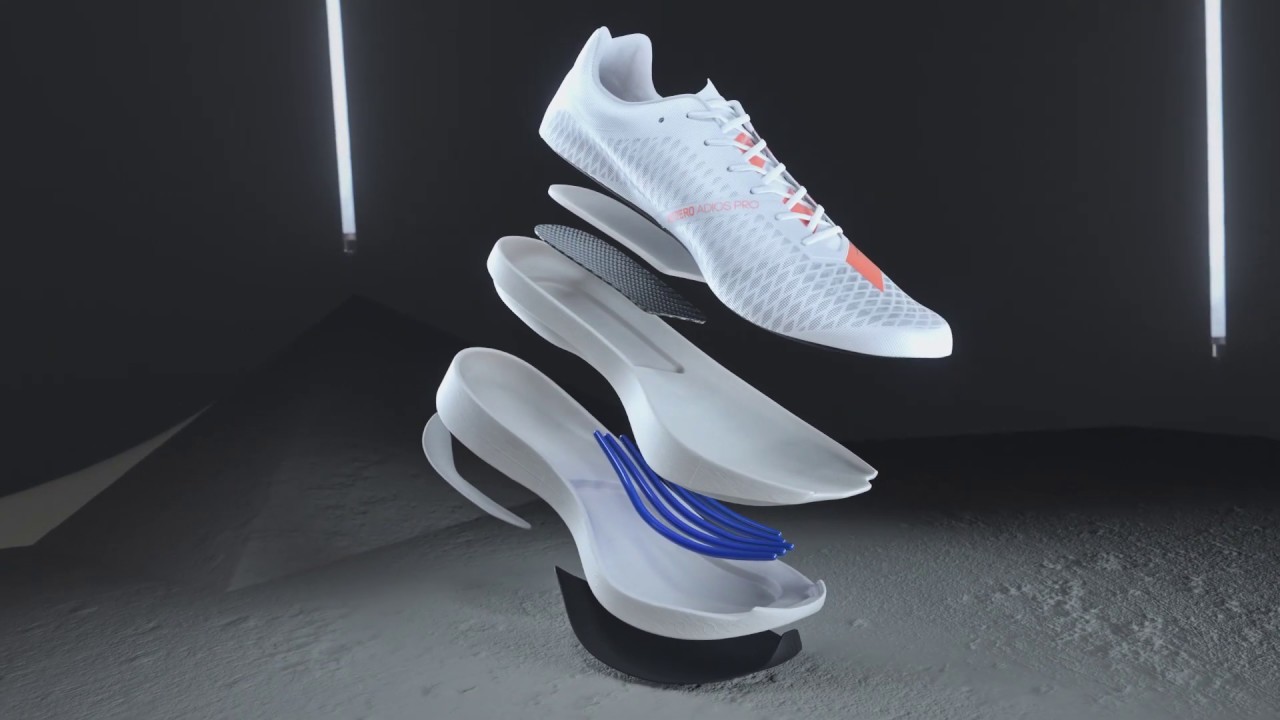
This evolution of the adios Pro got started over a decade ago when Haile Gebrselassie shattered his own marathon world record in Berlin, running his personal best of 2:03:59, in the first version of the shoe. The protoype of this new iteration of the adios Pro made its racing debut at the 2020 Houston Half-Marathon, where the shoe was on the feet of Philemon Kiplimo and Abel Kipchumba, both Adidas athletes who finished in 59:28 and 59:35 respectively, for fourth and fifth place.
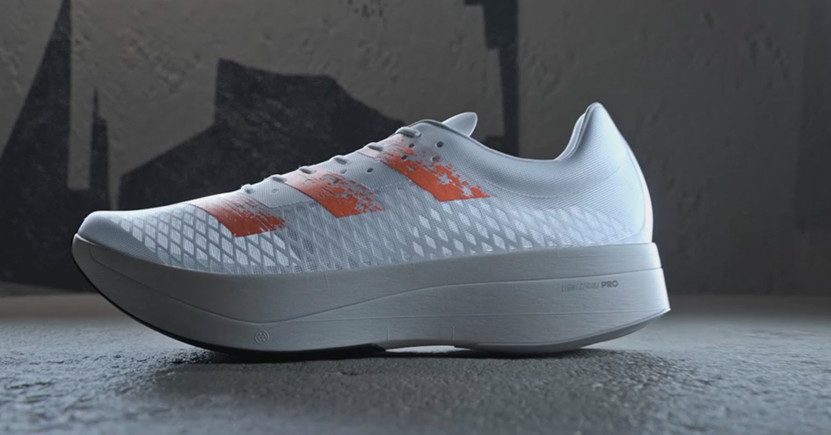
Twelve years later, the adios Pro is highly evolved and ready to take on the roads.
Like other companies, Adidas received lots of feedback from its professional runners, who include half-marathon world record-holder Joyciline Jepkosgei and 10K world record-holder Rhonex Kipruto. Their collaboration with Adidas is how the energy rods were born.
Instead of the traditional full-slab carbon plate, energy rods are finger-like carbon sticks that move like the metatarsals in the foot. The rods are supposed to allow runners to maintain their speed for longer, optimize running economy and create less impact on the body. After all, marathoning is all about efficiency.
The LightstrikePRO midsole is the company’s lightest and most-responsive material yet. Coupled with a carbon fibre heel plate for ankle stabilization, this shoe has some extremely innovative features that runners will be super excited to check out. At only 220 grams, this shoe will certainly be on the feet of many marathoners this fall. The adizero adios Pro becomes available in limited release on Tuesday, June 30.
(06/27/2020) ⚡AMPby Madeleine Kelly
Mo Farah: Briton returns to track to take on hour record
Briton Mo Farah will return to the track for the first time since 2017 in a bid to break the men's one-hour world record at the meeting in Brussels on 4 September.
The 37-year-old, winner of multiple world and Olympic titles, will aim to better Ethiopian Haile Gebrselassie's 13-year-old record of 21.285km.
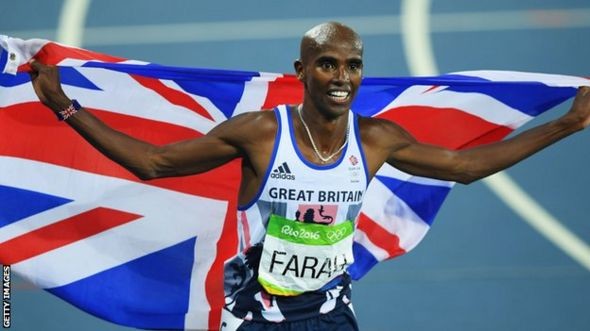
European 10,000m silver medallist Bashir Abdi will line up against Farah.
Ethiopia's Ababel Yeshaneh and Birhane Dibaba will go for the women's record.
That mark of 18.517km was recorded by their compatriot Dire Tune in 2008.
The one-hour run is where athletes try to cover as much distance as possible within one hour.
Katarina Johnson-Thompson, Britain's world heptathlon champion, will look to finish higher than Olympic champion Nafi Thiam once again when they compete in a 'triathlon' contest featuring 100m hurdles, shot put and high jump.
(06/27/2020) ⚡AMPWanda Diamond League announces updates to 2020 calendar
The Wanda Diamond League today announced further alterations to its provisional 2020 calendar, with the cancellation of two meetings and a further event pushed back until September.
The Meeting de Paris, provisionally scheduled for 6 September, will not take place this season. Following the latest government announcements on the organisation of major events in France, meeting organisers concluded that there is not enough time to organise a world-class international event in the French capital this year.

Paris’s well-loved Wanda Diamond League meeting will return in August 2021, at a time when it is able once again to mobilise volunteers and welcome international stars.
In Eugene, the 2020 Prefontaine Classic has also been cancelled. The state of Oregon currently has a ban on large gatherings - including sporting events - and that restriction will be in place until at least the end of September. The ban, combined with the expected long term restrictions on international travel, make it impossible to host a world class track & field meet in front of the Hayward Field faithful on 4 October.
The Prefontaine Classic is to return in 2021 and provide the opportunity for the University of Oregon to properly introduce the new Hayward Field to track & field fans around the world.
Discussions are still ongoing in relation to the Muller Grand Prix Gateshead which is no longer scheduled for 16 August. 12 September has been identified as a possible alternative date, however final confirmation cannot be given at this time due to UK Government guidelines and restrictions.
Due to the ongoing global health situation and ever-changing regulations, the 2020 Wanda Diamond League calendar remains provisional and subject to further changes.
The meeting organisers, the Wanda Diamond League and World Athletics remain committed to staging competitions athletes can compete in and fans can enjoy as far as the global pandemic allows.
The 2020 Wanda Diamond League will not be a structured series of events leading to a final as is usually the case. Athletes will therefore not earn Diamond League points this season, and there will not be a single, 24-discipline final in Zurich as originally planned.
Click here for the latest version of the 2020 calendar.
(06/27/2020) ⚡AMPWith NYC Marathon canceled, runners look to virtual races for motivation
Nearly 54,000 people finished last year's TCS New York City Marathon. This year, the race would've commemorated its 50th anniversary but was canceled due to the coronavirus pandemic.
Running coach John Honerkamp, the founder of Run Kamp, said many runners will miss the ritual of the marathon this year. John would've run his 10th consecutive New York City Marathon, which always takes place on the first Sunday in November.

But just because the marathon was canceled doesn't mean your training has to go to waste, he said. Using technology to keep you motivated is important. And virtual racing, although not new, Honerkamp said, is a way to stay in touch with other runners and hold each other accountable. All you need for a virtual race is an app like Strava.
"A lot of the times it's just the honor system or you go out with your GPS and run a 5K or marathon or a mile," he said. "There's lots of challenges, whether it's actual race organizations putting on things or just running clubs putting on things to be creative and keep motivation high."
Marathon runner Amrita Ramamurthy was supposed to run her fifth New York City Marathon. The news about the canceled race is tough because a fall without a race is atypical for a lot of marathoners, she said.
Amrita has found it difficult to motivate herself during this pandemic, But she recently signed up and ran her first virtual marathon—the virtual Boston Marathon. She said doing it on her own was really tough on her physically.
"There's no med stations, there's no water, you're completely responsible for yourself," Amrita said.
For Amrita, running a marathon has been about the race-day atmosphere. However, virtual racing has allowed her to focus on herself.
"It's less about the experience and more about my personal dedication to my goals and the times that I can run," she said.
(06/27/2020) ⚡AMPWill any of the six World Marathons Majors be held this year other than the elite field in Tokyo?
The Berlin Marathon, one of the world’s six elite long-distance races, has been cancelled this year as organisers conceded the event cannot be held under German Covid-19 containment regulations.
The decision yesterday (Wednesday) came as the 2020 New York City Marathon, originally scheduled for November 1 and another member of the World Marathon Majors (WMM) group, was also cancelled due to Covid-19.
The Berlin Marathon was scheduled for September 26-27, but organisers had already announced in April that this year’s race would not go ahead as scheduled after the German government extended its ban on large-scale gatherings of more than 5,000 people until October 24.
SCC Events has now said that after “extensive examination and various discussions” it would not be possible to hold the event at a later date this year. It added: “Over the past weeks, we have put a lot of commitment and effort into examining all options for holding the BMW Berlin-Marathon 2020 under the given conditions.
“We worked hard on the development of a hygiene concept and held countless discussions with our experts, the responsible authorities and service providers, among others.”
The media and sponsorship rights to the Berlin Marathon are sold by the Infront agency, which is also responsible for the broadcast production. Of the six World Marathon Majors, only Tokyo has taken place so far this year on March 1, with a reduced field consisting only of elite runners, without the mass participation element.
The Berlin and New York decisions came weeks after the Boston Marathon was cancelled for the first time in its 124-year history. The London Marathon has been postponed until October 4, while the Chicago Marathon remains scheduled for October 11.
(06/26/2020) ⚡AMPDiamond League events in Paris and Eugene Oregon, cancelled due to the coronavirus pandemic
The Paris meeting had originally been pushed back from June until September 6 but was ultimately called off by organisers due to doubts over global travel and a lack of time to prepare a "world-class international event".
The Prefontaine Classic in Eugene, scheduled for October 4, was also axed from the programme, with restrictions still in place to combat the Covid-19 pandemic in the west coast state.

"The state of Oregon currently has a ban on large gatherings -- including sporting events -- and that restriction will be in place until at least the end of September," Diamond League organisers said in a statement.
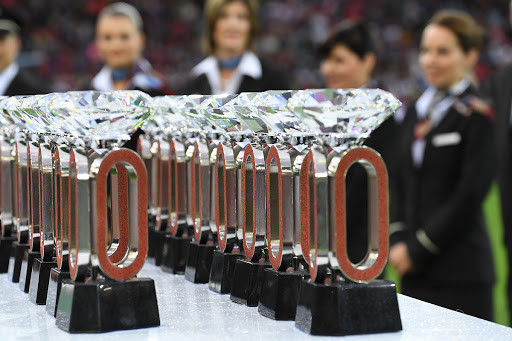
"The ban, combined with the expected long term restrictions on international travel, make it impossible to host a world class track and field meet... on October 4th."
Eugene will host the world athletics championships in 2022. The competition was moved back a year to accommodate the postponement of the Tokyo Olympics.
Four of the 15 Diamond League meetings have been cancelled, with Rabat and London also binned.
The circuit is due to start August 14 in Monaco followed by the Stockholm meeting nine days later.
The Gateshead event in northeast England could now be held September 12 but is still to be confirmed, organisers said.
"Final confirmation cannot be given at this time due to UK Government guidelines and restrictions," the statement said.
(06/26/2020) ⚡AMPGeoffrey Kamworor of Kenya operated on in Eldoret after freak road accident
Multiple world cross country and half marathon champion Geoffrey Kamworor is recovering in an Eldoret hospital after he was injured in a freak accident while on his Thursday morning run.
The world half marathon record holder was hit from behind by a speeding motorcycle, sustaining injuries on his head and ankle.
Kamworor told Nation Sport from his hospital bed that he sustained injuries above the ankle and on his head
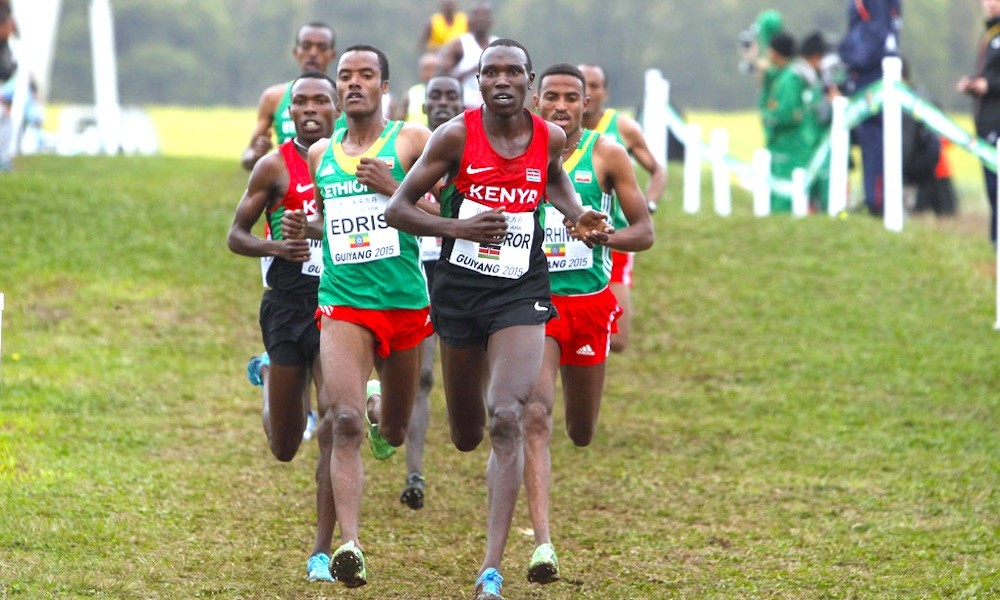
It was double tragedy for Kamworor, 28, after organizers on Thursday cancelled November’s New York City marathon where he would have defended his title.
Kamworor was also lined up to defend his World Half Marathon Championships title at this year’s rescheduled race in Gdynia, Poland, on October 17.
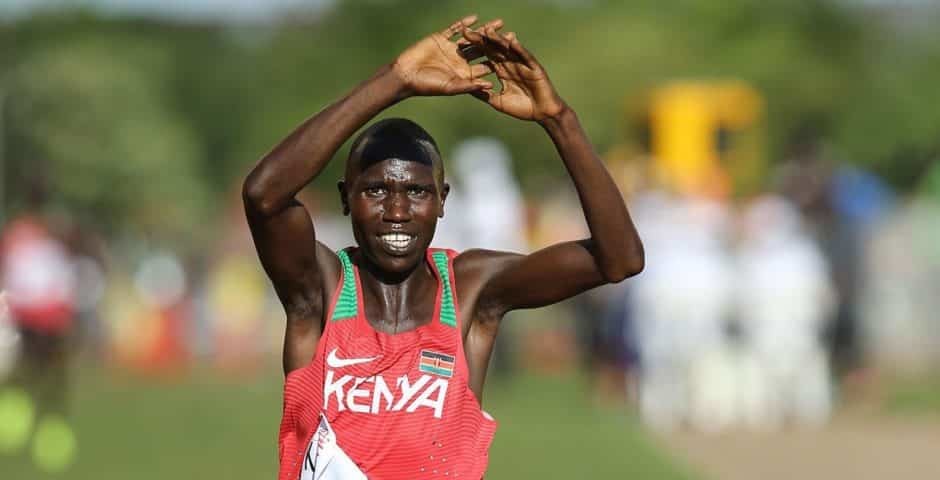
According to Dr Victor Bargoria, who treated Kamworor Friday, diagnosis was to open incomplete right tibia shaft fracture, knee bruises and scalp laceration.
“The procedure was debridement of contused contaminated soft tissue and loose bone fragments followed by irrigation and wound closure,” he explained after attending to the star at the St Luke's Hospital in Eldoret.
The surgery took place one month after another successful surgery on world 800 meters record holder and Olympic champion David Rudisha who twisted his ankle at his home in Kilgoris, Narok County.
The motorcyclist stopped and helped the injured champion to the hospital where he was admitted.
“I was one kilometer away from my home during my morning run when a speeding motorcycle hit me from behind and I fell down injuring my leg,” Kamworor explained.
“I also got injuries in my head and he helped me up and took me to the hospital where I was admitted.”
He said that he expects to be discharged today after the surgery went on successfully.
"The doctor has advised me to rest and I will be discharged maybe today but I will be waiting for him to give me clean bill of health,” said the champion.
Bargoria confirmed the champion could be released Friday.
“I received the patient on Thursday morning and we managed to do a surgery which was to open incomplete right tibia shaft fracture on his right leg and bruises on his head. He is doing well and he should be leaving for home anytime," said Bargoria.
He said the planned follow up will be leg CT scan, IV antibiotics, analgesics, wound care and rehabilitation for recovery.
(06/26/2020) ⚡AMPby Bernard Rotich
Des Linden says that the cancellation of New York this year could extend her career by several years
The cancellation is not necessarily bad news for everyone. Des Linden, the top American finisher at last year’s marathon, had planned on running both Boston and New York this year after missing the Olympic team in February by just 10 seconds.
She told the Daily News that the cancellations of both marathons could extend her career by several years. Linden, who turns 37 next month, was thought to be at the tail end of her professional career, and had spoken frequently of an uncertain future after 2020.
“This is going to be a really good time to refresh,” Linden said. “I think we were putting all of our chips in (to 2020), and now it’s gonna be regroup and see, can we do this for the long haul for another three or four years? It might not be the worst thing.”
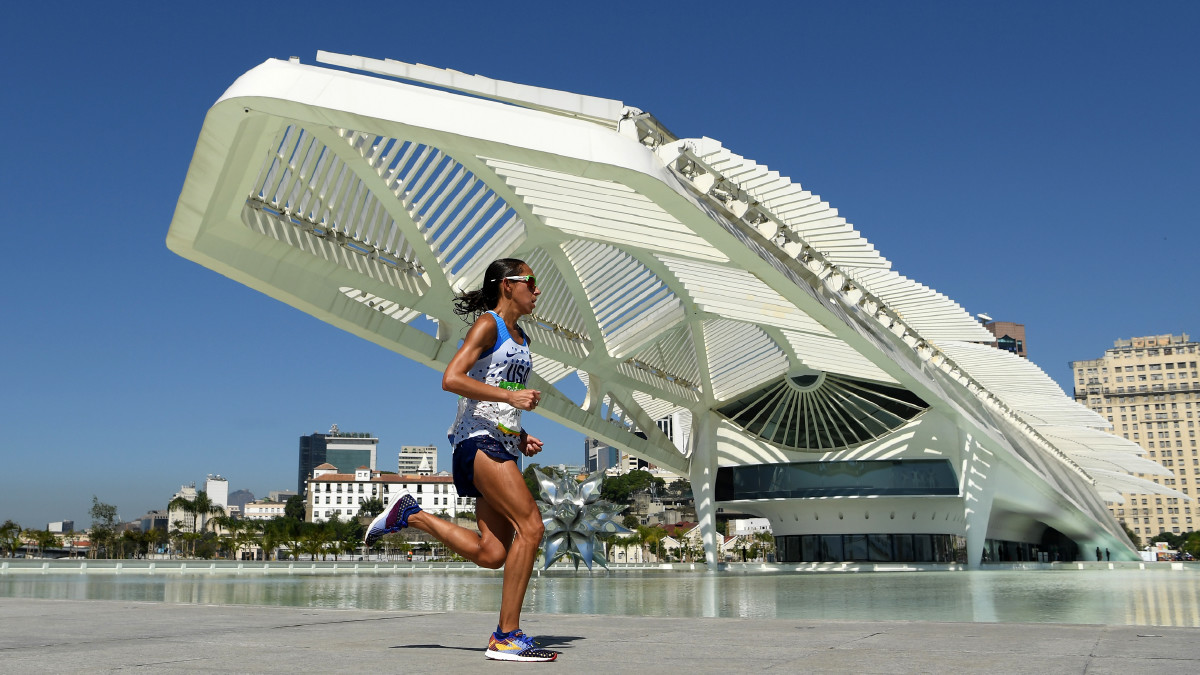
But Linden said she will miss the crowds and the atmosphere.
“You see that start, you get chills,” she said. “And the feeling goes throughout all the boroughs. It’s magical.”
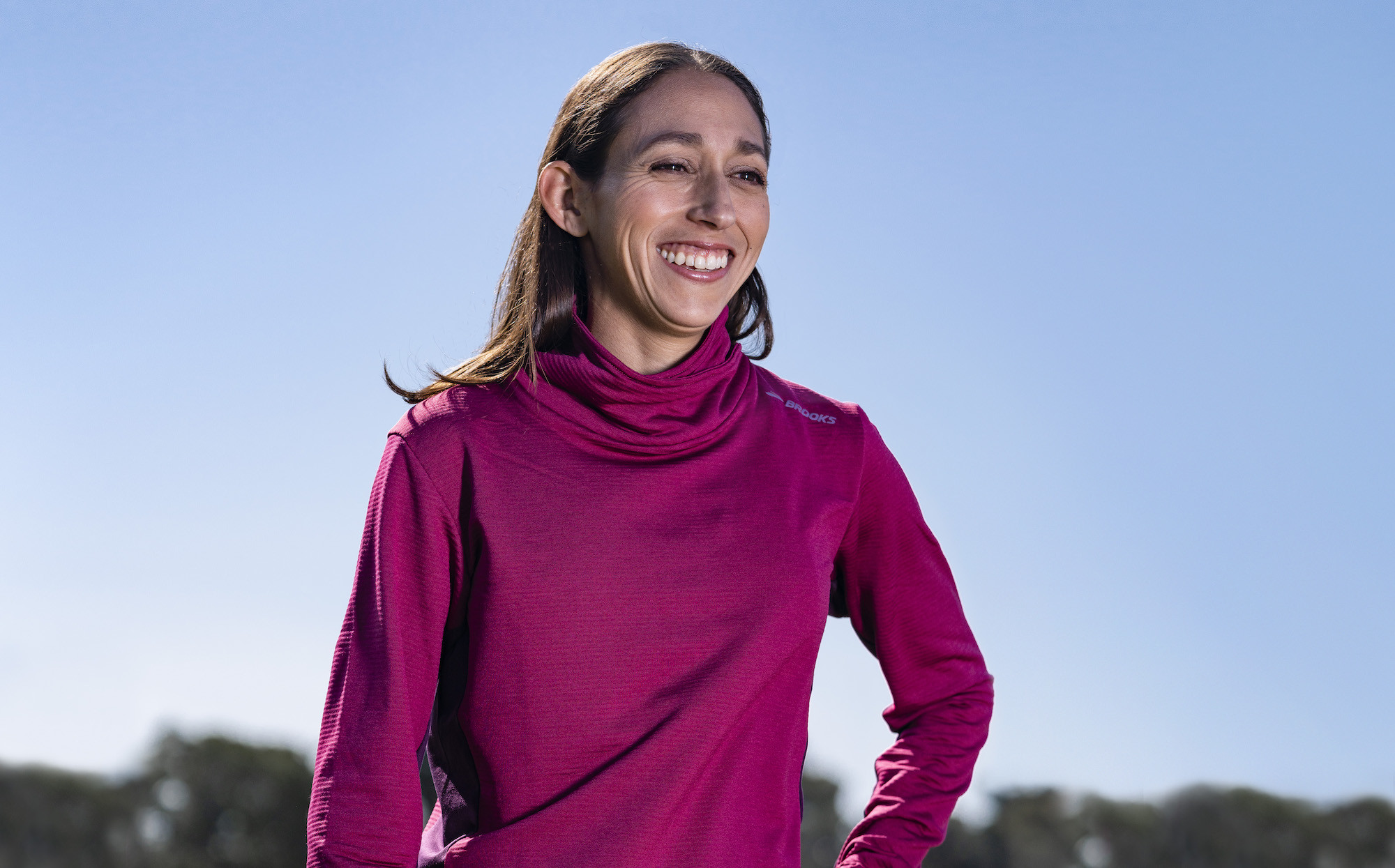
The start is perhaps the most intractable problem for a mass road race in the coronavirus era. The New York City Marathon corrals all the runners on the Verrazzano-Narrows Bridge in Staten Island. At the 50,000 runner mark, if socially distanced in the most efficient form possible, the field could stretch seven miles and perhaps more, according to one set of calculations.
Some marathon hosts, like Tokyo, have canceled the mass fields and held elite-only events. New York organizers said they opted against that to avoid large crowds of spectators.
The Boston Marathon, originally scheduled for April, had been postponed to September and then was canceled late last month.
Minutes after the New York announcement, the Berlin Marathon was canceled. With New York, Boston, Berlin, and the Olympics out of the running, four of the seven major marathons scheduled for 2020 will not be held.
While the London and Chicago marathons have not yet been nixed, organizers of both races said cancellation is a possibility. London was previously postponed from April to October.
(06/26/2020) ⚡AMPby Dennis Young
TCS New York City Marathon
The first New York City Marathon, organized in 1970 by Fred Lebow and Vince Chiappetta, was held entirely in Central Park. Of 127 entrants, only 55 men finished; the sole female entrant dropped out due to illness. Winners were given inexpensive wristwatches and recycled baseball and bowling trophies. The entry fee was $1 and the total event budget...
more...Another major sports event, the Cape Town Marathon has been forced to cancel due to the ongoing Covid-19 pandemic
Athletics South Africa president Aleck Skhosana announced that the 2020 Sanlam Cape Town Marathon had officially been called off.
“Cancelling this year’s edition of the Cape Town Marathon was a difficult decision to make because it is also home to the ASA Marathon Championships.
“This is the only World Athletics Gold Label marathon in Africa and it’s an influential nation-builder with a massive economic impact.
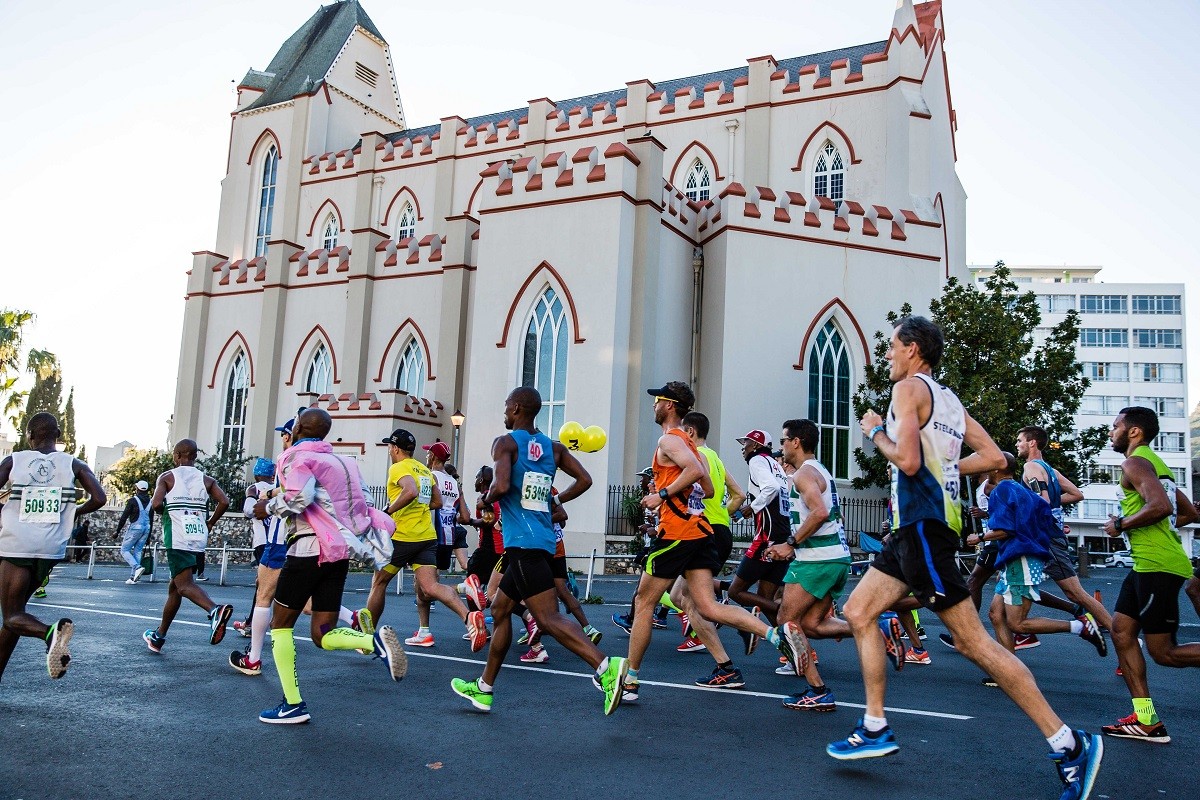
“We know that it will come as a great disappointment to thousands of runners who were looking forward to the race.
“However, the decision had to prioritise the health and safety of all involved,” Skhosana said.
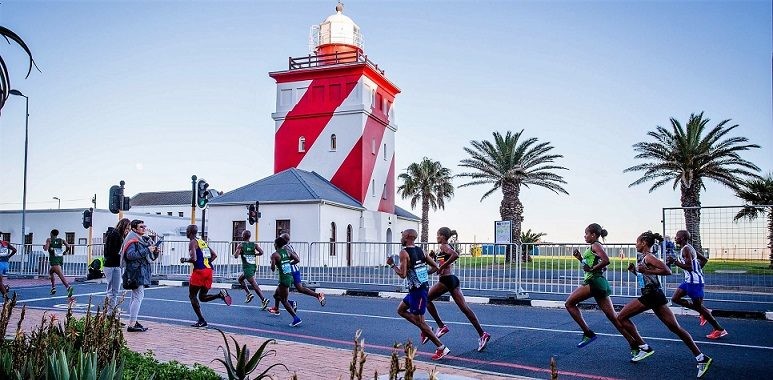
Cape Town Marathon chair Francois Pienaar said the decision was a disappointment but ultimately necessary.
“The decision did not come easy, but was one that had to be made after exhausting all our options.
“The reality is that we cannot risk the health and well-being of our participants, volunteers, supporters and stakeholders,” he said.
All entrants will have the option to receive a full refund. Alternatively, race director Renee Jordaan said entrants could choose to donate their fees to charity.
“All donated entry fees will be distributed between the Peninsula School Feeding Association and Community Chest of the Western Cape to support the increased social needs during the pandemic,” Jordaan said.
(06/26/2020) ⚡AMPby Matthew Field
Cape Town Marathon
The Sanlam Cape Town Marathon is a City Marathon held in Cape Town, South Africa, which is sponsored by Sanlam, the City of Cape Town and Vital Health Foods. The marathon is held on a fast and flat course, starting and finishing in Green Point, near the Cape Town Stadium. Prior to existing in its current format, the Cape Town...
more...For the first time ever, Akron Marathon will be offering virtual race this year
For the first time ever, the FirstEnergy Akron Marathon will take place as a “virtual race experience” this year, said Anne Bitong, president and CEO of the Akron Marathon Charitable Corp.
“We certainly wish we could have hosted a physical race, but in the information-gathering process, we asked ourselves if we could host the same type of world-class event and we knew that we couldn’t,” she said. “We knew that given the environment and given safety issues and concerns, the experience would have to be completely different. And we are in the business of offering a great experience. … So, we are doing our best in terms of trying to make it unique and putting the Akron Marathon spin on what that virtual experience might look like.”
According to Bitong, the FirstEnergy Akron Marathon, the Half Marathon, the Team Relay and related events, including the Health & Fitness Expo and the Kids Fun Run, scheduled for Sept. 25-26 will take place virtually due to the COVID-19 pandemic. The marathon is part of the Akron Children’s Hospital Akron Marathon Race Series, which includes two other summer races that were canceled this year.
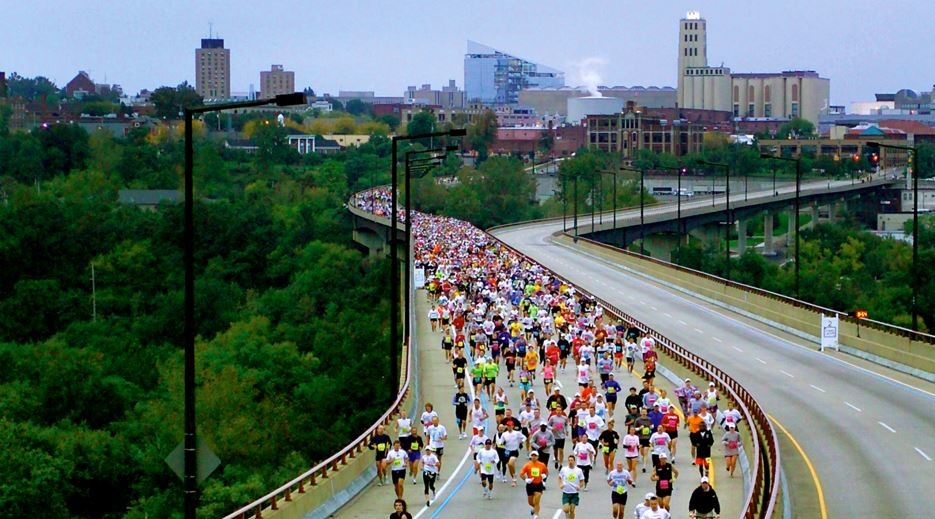
“This is our 18th year of putting on our races and our first year of putting on a virtual race,” she said. “In our case, a virtual race is a race that you can run, at your pace, from home or any location. Runners — whether for the marathon, the half marathon or relay — will run their distance and then upload their race results through their favorite app or tracking device to our registration platform. And then we will deliver a personal results page and a finisher’s certificate for their participation in our event. [Participants] can run their virtual race beginning on Sept. 26, which was the original date, through Oct. 31.”
Since making the decision, Bitong said the Akron Marathon Charitable Corp., which organizes the race series, has been “overwhelmed with positive feedback from our running community.”
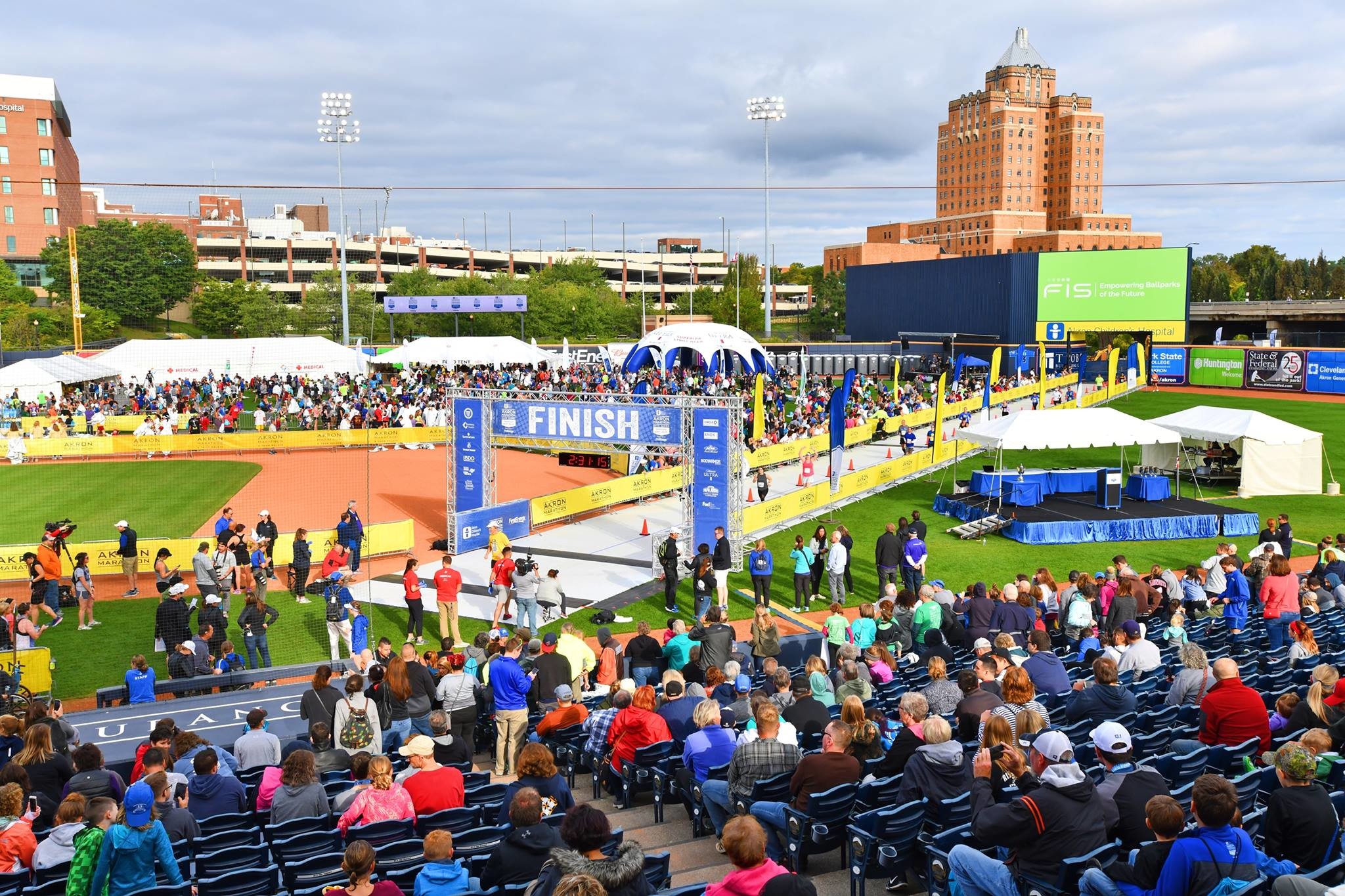
“We’re just thrilled that people understand the position that we’re in, and we’re happy that we can support them,” she said. “We have about 2,000 people who are registered. We were expecting 10,000 under normal circumstances, but we have people who are still trying to decide between doing the virtual race or deferring their entry until next year.”
According to marathon officials, runners who have already registered will have the option to keep their registrations and participate virtually, donate their registration fees or defer their entry to a future race.
One unique aspect of this year’s virtual Akron Marathon is what Bitong called the “blue line in a box.”
“That’s the race kit that we’re going to be sending out to all of our virtual race participants in advance of the race,” she said. “That way, the shirts and medals and those types of things they would typically get race weekend will be prepared and they will have everything they would need to support them on their virtual race. Our concept of the ‘blue line box’ is that it has a subscription box feel.”
The box’s contents will vary for each of the events, Bitong said.“For example, with the marathon, you’re going to get your race bib, special offers from our partners, an ASICS short-sleeve tech shirt, ASICS custom Run Akron socks and custom Goodr sunglasses, which are really popular with runners,” she stated. “And then you’ll get your course support nutrition that you typically would get on the race day, as well as your finisher medal. For the half marathon, they would get similar items, but not the Goodr glasses. And the relay runners would get the bib, the shirt and the finisher’s medal.”
Bitong said the items will make note of the uniqueness of this year’s virtual event. “We kind of went to the drawing board in terms of the runner premiums this year,” she said. “For many of the items, such as the shirts, we had the blanks on order, but the design is going to be unique and commemorate this year as a virtual race experience.”
Another big change for this year’s event, Bitong noted, is an earlier registration deadline than normal. “Typically, registration for our event is open through September. We usually close it the week before the race,” she said. “This year, we’re only keeping registration open through June 30. That way, we have a great idea of how many people are planning to take advantage of the virtual experience. And from our perspective, we have to prepare all of the blue line box kits and get all of them stuffed and out in advance. There’s a lot of detail behind getting those ready to go and make sure they hit homes prior to race day.”
The registration costs this year are $105 for the marathon, $90 for the half marathon or $50 per team member for the relay race.“We do have caps on the events. The cap for the full marathon is 1,000, the cap for the half marathon is 3,800, and the cap for the relay race is 4,000,” Bitong said. “We certainly encourage anyone who maybe was intimidated to run in the Akron Marathon to take this opportunity to run virtually and be part of the running community.”
(06/25/2020) ⚡AMPby Sean Patrick
Akron Marathon Race Series
The marquee event of the Akron Children’s Hospital Akron Marathon Race Series, the Akron Marathon, Half Marathon, & Team Relay presented by First Energy receives a fresh new look ! Runners will experience an unforgettable start inside the historic grounds of Stan Hywet Hall & Gardens before taking an exclusive foot tour of the City of Akron. The Goodyear Half...
more...The Scotiabank Toronto Waterfront Marathon will be pausing its registration for the next few weeks
STWM is scheduled for October 18, but CRS officials are unsure whether the City of Toronto will allow such a large gathering to be held by that time in the fall (more than 20,000 athletes are expected, plus spectators along the course).
In Wednesday’s press release, organizers said they have been communicating with the city and public health officials to figure out what will be permitted by October.
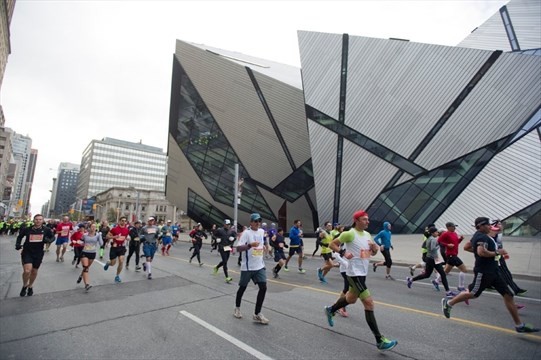
“At this time,” wrote CRS organizers, “the City of Toronto has not been able to confirm if the ban on mass events of over 25,000 will be extended beyond August 31st.”
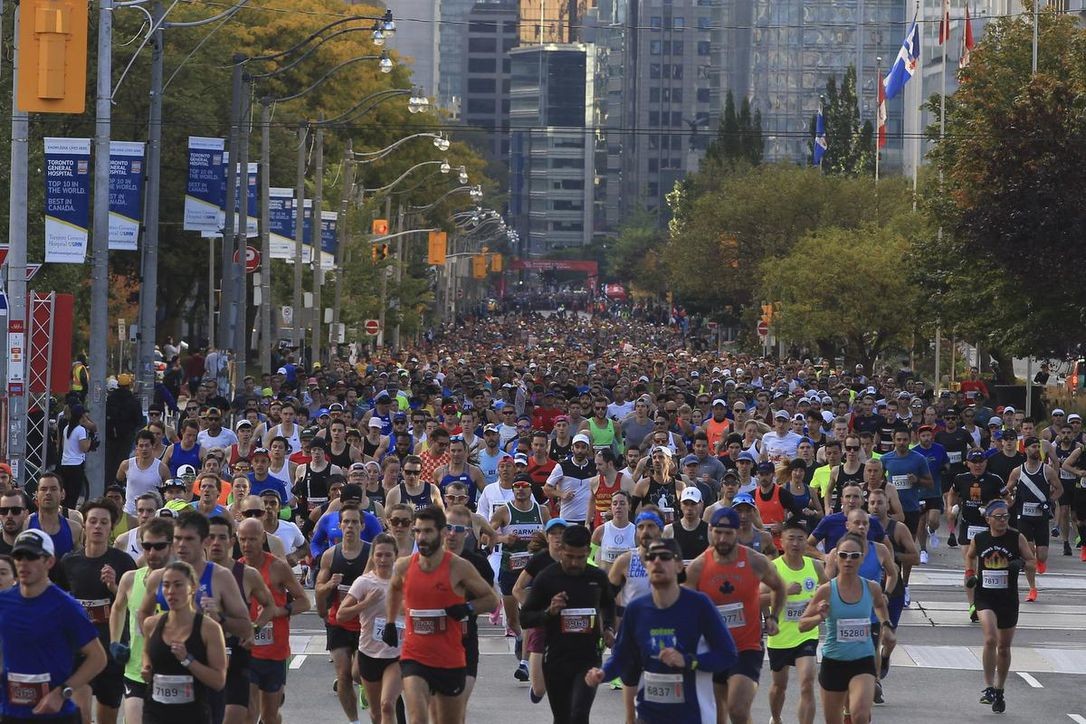
Because of this ambiguity, race registration will be frozen until the city, public health officials and CRS team can determine definitive answers regarding the fall race.
Although it’s unclear if the event will go ahead as planned this year, fundraising for the Scotiabank Charity Challenge is still open, and CRS officials have said the race’s charity partners “need our help now more than ever.”
In 2019, $8.5 million was raised for more than 500 charities across the country, and since the challenge was created in 2003, almost $80 million has been raised.
(06/25/2020) ⚡AMPby Ben Snider-McGrath
TCS Toronto Waterfront Marathon
The Scotiabank Toronto Waterfront Marathon, Half-Marathon & 5k Run / Walk is organized by Canada Running Series Inc., organizers of the Canada Running Series, "A selection of Canada's best runs!" Canada Running Series annually organizes eight events in Montreal, Toronto and Vancouver that vary in distance from the 5k to the marathon. The Scotiabank Toronto Waterfront Marathon and Half-Marathon are...
more...Tokyo hosts the Smile Marathon, the first road race in more than three months
While Tokyo Olympic organizers are wringing their hands about running the upcoming Olympics without a vaccine, the 22nd Smile Marathon was went ahead on Sunday in Tokyo. It was the first road race in the city since COVID-19 shut things down in March.
According to Japan Running News, the event was successful and appeared to promote safe distancing. “There was a wide range of distances on offer: 30K, half, 10K, 5K and a 3K family run. One of the operational goals this time was to avoid large crowds of participants, so bib pickup times were staggered for the different divisions. Staff wearing face shields took participants’ temperatures, then people had to fill out a checklist on their physical condition.
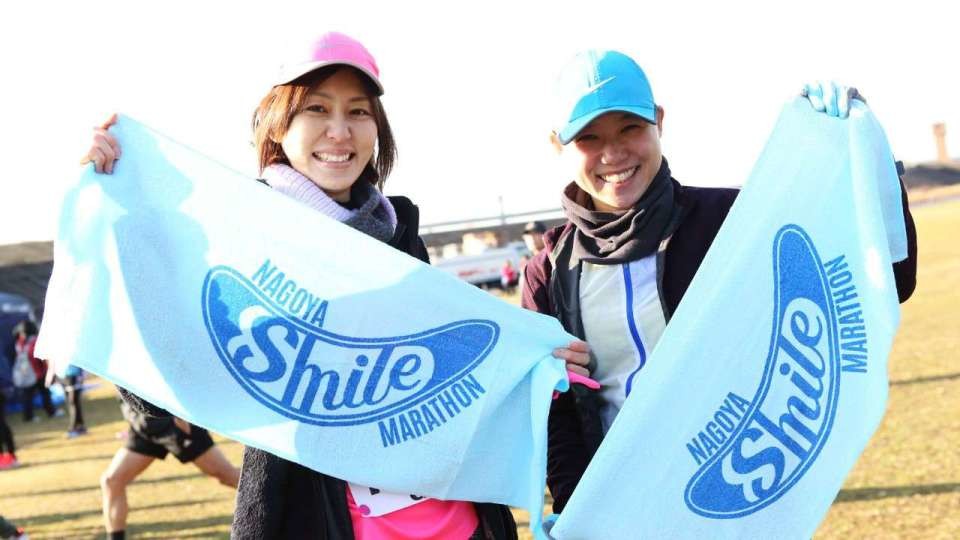
They then picked up their bib numbers and participation goods from a tent where staff were behind a clear plastic sheet.”

The first U.S. marathon of the summer of 2020 is set to take place in August. The Fargo Marathon in North Dakota announced it has been green-lit by the state to host the event.
In the last month, restrictions have eased across the U.S., and on June 18, race organizers released a statement announcing that the event would go ahead as planned later this summer. This will likely make it the first marathon held in the U.S. since the start of the pandemic.
Racing will hopefully slowly begin in Canada in the coming months, however, a slow roll-out is a safe roll-out and Canadian runners will be ready when the time comes.
(06/25/2020) ⚡AMPby Madeleine Kelly
Virus puts 2016 World Under-20 10,000 meters champion Rodgers Kwemoi’s debut over 21km on hold, for now
Kenyan athletes have been going abroad to look for greener pastures, and many have landed in Asian countries, mostly in Japan.
A number of them have been contracted by Japanese firms. They work and participate in various events while representing these companies.
But that is not to say that these athletes miss out on representing their home countries in either Commonwealth Games, World Championships, World Half Marathon Championships or the Olympics.
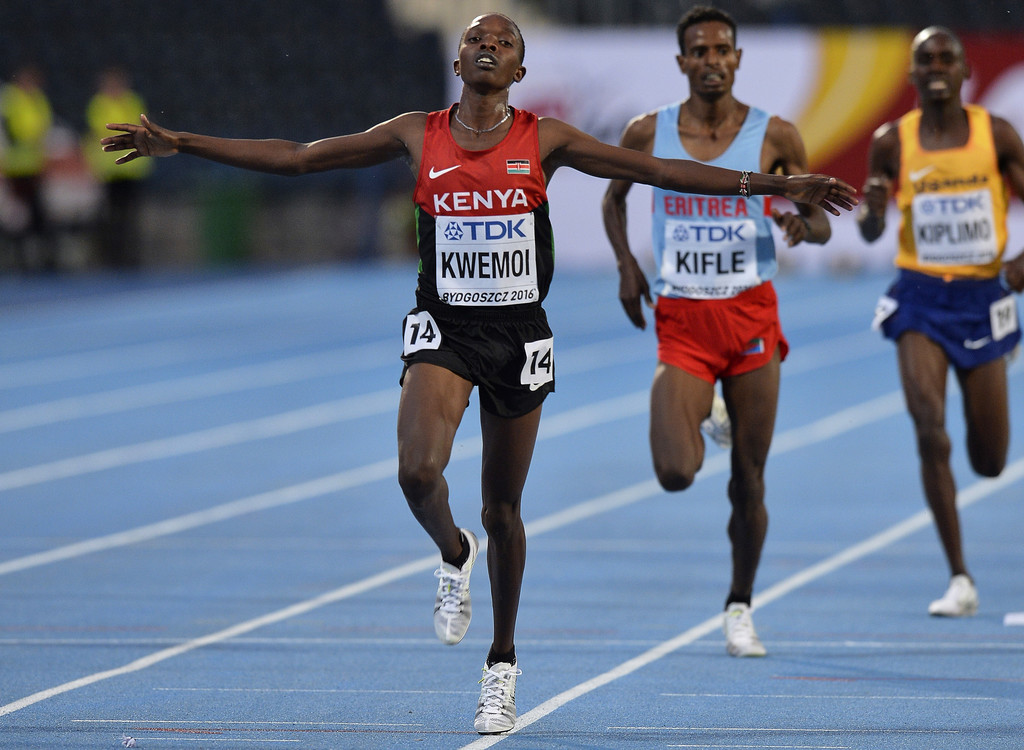
Covid-19 pandemic has led to cancellation of races globally. Others such as the 2020 Olympic Games were postponed to next year.
Still, travel plans by many athletes have been thrown into disarray.
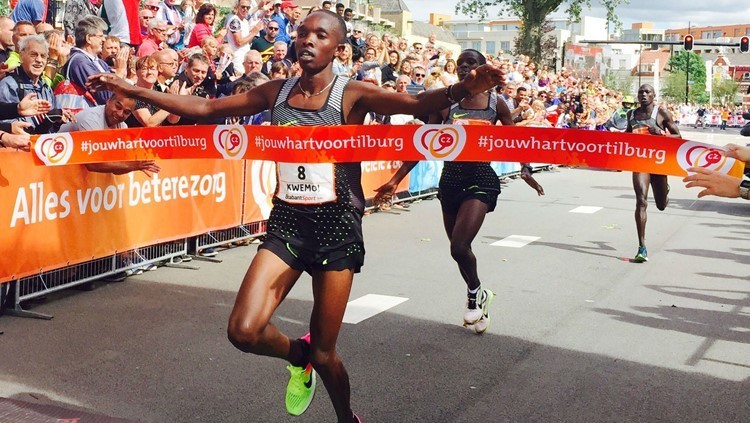
One such athlete is 2016 World Under-20 10,000 metres champion Rodgers Kwemoi.
Nation Sport caught up with him at his home in Eldoret, Uasin Gishu County after he failed to travel back to Japan when the Kenyan airspace was closed in March.
Kwemoi has been working with Asian Kogyo Corporate team since 2015, and his athletics career has grown steadily. He arrived back home in January to prepare for Lisbon Half Marathon, where he was to make his debut over the distance but that was not to be as the race was cancelled.
Came back home to train.- “I came back home to train here for endurance because I was going to run the 21km race for the first time and I was just working on endurance. I had prepared well and I knew I was going to do well but the virus stalled my dreams,” Kwemoi, who is under Global Sports Communication stable, said.
The virus spread so fast Kwemoi couldn’t catch a flight back to Japan, his second home, because the Kenyan air space was closed in an effort to contain the spread of the global pandemic.
He hopes that things will return to normal again for competitions to resume because he is missing the sport.
The soft-spoken athlete was in the Kenyan team for 2019 World Championships in Doha, narrowly missing out on the medal bracket as he finished fourth.
He blames that performance on inadequate training occasioned by a lot of traveling.“I would have done better in the championships but my training was disrupted. I traveled to Japan and back and I had few weeks to prepare,” Kwemoi, who is also the Commonwealth Games 10,000m bronze medalist, said.
But back in Japan, life is slowly returning to normal.
Stephen Mayaka, the head coach at Oberlin University Tokyo, says although the deadly virus has disrupted sports globally, but he is happy that competitions will resume next month in Tokyo.
“Things are getting back to normal here and we are even getting back to competitions next month where athletes will be competing in Hokuren challenge meet in Hokkaido on 4th,8th,15th and 18th July,” Mayaka told Nation Sport on phone from Japan.
He also said that athletes in Japan are in good shape and are looking forward to competing.Mayaka also said that he was looking forward to the Olympics Games but it was unfortunate because it had to be shifted to next year.
(06/25/2020) ⚡AMPby Bernard Rotich
Tokyo 2020 Olympic Games
Fifty-six years after having organized the Olympic Games, the Japanese capital will be hosting a Summer edition for the second time, originally scheduled from July 24 to August 9, 2020, the games were postponed due to coronavirus outbreak, the postponed Tokyo Olympics will be held from July 23 to August 8 in 2021, according to the International Olympic Committee decision. ...
more...The 2020 New York City Marathon Cancelled Over Coronavirus Concerns
The New York City Marathon, the world’s largest marathon and one of the city’s biggest annual spectacles, has been canceled this year as concerns about the spread of the coronavirus continue to dash hopes of holding large-scale events, organizers announced Wednesday.
The race, one of the most prestigious and lucrative events of its kind, would have celebrated its 50th anniversary in November. It is one of the highlights of fall in New York and on the endurance sports calendar, attracting more than 50,000 runners, 10,000 volunteers and roughly one million fans, who line nearly every accessible yard of the 26.2-mile course through the five boroughs.
City officials and New York Road Runners, which owns and organizes the event, decided holding the race would be too risky. Public health experts have said mass events, especially those that bring people together from across the globe, will remain a danger until a treatment or a vaccine for Covid-19, the disease caused by the virus, is widely available.

White House officials have issued warnings about another wave of infections this fall. And while infection rates in the New York metropolitan area are now among the lowest in the country, the virus is spreading at concerning rates in areas that have not heeded the advice of public health officials to continue to practice social distancing, avoid public gatherings and wear masks. Cases were rising in 26 states on Tuesday night.
Following those guidelines while holding a major race is simply impossible, leaving the endurance sports business economically devastated this year.
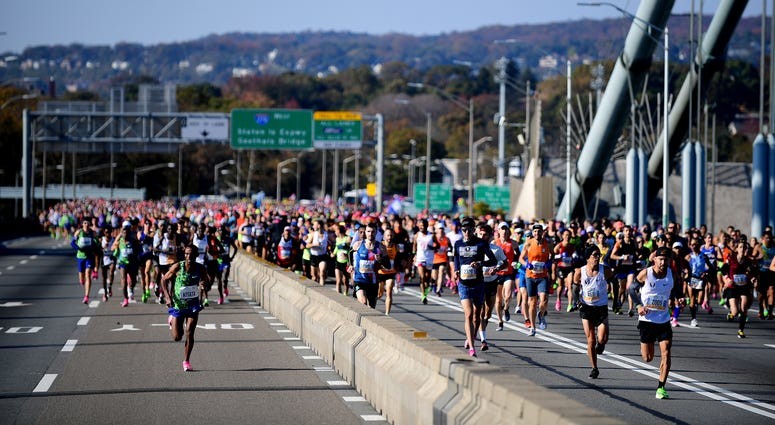
Michael Capiraso, the chief executive of New York Road Runners, said he and other organizers had held out hope that the race could happen. They decided to cancel before having to spend more money to organize it.
“There was hope but that turned to uncertainty, and given what we have seen the past months this was really the only decision,” Capiraso said.
Runners who had signed up for this year’s race will be able to choose to receive a refund or to defer their entry to the race during the next three years. They will also have the option to run the race virtually. Organizers said they would announce details of the virtual event in July.
In the New York marathon, the runners and thousands of volunteers are transported to a starting line village at Fort Wadsworth on Staten Island, where they huddle and wait for hours to be called to the start at the foot of the Verrazzano-Narrows Bridge. The runners then cram into a series of starting corrals while they wait for a cannon sound to signal the start of the race.
(06/24/2020) ⚡AMPby Matthew Futterman
TCS New York City Marathon
The first New York City Marathon, organized in 1970 by Fred Lebow and Vince Chiappetta, was held entirely in Central Park. Of 127 entrants, only 55 men finished; the sole female entrant dropped out due to illness. Winners were given inexpensive wristwatches and recycled baseball and bowling trophies. The entry fee was $1 and the total event budget...
more...Mo Farah is returning to the track
Briton Mo Farah will return to the track for the first time since 2017 in a bid to break the men's one-hour world record at the meeting in Brussels on 4 September.
The 37-year-old, winner of multiple world and Olympic titles, will aim to better Ethiopian Haile Gebrselassie's 13-year-old record of 21.285km.
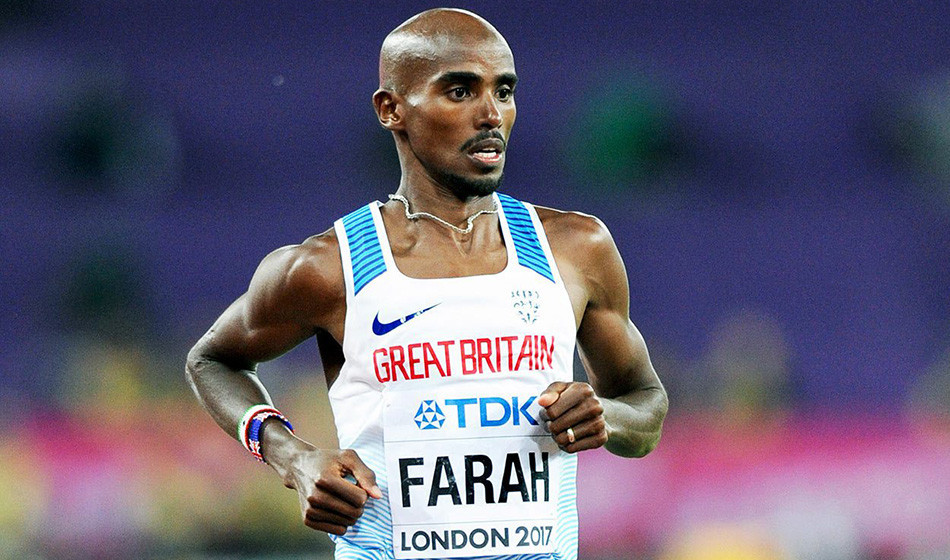
European 10,000m silver medalist Bashir Abdi will line up against Farah.
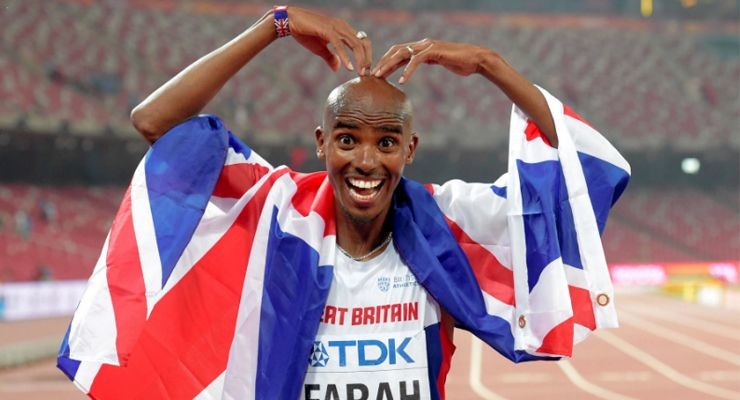
Ethiopia's Ababel Yeshaneh and Birhane Dibaba will go for the women's record.
That mark of 18.517km was recorded by their compatriot Dire Tune in 2008.
The one-hour run is where athletes try to cover as much distance as possible within one hour.
Katarina Johnson-Thompson, Britain's world heptathlon champion, will look to finish higher than Olympic champion Nafi Thiam once again when they compete in a 'triathlon' contest featuring 100m hurdles, shot put and high jump.
(06/24/2020) ⚡AMPby Athletics
The postponed Haspa Marathon Hamburg will be allowed to take place with 10,000 runners, both elite and mass races
In a surprising turn of events, the postponed Haspa Marathon Hamburg will be allowed to take place with both elite and mass races on Sunday, September 13. The event, which was originally scheduled for April 19, has been granted an exemption by German authorities –who had implemented a ban on all large events through October 24– because organizers have agreed to implement a rigorous anti-COVID hygiene plan. The event is a World Athletics Gold Label Road Race.
“We are optimistic that the Haspa Marathon Hamburg will be started on 13 September,” said chief organizer Frank Thaleiser through a statement. “We have the plans and the infrastructure required. We will now make detailed plans together with the city to realize the race.”
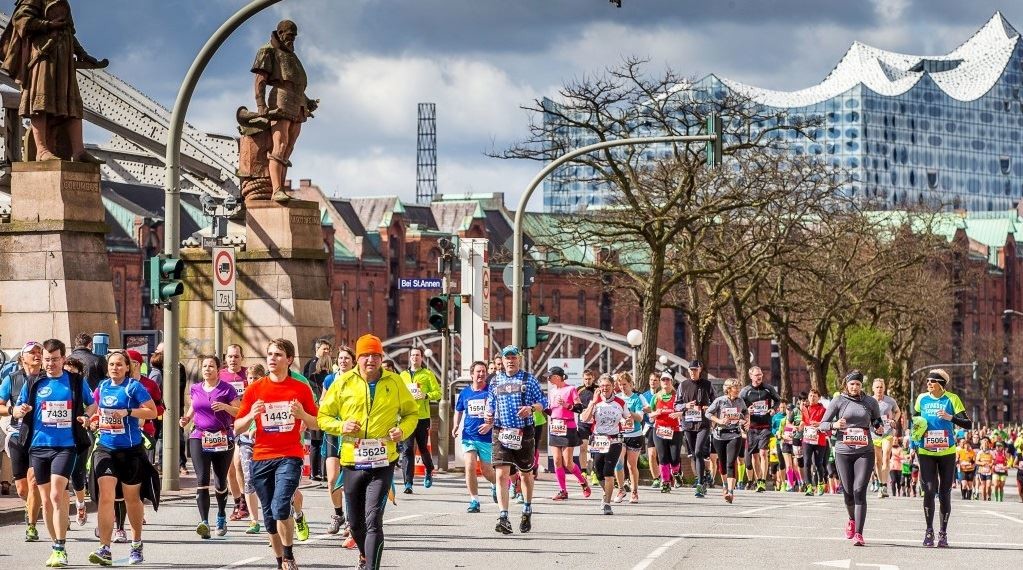
Organizers are expecting 10,000 runners for the marathon, plus an additional 4,000 in a companion half-marathon (last year’s marathon had 10,079 finishers). The marathon and half-marathon will have different start and finish areas. Runners in the half-marathon will start in several groups between 8:00 and 8:30 a.m., while the marathon runners will begin racing at 9:30 a.m. with a starting time window of just under two hours. The athletes will be sent on the course in “batches” of 1,000 per starting group in roughly ten-minute intervals.
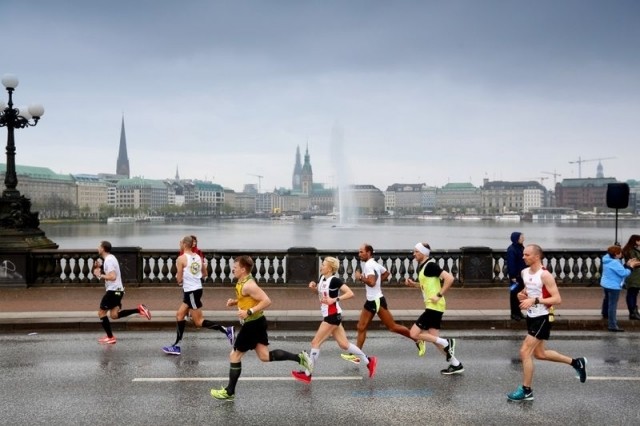
To ensure physical distancing before the race, runners will assemble in predetermined groups in different halls of the Expo building. There, and also in the finish areas, a total of 120,000 square meters of space will be available to the organizers and under their control; spectators will not be allowed to enter. Disinfection stations will be set up both in the event areas and along the course.
Moreover, all participants will be given a tubular scarf with a breathing filter. These must be worn over the nose and mouth in the event area including the start and finish areas. During the race runners must have these with them and put them over mouth and nose after they cross the finish line. No open drinks or individual food offerings will be available in the finish area; instead all participants will receive a refueling package. Other facilities which are usually on offer, such as massage and showers, will not be available.
“The organizational and hygiene policy should demonstrate that a running event with up to 14,000 participants within a city environment can be carried out responsibly while respecting the restrictions on contact and current hygiene guidelines since the outbreak of the COVID-19 pandemic,” Thaleiser added.
The elite field will be scaled down to about 30 athletes, organizers said. These will be the only athletes standing together on the starting line. These athletes will have to undergo testing for the novel corona virus before the race, and will only be drawn from certain countries given travel restrictions. Participation by athletes from countries where the novel corona virus poses a higher risk will not be allowed, either in the elite or the mass field.
The detailed hygiene policy was developed with the help of Manchester Metropolitan University in England which offers a masters degree in Crowd Safety and Risk Analysis.
The Haspa Marathon Hamburg was founded in 1986. Ethiopians Tadu Abate (2:08:26) and Dibaba Kuma (2:24:42) were the race champions in 2019. The course records are 2:05:30 by Kenya’s Eliud Kipchoge in 2013, and 2:21:54 by Ethiopia’s Meselech Melkamu in 2016.
Separately, the massive BMW Berlin Marathon, scheduled for Sunday, September 27, has yet to announce how their event will be staged this year, if at all. Their most recent statement, dated May 27, said that officials were continuing “to put all our energy into considering various options” for the race. An announcement is expected, soon.
(06/24/2020) ⚡AMPby David Monti
Haspa Marathon Hamburg
The HASPA MARATHON HAMBURG is Germany’s biggest spring marathon and since 1986 the first one to paint the blue line on the roads. Hamburcourse record is fast (2:05:30), the metropolitan city (1.8 million residents) lets the euphoric atmosphere spill over and carry you to the finish. Make this experience first hand and follow the Blue Line....
more...2020 Medtronic Twin Cities Marathon to be Held Virtually due to the pandemic
Due to the ongoing COVID-19 pandemic, Twin Cities In Motion will conduct the 39th Medtronic Twin Cities Marathon Weekend and its other remaining 2020 events virtually. The decision to forgo in-person events was guided by public health officials and made in consultation with the Twin Cities In Motion medical directors. It was made with the safety of participants, volunteers, spectators, and the community at large foremost in mind.
The 39th Medtronic Twin Cities Marathon Weekend was originally scheduled for October 2-4. The event regularly draws 30,000 participants and 300,000 spectators.
Twin Cities In Motion made this decision based on current Minnesota Department of Health restrictions that do not allow for public gatherings larger than either 25 or 250 persons (depending on venue), and which are not expected to be loosened substantially between now and October.

“In the early months of the COVID-19 crisis, we hoped to hold an in-person Medtronic Twin Cities Marathon Weekend in a manner that was safe for runners, spectators, volunteers, and the community at large,” Twin Cities In Motion president Mike Logan said. “Based on guidance from public health authorities and our medical directors, however, we have determined that is not possible. We make the decision with a heavy heart, but we know it’s the right thing to do for our runners and our community.”
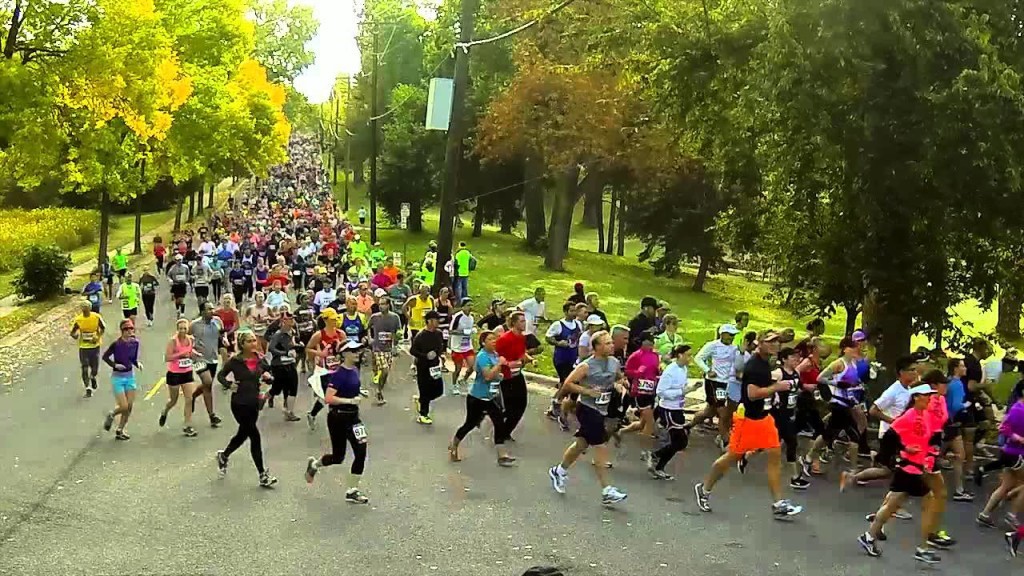
The following 2020 Twin Cities In Motion events will now be held virtually:
Red, White & Boom! TC Half Marathon, Relay & 5K,presented by Summit Brewing CompanySaturday, July 4 – Saturday, July 18
Medtronic TC 1 Mile.- Thursday, August 13 – Thursday, August 20.
Twin Cities Orthopedics' Women Run the Cities.- presented by PNC Bank, Thursday, September 10 – Sunday, September 20.
Medtronic Twin Cities Marathon Weekend.- Thursday, October 1 – Saturday, October 31.
Twin Cities In Motion is currently transitioning its events into robust virtual offerings where runners have an extended period of time to run their race in a safe, socially distanced manner, submit results, earn participant gear and finisher medals and participate in app-based and social media-centered activities. Virtual Medtronic Twin Cities Marathon activities will last the entire month of October.
Twin Cities In Motion is able to provide a partial credit to participants who signed up for in-person races. Registration is also open for the now-virtual events, and registration for the virtual Medtronic TC 10 Mile, which had not yet launched, will open on Thursday, July 9 at 10 a.m. with first-come first-served rush registration.
(06/24/2020) ⚡AMPMedtronic Twin Cities Marathon
The Medtronic Twin Cities Marathon Weekend offer races, walks and activities for every age and ability level! Learn more about the weekend's events and activities by using the navigation bar at the left or top of your screen. The Twin Cities Marathonis a running event in the Minneapolis-Saint Paul area. The TCM was first run in 1982, and typically takes...
more...Organisers hopeful of making Hamburg Marathon happen September 13
Organisers of the Haspa Hamburg Marathon announced that the World Athletics Gold Label road race is scheduled to go ahead on 13 September 13 with both elite and mass races. They also set out a comprehensive hygiene policy, based on international expertise.
With the guidelines in place, organisers are hopeful that 10,000 marathon runners and 4000 participants in the half marathon will be able to race. If this does go ahead, given the current situation caused by the coronavirus, the race in Hamburg would most likely be the first significant international marathon to take place with an elite and mass field since the start of the pandemic.
“We are optimistic that the Haspa Hamburg Marathon will go ahead on 13 September,” said chief organiser Frank Thaleiser. “We have the plans and the infrastructure required. We will now make detailed plans together with the city to realise the race.”
The Haspa Hamburg Marathon was originally planned for 19 April. The rescheduled race will have a reduced elite field of about 30 athletes. The athletes will have to undergo testing before the race and will only be drawn from certain countries, given the restricted travel situation. Participation by athletes from countries where the coronavirus poses a higher risk will not be allowed – either in the elite or in the mass field.
Last week chancellor Angela Merkel met the presidents of Germany’s federal states and the decision was agreed that major events would not be permitted to take place until the end of October but exceptions can be made for events where contact tracing and adhering to hygiene regulations are possible. Individual federal states are also permitted to set their own regulations.
The half marathon and marathon will have different start and finish lines as well as different start times. Most of them will be in batches of 1000 per starting group who will be sent on their way at roughly 10-minute intervals. Disinfection stations will be set up both in the event area in general and along the course.
“I am very much looking forward to this race,” said Germany’s 2:12:50 marathon runner Philipp Pflieger. “It was a frustrating situation when all events were cancelled. I stopped training for a while, but now there is a major goal again.”
(06/23/2020) ⚡AMPHaspa Marathon Hamburg
The HASPA MARATHON HAMBURG is Germany’s biggest spring marathon and since 1986 the first one to paint the blue line on the roads. Hamburcourse record is fast (2:05:30), the metropolitan city (1.8 million residents) lets the euphoric atmosphere spill over and carry you to the finish. Make this experience first hand and follow the Blue Line....
more...The Science Behind Why We Procrastinate—and How to Stop the Cycle
From making a doctor’s appointment to doing speedwork, new research digs into the reason we put things off.
Procrastination is—unfortunately—a part of life, from putting off a speed workout to making a doctor’s appointment. Now, new research explains why we do it.

Reframing your responsibilities in a positive way can help prevent against procrastinating in the first place.
You know you have to do that speed workout to hit your goals, or turn in that work project before Friday, or make that dentist appointment they keep reminding you about. And yet, you don’t.
Procrastination is something all humans do—there’s a reason post offices are open until midnight on tax filing day—but why do we drag our feet even on seemingly easy tasks? A recent study published in the Journal of Consumer Psychology suggests it all has to do with how we blend anticipation, excitement, and dread.
In an experiment, researchers asked 171 participants to eat jelly beans that ranged in flavor from delicious to disgusting—some tasted like orange sherbet and watermelon, but others like dirt or rotten eggs. People tended to feel impatient and excited about eating the good-tasting ones, and not only dreaded the awful ones, but also disliked the feeling of having to wait to eat them.
Not surprisingly, this shows that people want to have good things now and delay bad things, and it’s the anticipation of both positive and negative tasks that drive our behavior, according to study coauthor David Hardisty, Ph.D., assistant professor in the marketing and behavioral science division of the University of British Columbia’s Sauder School of Business.
For example, he told Runner’s World, if you ask people when they want to receive $50 now or in a month, everyone will choose now. But if you ask when they would rather pay $50 for a bill, half of people would rather pay later.
“This happens partly because the anticipation of positive versus negative events is asymmetric,” he said. “When we imagine future positive things, we both enjoy imagining it and feel impatient. But when we imagine future negative things, we just hate thinking about them.”
How do you break this cycle, especially for those running and cross-training goals you want to crush? It’s all about reframing how you think about it, according to Hardisty.
“If you are thinking about a run or workout as a positive thing, you’ll want to do it now, because you’ll feel impatient—in a good way—and you’ll savor it,” he said. “If you think of it as a negative thing, you may put it off until later, or do it now to ‘get it over with.’”
In other words, seeing your task as negative means you’re only 50/50 about doing it, but reframing it as a positive pops you up to almost 100 percent likelihood of getting it started and completed.
Changing the language of how you think about negative tasks can help. Instead of “having to” do speed work, for example, remind yourself that you “get to” do it. The brain responds to this type of subtle messaging tweak.
Cultivating this sense of anticipation can create a feeling of excitement that will also make you savor what you’re doing, he added. Let’s face it, this technique may not help with tax prep, but it could be a boost when you’re trying to hit one of your running goals.
(06/23/2020) ⚡AMPby Runner’s World
Author and journalist Bella Mackie on how running helped her mental health
I’ve been an anxious person my whole life. I think it’s common with things like anxiety and OCD for it to present in childhood. I remember those feelings as a kid, but not knowing what it was. I think a lot of people, when they’re finally diagnosed with depression or anxiety, feel relief.
People with a mental health issue get good at keeping it a secret. As a kid, I had OCD behaviours, like turning the light switch on and off. Later, I got adept at making excuses for things. I didn’t fly or take the tube for a long time, and came up with excuses.
I don't remember why I decided to go running. But I know I was embarrassed, because I did it at night. It was down an alleyway and I just kept going back there because I was too ashamed to run anywhere else, as I thought people would laugh and shout at me. You realise, though, that it’s a load of balls. No one is looking at you:everyone’s on their phone.
I don't know why I went back for a second run. Perhaps it’s because for those three minutes I felt a bit less teary, and a bit less focused on what was going on inside my brain. I always say that running is a chance to run away, but you get to come home.
With running, you incrementally improve every time you do it. You’re hitting these goals and feeling proud of yourself. And it gives you this sense of independence, which for someone like me, with agoraphobia,I found to be the most mesmerising, intoxicating thing in the whole world.
When I was writing my book, Jog On, I read a lot about dualism: the idea that the mind and body are connected. In the modern world, we’ve separated them: we see our minds as the primary thing to be prized and our bodies as vessels that carry our minds. We forget how much impact the body has on the brain. Running was my way to get my mind out of the driving seat and put my body in control.
Before running, I was the most unfit person you could meet. I thought people who exercised were odd. I’d spent gym lessons at school smoking cigarettes. I did no physical exertion until I started to run, aged 30.
Running taught me not to be scared of things. Within a month, I was running through central London on my own, and I hadn’t been there on my own for years. And every time I did it, it enforced the idea that I was fine. I started to do other things that scared me: getting in lifts, going away on my own, trapezing. Now my motto is: if it scares me, I have to do it. I haven’t had a panic attack in six years.
I'm an anti-wellness proponent. I eat ice cream after every run. I drink loads of Diet Coke and wine. I’m a really unhealthy person who runs every day. I’m never training for anything. I’m not a racer; I’m not interested in personal bests. I’m a really crap runner. I do about 12-13km every day, and that sets me up for the rest of the day.
(06/23/2020) ⚡AMPby Runner’s World
Two-time US Olympian Dick Buerkle has died at age 72
Rochester native Dick Buerkle, who at one time held the world indoor track and field record for the mile and twice qualified for the U. S. Olympic team, died Monday morning having suffered from a rare form of Parkinson’s called Multiple System Atrophy. He was 72.
“Dick never stopped pushing,” his daughter Lily Buerkle said. “There was no such thing as a relaxed family run around the block. Every run ended in a sprint. Dick’s elbow would always find a way to edge out the person next to him, even if it was his young daughter.”
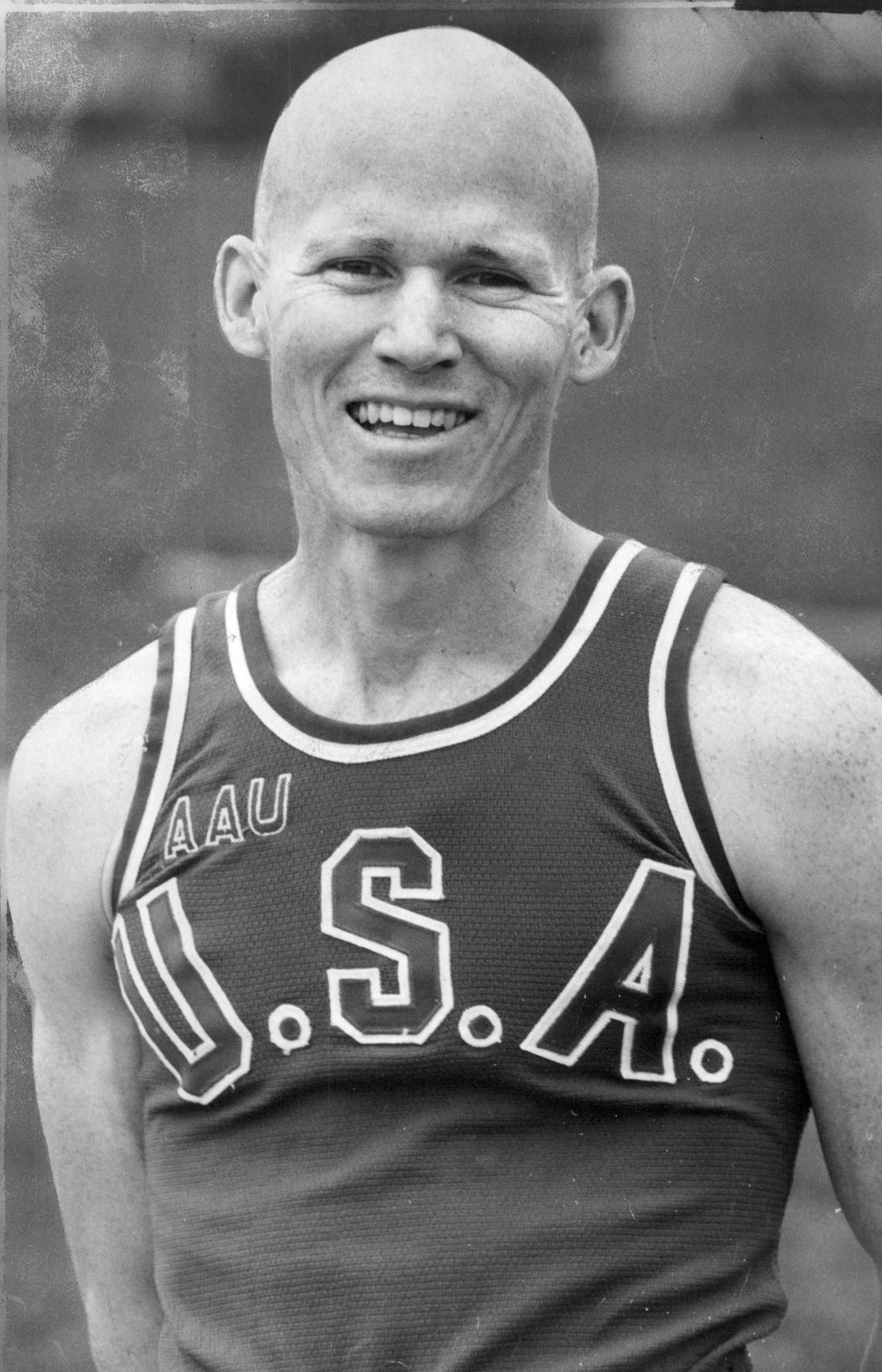
Buerkle graduated from Aquinas Institute in 1966, having competed for the Little Irish track team in only his senior year. He went on to Villanova University and performed as a non-scholarship athlete for two track seasons before finally earning a scholarship in his junior year.
During his time in college, he was a three-time NCAA All-American who finished third in three NCAA finals events: The 1969 and 1970 indoor two-mile race and the 1970 outdoor three-miler.
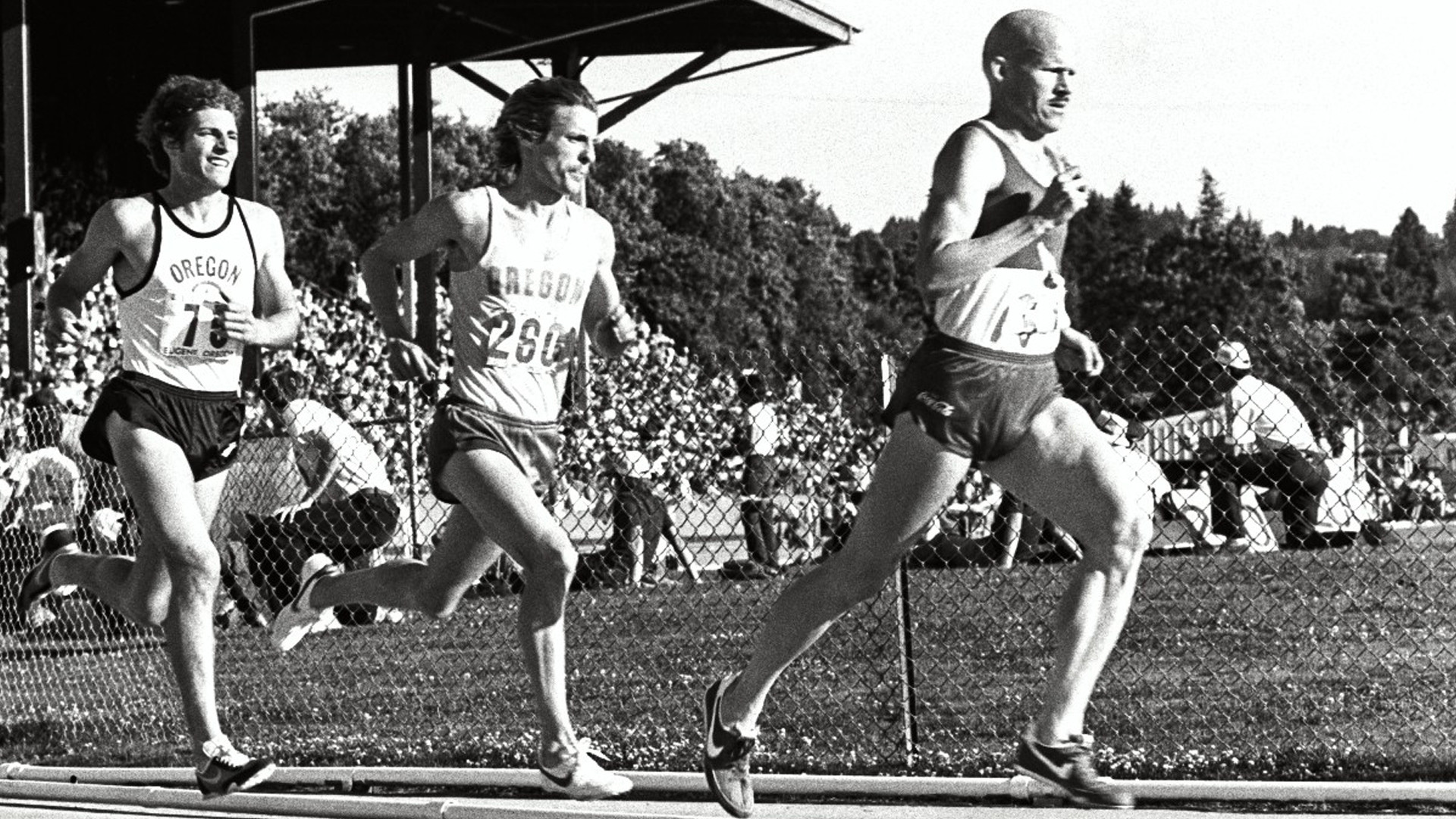
Known for his bald head long before the look became chic – he lost all his hair by the age of 12 due to alopecia – he graduated in 1970 and became a star runner on the national track circuit, though he remained an amateur.
As he lost his hair, the chip on his shoulder grew,” said Lily, who also added that later in her father’s life, he was, “forever thankful to Michael Jordan for shaving his head and ultimately making bald cool."
While he achieved fame for his 1978 world record time in the mile, between 1970 and 1981 Buerkle was ranked among the top 10 Americans at the 5,000-meter distance seven times and was No. 1 in the U.S. in 1974, No. 4 in the world.
That was the distance at which he competed in the Olympics. He did not make the 1972 team that went to Munich, but he won the 1976 U.S. Olympic trials to earn his spot in the Summer Games at Montreal.
By that time he had moved to Buffalo and was working for Bausch and Lomb as a contact lens salesman. At Montreal, he ran ninth in the trial and did not get to race for gold in the final.
Buerkle also qualified for the U.S. team in 1980, but never got to compete because President Jimmy Carter boycotted those Games in Moscow in protest of the Soviet Union’s invasion of Afghanistan; politics ruined four years of training for Buerkle and so many other athletes.
It was in between those two Olympiads, on Jan. 13, 1978, at the CYO Invitational held at Cole Field House on the campus of the University of Maryland, when Buerkle broke the indoor mile world record with a time of 3:54.93, defeating heavy favorite Filbert Bayi.
(06/22/2020) ⚡AMPHow Eliud Kipchoge has been handling things during the COVID-19 crisis
Ever since he won the marathon Olympic gold at the Rio Games in 2016, Eliud Kipchoge of Kenya has been smashing records with authority. He planned to crack a few more this year before the pandemic struck and halted his progress.
“The postponement of the Tokyo Games [to 2021] has turned everything, from preparation to planning, upside down for me,” he told Sportstar from Kenya on Friday.
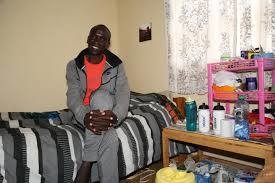
The World record holder, who has won 11 of the 12 official marathons he has taken part in, said he is tackling the tough days by staying positive and setting safety as his priority.
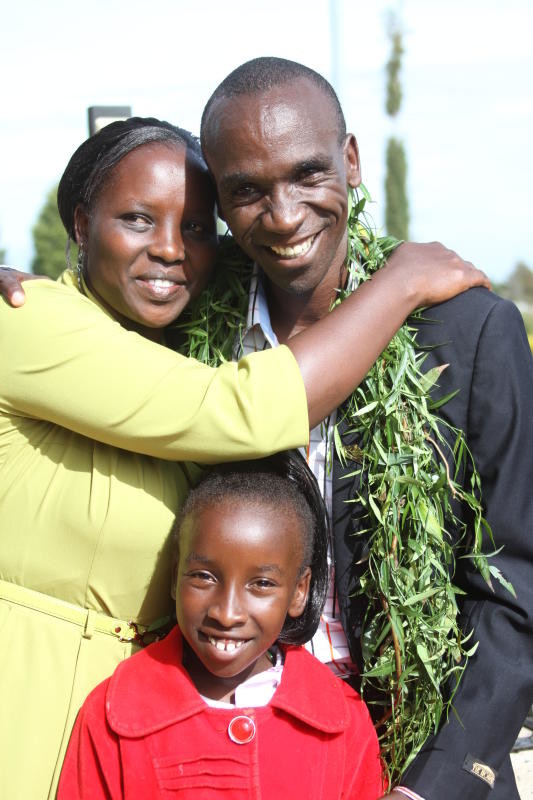
Isolation training
“I have never been in a hard situation like this. This one is completely different and has hampered my training in a big way,” he said. “It has not only affected my training but my fitness too. Training in isolation is not easy and, without your teammates around, it is hard to gauge your fitness as well. Consistency and setting your goal is another recipe.”
But Kipchoge was quick to point out that the pandemic has taught him life’s big lesson: “To treat the uncertainties and accept the change as it happens.”
Having run 3.2kms to school on a daily basis, the Kenyan has moulded himself into a tough nut to crack. “Yes, I was born tough and have also gone through some tough situations in life but the pandemic is tougher still,” he said.
Patiently waiting
How about defending the marathon title at the Tokyo Games? “It’s not easy to clinch the gold as it needs total dedication and patience and, above all, consistency,” said the 35-year-old, who won at Rio with the biggest margin of victory (70 seconds) in the Olympics since 1972. The Kenyan had bagged a silver at Beijing (2008) and bronze at Athens (2004), both over 5000m.
Despite his advancing years, Kipchoge, who ran the world’s first ever sub-two-hour marathon by clocking 1:59:40 at a special event in Vienna last year, is determined to run many a mile. Besides the Olympics, he is eyeing a fifth London Marathon title.
He may have to wait for things to settle down before getting back on the road.
(06/21/2020) ⚡AMP8 Muhammad Ali quotes for running motivation
On June 3, 2016, boxing legend and civil rights activist Muhammad Ali passed away at the age of 74. Throughout his career in the 60s and 70s, he had a lot of big wins, including a gold medal at the 1960 Olympics in Rome and becoming the world heavyweight champion on multiple occasions. He also provided the world with a lot of great quotes, many of which pertain to boxing and sports in general, so in honour of one of the greatest boxers of all time, here are eight of his best quotes that can help motivate runners everywhere.
1)“I am the greatest. I said that even before I knew I was.”
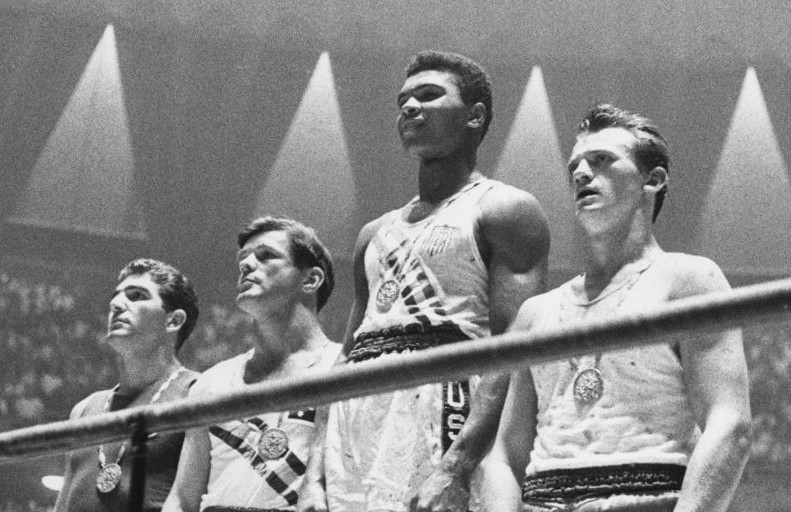

2)“He who is not courageous enough to take risks will accomplish nothing in life.”
3)“Only a man who knows what it is like to be defeated can reach down to the bottom of his soul and come up with the extra ounce of power it takes to win when the match is even.”
4)“Impossible is just a big word thrown around by small men who find it easier to live in the world they’ve been given than to explore the power they have to change it. Impossible is not a fact. It’s an opinion. Impossible is not a declaration. It’s a dare. Impossible is potential. Impossible is temporary. Impossible is nothing.”
5)“I hated every minute of training, but I said, “Don’t quit. Suffer now and live the rest of your life as a champion.'”
6)“A man who has no imagination has no wings.”
7)“The fight is won or lost far away from witnesses—behind the lines, in the gym, and out there on the road, long before I dance under those lights.”
8)“(Sonny Liston is) too ugly to be the world champ. The world champ should be pretty like me.”
(06/21/2020) ⚡AMPby Running Magazine
With Hayward Field’s reconstruction complete, the University of Oregon takes possession
The University of Oregon took formal possession of Hayward Field on Tuesday, bringing to an end a two-year reconstruction project that transformed the well-loved if antiquated UO stadium into one said to be among the best track and field facilities in the world.
Paul Weinhold, president and CEO of the University of Oregon Foundation confirmed the Tuesday handover in a text message on Wednesday.
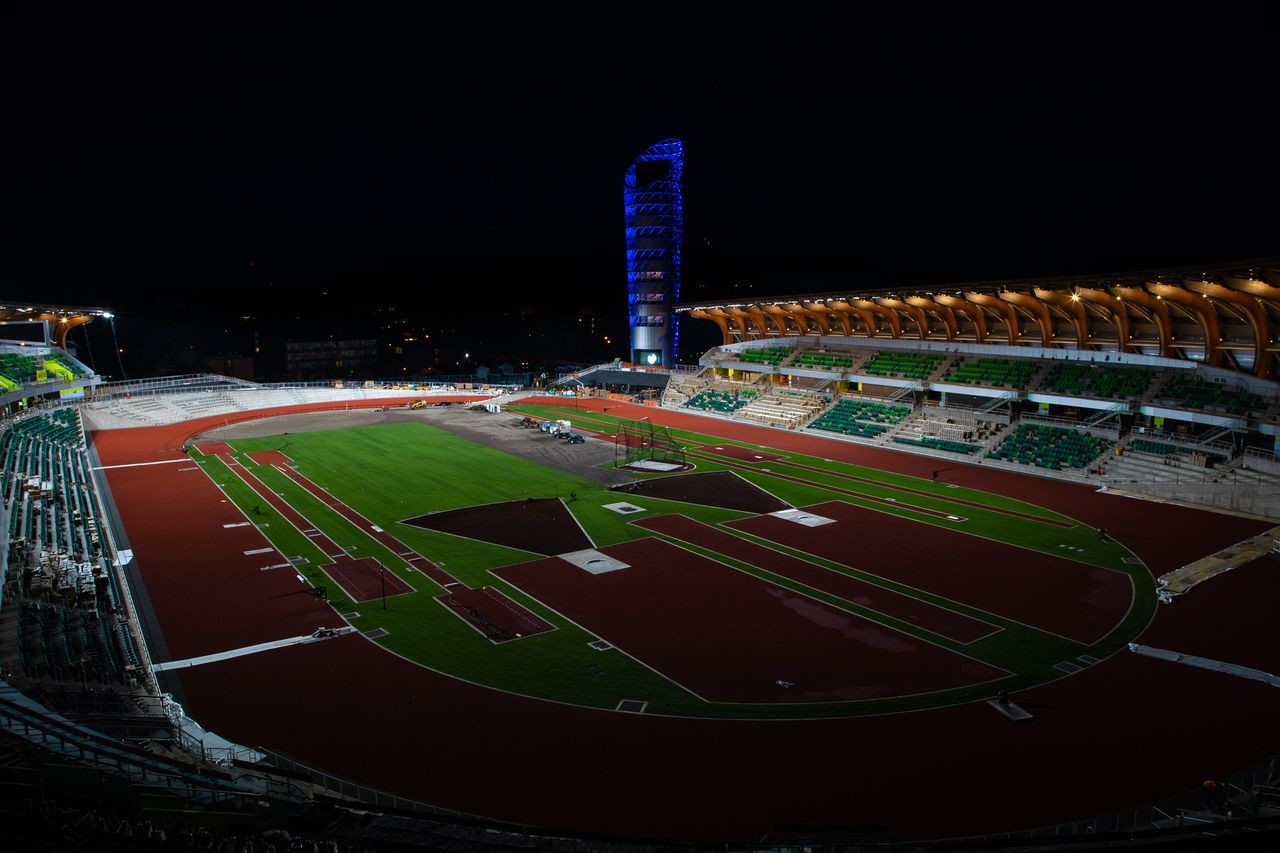
The campus property that houses the stadium had been leased to the limited liability corporation Hayward Field Enhancement for the length of the privately funded project. The project began in June 2018 and is estimated to have cost more than $200 million.
Weinhold said by text he knew of no immediate plans for a public unveiling of the new Hayward Field, and didn’t anticipate one until fall. The campus remains closed to the general public because of the coronavirus pandemic.
“That decision will be a UO Athletics decision,” Weinhold wrote.
Replying Monday by email, UO athletic department spokesman Zach Lawson referred a reporter to the university’s “Hayward Field Renovation” webpage, last updated for the week of June 1.
The original Hayward Field was built as a football stadium in 1919. It has been used for track meets since 1921. It was conceded to be inadequate for many reasons to host the 2021 World Outdoor Track & Field Championships, awarded to Eugene in 2015. The meet since has been delayed until 2022 because of the coronavirus pandemic.
Organizers originally had hoped to preserve as much of the historic stadium’s character as possible, including the east grandstand.
But attempts to raise private money for that design foundered. When Nike co-founder Phil Knight, a former UO track athlete, became involved, the original plans were scrapped in favor of a more modern look.
That led to a contentious back and forth between some longtime fans in the community. Hoffman Construction, the firm that handled the project, acted quickly to level the east grandstand less than two weeks after the conclusion of the 2018 NCAA Outdoor Championships, the final major event staged at the old Hayward Field.
The permanent seating of the new stadium is listed as 12,650 and expandable to nearly,25.000, making it significantly larger than the previous stadium. The older Hayward Field had a listed seating capacity of 10,500. But a hand count done in 2018 revealed no more than 8,500 seats.
Knight and his wife, Penny, are said to have contributed the lion’s share of the project’s funding.
The new stadium is said to feature a number of spectator upgrades, such as 22-inch seats and unobstructed sight lines.
It also will be used as a training facility for members of the UO track team. Among the enhancements are much larger indoor practice areas, locker rooms, a video room, weight room, treatment rooms, a theater and an area for training aids such as hydrotherapy pools and anti-gravity machines.
Attempts Wednesday to reach UO track coach Robert Johnson and Jimmy Stanton, UO senior associate athletic director for communications, were not immediately successful.
(06/21/2020) ⚡AMPby Oregon Live
Nike has made Juneteenth an annual paid holiday for employees
The running giant has declared June 19 a paid holiday for employees in support for the Black community
Nike is adding June 19, a civic holiday called Juneteenth, to its list of official paid holidays. The holiday is the oldest known celebration of the end of slavery in America. It commemorates the day that slaves in Galveston, Texas were told of their emancipation. Nike CEO John Donahoe made the announcement on Thursday following two weeks of anti-racism protests and demonstrations across the world. Juneteenth is recognized as a holiday or observance by 47 states, but still isn’t considered a federal holiday.

This news comes one week after Nike pledged $40 million USD to supporting the Black community in the U.S. “Systemic racism and the events that have unfolded across America over the past few weeks serve as an urgent reminder of the continued change needed in our society. We know Black Lives Matter. We must educate ourselves more deeply on the issues faced by Black communities and understand the enormous suffering and senseless tragedy racial bigotry creates,” said Donahoe.
“The NIKE, Inc. family can always do more but will never stop striving to role model how a diverse company acts. We will continue our focus on being more representative of our consumers while doing our part in the communities we serve.”
(06/21/2020) ⚡AMPby Running Magazine
These carbon fibre shoes are coming for Nike’s running crown In the race for every advantage, footwear designers are improving on nature by adding carbon fibre flex
Nike has conquered long distance running. Its thick, foam-soled shoes have grabbed headlines and rewritten records. In October 2019, the Portland, Oregon-based company provided the footwear worn by Eliud Kipchoge, who ran a marathon in less than two hours, a feat once thought impossible. At the Tokyo marathon in March, 28 of the top 30 runners were wearing a variant of Nike’s Air Zoom Alphafly Next% shoe.
The success of the footwear is thought to be down to a rigid carbon fibre plate with a thick stack of foam, which helps athletes use less energy, leading to faster times. But, by the time the world’s best runners return to Tokyo for the Olympics in 2021, Nike could have serious competition on its hands, from a little-known company that started out making suitcases.
Carbitex founder Junus Khan began experimenting with carbon fibre technology ten years ago in his garage in Washington state, with an initial focus on luggage. “What Nike did was fantastic, it’s proven,†says Khan, who has a background in the automotive industry and learned about materials and carbon fibre while working for supercar brands, in particular during a collaboration with Skylar Tibbits, the founder of MIT’s Self Assembly Lab. “They created an entire system which has shaken the running footwear industry to its core. But our approach is different.â€
Carbitex, which now has 50 staff, makes a new kind of carbon plate designed to aid natural running. It has two technologies: AFX and DFX. The former stands for asymmetrically flexible, meaning the plates can bend more one way than the other, much like parts of our body. DFX means dynamically flexible, where the plate exponentially increases in stiffness in order to meet the particular movement needs.
This means, in theory, that the plate could work to provide everyday comfort for walking, but also the stiffness required for a sprint. “When you go past a certain angle when you’re running, your foot bends beyond what it needs to, and the more it does that, the more energy you use,†Khan explains. “Our technology takes the foot to the angle it wants to go to, and then it gets stiff. That’s the concept our carbon fibre material enables, that other carbon fibre plates just can’t.â€
The changing stiffness of the plate in the shoe means your foot has, in effect, different gears, depending on its needs. “Our premise in footwear is that we look to augment your natural human ability,†says Khan. “We help the foot do more things it wants to do, and protect it from doing things it doesn’t want to do.â€
In March of this year, a young Ethiopian athlete called Bayelign Teshager won the Los Angeles marathon in a pair of adidas adizero pro running shoes, equipped with Carbitex technology.
But the company has ambitions beyond the track. Khan reveals that work is underway on a shoe that would be popular among triathletes, as it would lose stiffness when transitioning from cycling to running, and the company is also in talks with ballet and dance companies, and even the military. “If you can take out the super heavy rubber in military boots, then you can go further and waste less energy,†he says. Carbitex seems to be taking a suitably flexible approach.
(06/21/2020) ⚡AMPWhy track would benefit from major championships
Tennis and road running have competitions like Wimbledon and the Boston Marathon that stand above the rest, so why doesn’t track and field have major championships?
In a recent blog post written by NAZ Elite coach Ben Rosario, the topic of conversation was the state of running and track and how it could be improved by the Olympic Games in 2028. He wrote that he hopes by then, “we’re in a place where the Olympics is no longer the pinnacle of our sport.” How can this happen? By adding track and field major championships. Tennis, golf and marathons all have “major” competitions, and while the Olympics are still a big deal in each of these sports, Wimbledon, The Masters and the Boston Marathon are really the pinnacle events. Adding majors to track could take the sport to the next level.
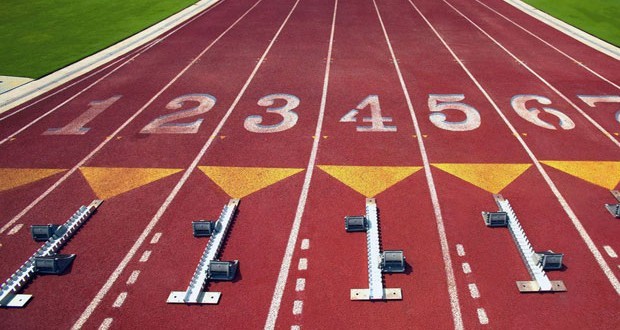
Yearly events
Right now in track and field, the biggest events are the Olympics and the world championships. The Olympics come around once every four years, and the world championships occur every two. Adding yearly major events to the track calendar that are as important to athletes as the Olympics and world championships would make the sport so much more exciting to watch, and it would give athletes big goals to chase year in and year out.
n tennis, Wimbledon and the Australian, French and U.S. opens are the pinnacles of the sport, and they each see a champion crowned every year. The Olympics are important to these athletes, but much more weight is placed on one of the sport’s four yearly major championships rather than the quadrennial Summer Games.
Can’t-miss events
In tennis and golf, no athlete misses the major championships unless they’re injured or other circumstances prevent them from attending the events. On the marathon circuit, it’s a little more difficult for elites to compete at each event, but the world’s best marathoners rarely go an entire season without competing in at least one of the Abbott World Majors. In track, there are big events each year, like in the Diamond League, but there’s no guarantee that the sport’s biggest names will be in attendance at these races.
Making track mainstream
For the most part, at this point in time, track is a sport that people only watch every four years. Every now and then CBC airs a track meet, but it’s not a common occurrence. Adding track majors would put the sport into the mainstream. Even the least enthusiastic of tennis fans watch the Wimbledon finals every year, and people who would normally rather watch paint dry than watch a full round of golf stare at the TV for hours every April when The Masters are on. Casual viewers would be much more likely to tune in to watch track if they knew the events mattered as much as the Olympics.
How would it work?
There would of course be a lot of debate as to where these majors would land, but Rosario pitched four possible events: the Prefontaine Classic in Eugene, Ore., “The Championships” in London, “The German Open” in Berlin and the “Tokyo Meet of Champions” in Japan. Spread these out over the year, just like the Abbott World Marathon Majors, and the world’s best track athletes will be likely to attend each one. It might take a while to give these events a real authentic feeling of significance, but after a few years (Rosario hopes by 2028), the Majors of Track and Field could be of equal or more importance than the Olympic Games.
(06/20/2020) ⚡AMPby Running Magazine
With no crowd, motivation comes from within for virtual Grandma’s Marathon runners
Runners face a number of challenges this year at the Grandma's Marathon. With the race going virtual, motivation coming from the crowd is no more.
"I do think that's going to be the bigger challenge because you won't have the crowds cheering you on," said Tony Stensland, a local running coach.

Stensland advises those running a virtual race to toward the ones you can count on.
"If you can utilize friends and family members to be your cheer squad, that helps a lot," added Stensland.
But for those riding solo, Stensland advises them to take a more mental approach.
"If you don't have some people to help you and you really are solo. Maybe just dig down deep and stay focused. Maybe run each mile for a person that's close to you," said Stensland.
Social media is another helpful tool as runners can connect with those as they do the race.
"If you have your cell phone with you, let people know you are doing this at this certain time and maybe they are going to be texting you along the way. This is a virtual race, so some of the rules and some of the etiquettes kind of go out the window. Try to make it fun and a enjoyable experience for yourself," added Stensland.
Creating your own race experience will only pay dividens in the end.
"If you know where your finish line is, sidewalk chalk a finish line on it, write finish, maybe motivational quotes along the road with sidewalk chalk, So little things like that where you can really personalize it for yourself. It's a great idea and it really adds to the experience," said Stensland.
Stensland also encouraged runners to make their race a personal experience because, in the end, it will be unique compared to other races.
(06/20/2020) ⚡AMPGrandmas Marathon
Grandma's Marathon began in 1977 when a group of local runners planned a scenic road race from Two Harbors to Duluth, Minnesota. There were just 150 participants that year, but organizers knew they had discovered something special. The marathon received its name from the Duluth-based group of famous Grandma's restaurants, its first major sponsor. The level of sponsorship with the...
more...A message from the race director of the London Marathon Hugh Brasher
I am sure earlier this week you will have seen the news that the Great North Run was sadly, but understandably, cancelled.
There has been much speculation that this means the 2020 Virgin Money London Marathon will also be cancelled. However, it doesn’t.
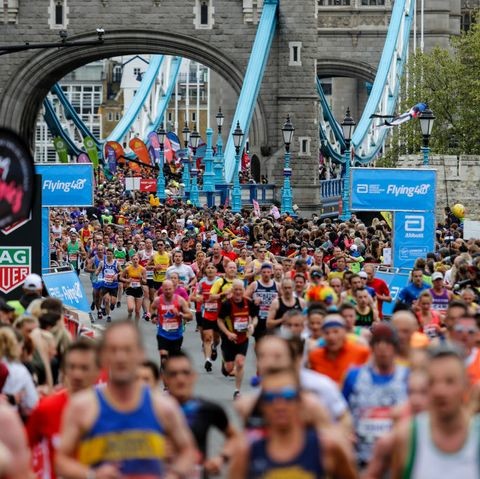
All road races have unique challenges. These might be transporting people to the start; transporting them from the finish; the density of runners on the course; the density and movement of spectators; providing runners with appropriate medical care and facilities such as loos and drinks; dealing with the logistics of road closures and reopenings – the challenges are always different for every race.
The team at London Marathon Events has been looking at the logistics of the Virgin Money London Marathon and coming up with innovative ways to socially distance the event.
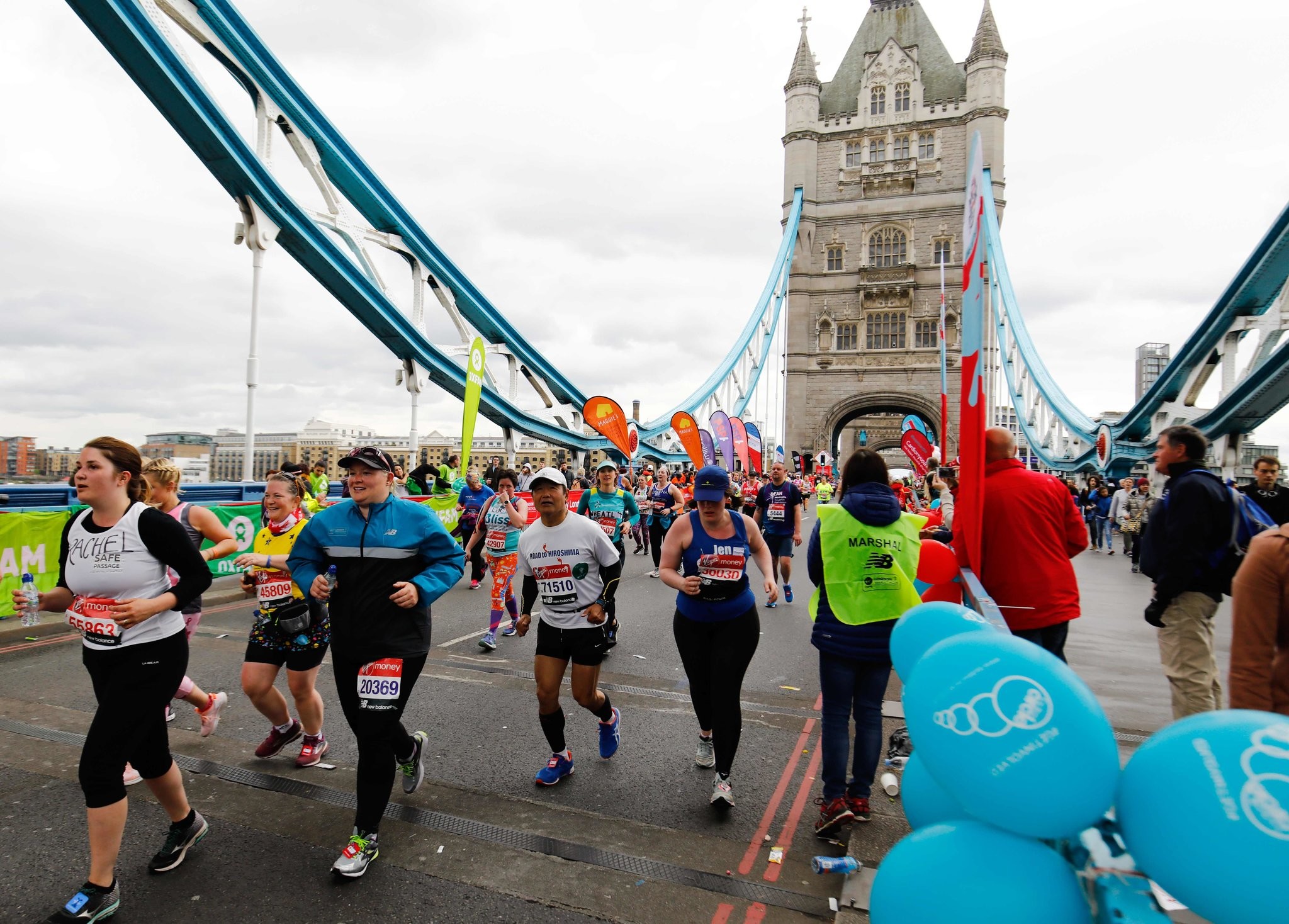
We have also been working with other mass participation event organisers in the UK, including the Great Run Company and Human Race, to make recommendations to the UK Government on how mass participation events can return.
As I write, there are currently just over 15 weeks before the planned date of our 40th Race on Sunday 4 October. Therefore, on the usual timescale for our event, we are currently at the equivalent of the first week of January.
That means there is still plenty of time to train and there is neither a need, nor should there be a desire, to be at your peak fitness yet.
We still don’t know whether we will be able run together, walk together and be together on that journey of 26.2 miles on 4 October. Almost every day we hear hopeful news from other countries and we hear tales of despair.
However, what we do know is that we have hope, desire and ingenuity. Hope that the world will have found a way through Covid-19 by October. Desire to show the positive effects of running a marathon, running for communities and good causes. Ingenuity of thought, technology and people.
So please, focus on your own health and the health of those around you. Focus on running and exercise. It is great for you physically and mentally.
I assure you that whatever decision we take about 4 October, it will be taken in line with our values and with the responsibility we have to you, our runners, our charities, our sponsors, our volunteers, our medics, our communities and our city.
Just over 40 years ago, on 26 October 1979, my father Chris Brasher, the co-founder of the London Marathon, started his column in The Observer with these words:
To believe this story, you must believe that the human race can be one joyous family working together, laughing together, achieving the impossible…
From those words, the first London Marathon was born.
While some may think what we are trying to do on Sunday 4 October is impossible, we will not give up hope.
The 40th Race should be a day that shows the best of humanity. A togetherness, a joy and a celebration of everything we treasure.
I look forward to that day.
Thank you for your patience and understanding. We will be in touch again on 28 July.
(06/19/2020) ⚡AMPTCS London Marathon
The London Marathon was first run on March 29, 1981 and has been held in the spring of every year since 2010. It is sponsored by Virgin Money and was founded by the former Olympic champion and journalist Chris Brasher and Welsh athlete John Disley. It is organized by Hugh Brasher (son of Chris) as Race Director and Nick Bitel...
more...The World’s Toughest Foot Race is on and going to be the first race covered by MBR since March 8. The 43rd annual event is set for July 6-8
The last race MBR posted results for was the LA Marathon March 8. Since then every race we cover, and we only cover the best, most unique and interesting races in world have either been cancelled or postponed. We are talking about races like the Boston Marathon, Big Sur and the Berlin Marathon only to name three.
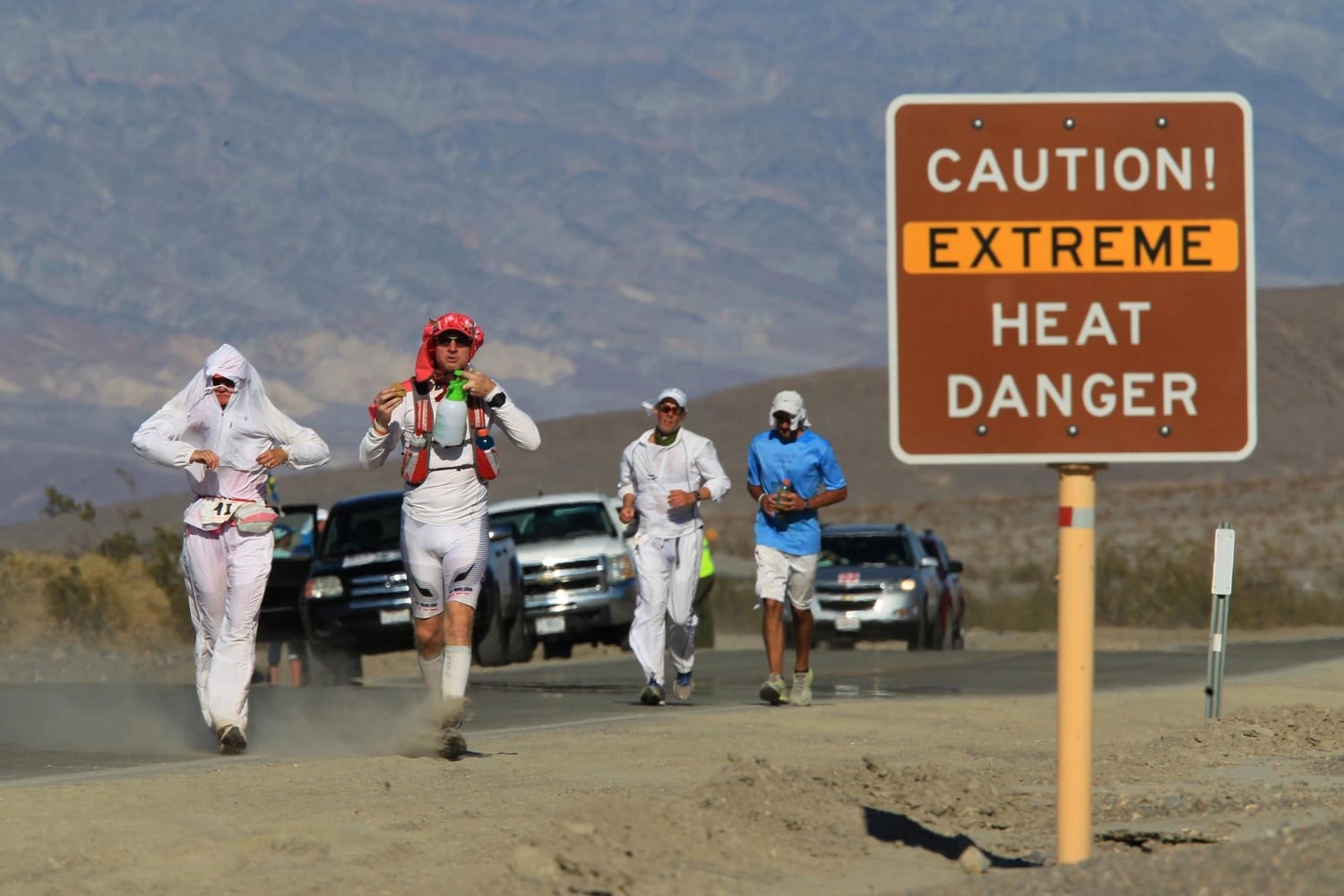
The big question has been, what race is going to be the first? it appears it is going to be an ultra race. A race celebrating 43 years. The Badwater 135. No races for four months.

Covering 135 miles (217km) non-stop from Death Valley to Mt. Whitney, CA, the Badwater® 135 is the most demanding and extreme running race offered anywhere on the planet.
The start line is at Badwater Basin, Death Valley, which marks the lowest elevation in North America at 280’ (85m) below sea level. The race finishes at Whitney Portal at 8,300’ (2530m), which is the trailhead to the Mt. Whitney summit, the highest point in the contiguous United States. The Badwater 135 course covers three mountain ranges for a total of 14,600’ (4450m) of cumulative vertical ascent and 6,100’ (1859m) of cumulative descent.
Competitors travel through places or landmarks with names like Mushroom Rock, Furnace Creek, Salt Creek, Devil’s Cornfield, Devil’s Golf Course, Stovepipe Wells, Panamint Springs, Darwin, Keeler, Lone Pine, Alabama Hills, and the Sierra Nevada.
The 43rd edition will take place Monday-Wednesday, July 6-8, 2020.
(06/18/2020) ⚡AMPby Bob Anderson
Badwater 135
Recognized globally as "the world’s toughest foot race," this legendary event pits up to 90 of the world’s toughest athletes runners, triathletes, adventure racers, and mountaineers against one another and the elements. Badwater 135 is the most demanding and extreme running race offered anywhere on the planet. Covering 135 miles (217km) non-stop from Death Valley to Mt. Whitney, CA, the...
more...The Fargo Marathon got the green light from the city and it is on for August 29
Ladies and gentlemen, start your running shoes. The Sanford Fargo Marathon got the green light from the city of Fargo and crucial sponsors and will proceed as planned for its week-long events Aug. 24-29.
Moreover, the 26.2-mile marathon may be one of the few races of that distance in the country and could attract more runners than usual. It most likely will be the first to resume after being rescheduled because of the COVID-19 pandemic.
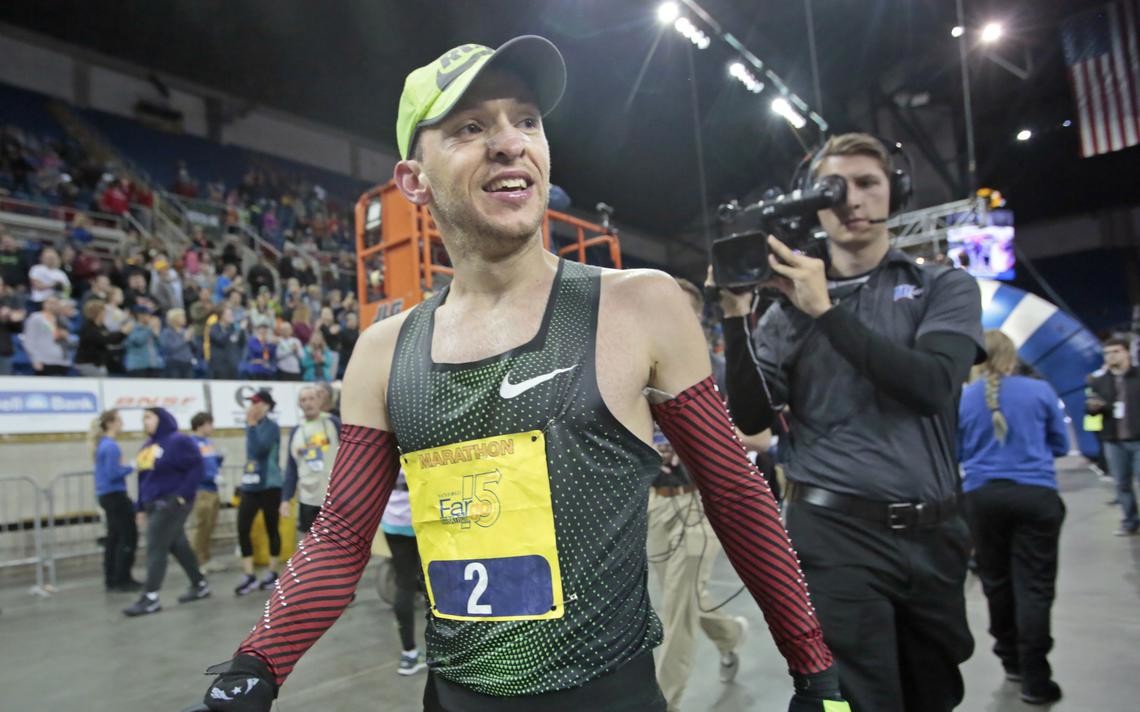
“We’re getting emails from people all over the country saying I see you’re still on,” said race director Mark Knutson.
He said Rugged Races, the owner of the Fargo Marathon, gave its blessing. Mike Almquist, who along with Knutson has been on board since the event’s inception in 2005 and is the operations manager under Rugged, has been getting elite applications almost daily, Knutson said.
The record number of registered runners for the full is 2,631 in 2011 with the race holding steady annually at between 1,500 and 2,000.
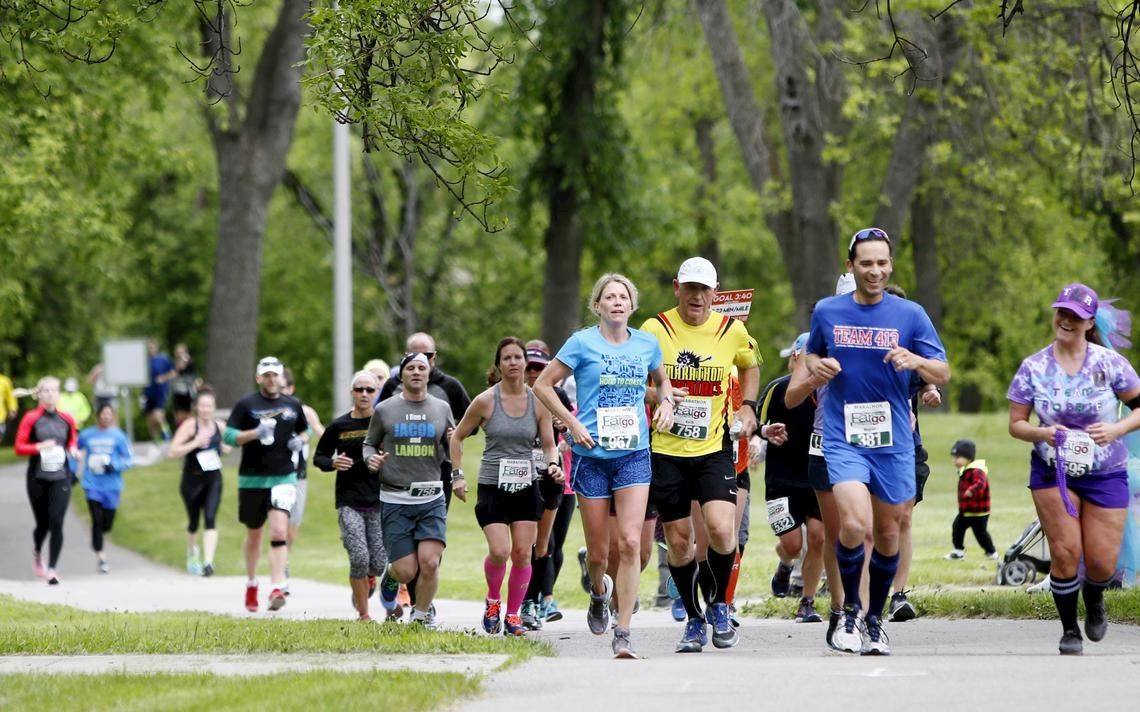
This year’s races will see some significant changes with social distancing measures. They will start and finish on the east side of the Fargodome instead of inside the facility. Runners will be starting in groups of 500 that will be assembled in multiple corrals in the dome parking lot.
“There will be no mass start outside of 500 people,” Knutson said.
The marathon route may have to change depending on the access to the city of Moorhead, Concordia College and Minnesota State Moorhead. It may go through downtown Fargo at the beginning of the race instead of toward the end but that is more because of road construction, Knutson said.
“By no means do we want to leave Moorhead out,” he said. “The course is still a little bit in limbo. If we can’t go into Moorhead, we’ll have to figure out additional real estate in Fargo.”
Around 10,000 are currently registered for all events. Knutson sees a realistic cap of around 15,000 registrants. Precautions will also be taken at aid stations, packet pickup and with volunteers.
The marathon has also received guidance from Fargo Cass Public Health.
“We have a very good COVID-focused plan, a really good plan,” he said.
The plan could see further easing of restrictions depending on the level of risk that is determined by the North Dakota Health Department. It’s currently at a green, or low level. It’s one level above blue, which is the safest.
At a green level, finishers will be given a medal, a pre-packaged food bag and then be encouraged to leave the premises.
“If we go to a blue on a state-wide level, I’m sure we’ll have music at the finish line and have a party in the parking lot,” Knutson said. “But for now, we’re going to proceed as if we’re going to stay with a green level.”
The record for all events is 25,700 set in 2012. A proliferation of marathons in recent years has made for a more competitive market, especially for out-of-town runners looking for a destination marathon.
Grandma’s Marathon in Duluth, Minn., normally held this month, was canceled. Knutson said he’s heard from runners who were registered for the Boston Marathon, which also was canceled.
“We hope to get some more national draw,” he said.
The Twin Cities Marathon on Oct. 4 and the Chicago Marathon on Oct. 11 are still on.
The Fargo Marathon and four-person relay, 13.1-mile half marathon and 10K are set for Saturday the 29th. The cyclothon, either a 15-mile or 26.2-mile loop, begins the week on Monday, Aug. 24 followed by the Furgo Dog Run on Tuesday. The annual Youth Run is set for Thursday and the 5K is set for Friday night.
The events were originally scheduled for mid-May. Participants who were registered for those races will automatically be entered in the new dates.
No refunds will be given. Registered runners who can’t make the new dates can do a “virtual run” and have their medal, bib number and race swag shipped to them.
(06/18/2020) ⚡AMPFargo Marathon
The Fargo Marathon is a week full of events, The Fargo Marathon is bound to have something for everyone. From the Cyclothon, Furgo Dog Run, Largest Kid's Race, 5K Walk/Run, 10K, Half Marathon, Full Marathon and Relays, there is a distance for all! Start and Finish inside the Fargo Dome - ...
more...Pam Rickard has been running since the 1980’s and running sober since 2006
Pam Rickard is all smiles while running the 2019 Boston Marathon. (First photo)
Pam Rickard participated in a seven-day running adventure across China’s Gobi Desert in June 2012 in which she won her age group. (Second photo)
While some people would say Pam Rickard is addicted to running, she would disagree. Rickard, who runs about 2,000 miles a year, has been running since the 1980s and running sober since 2006.
“If I’m living in healthy recovery, I don’t use running in an unbalanced, unhealthy way. I appreciate it as a gift and a tool of healthy living,” Rickard said.
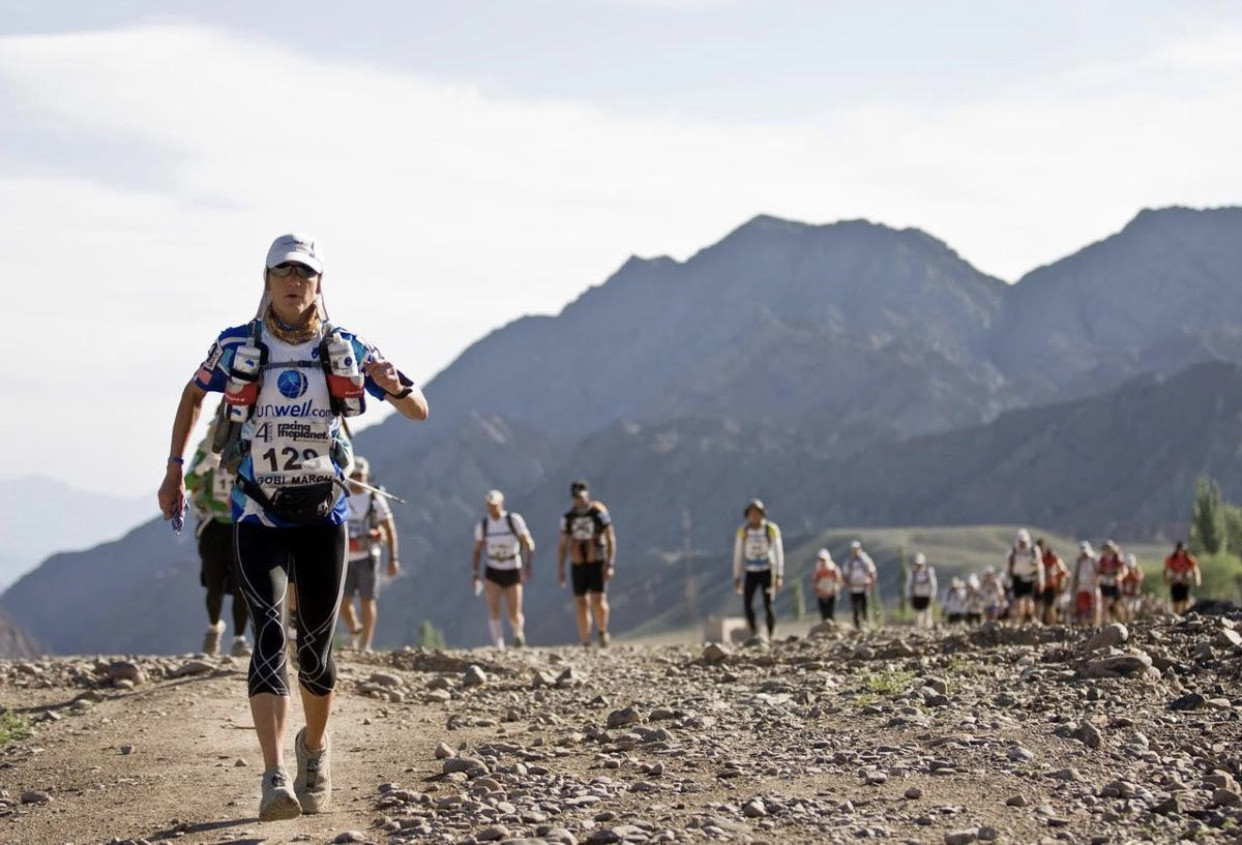
Rickard is director of Active Engagement for Herren Project, heading up Team Herren Project, engaging people to run, walk and participate in healthy activities, helping each other, and others, live stronger, healthier lives. She said she is grateful to be able to use her running, through her job, to raise awareness and funding for Herren Project’s mission, which includes providing prevention and addiction recovery resources and support for all affected by the disease.
In the 1980s and 1990s she graduated from Ohio University, started running, moved to Roanoke, Virginia to work for The Roanoke Times, married Tom Rickard and moved to Franklin County. As a runner, she has won races, earned best times in different age groups and completed seven marathons. Although drinking a lot during those years, she was high functioning and never drank while pregnant, nursing her children or seriously training.
After her third daughter was born in 2003, Rickard’s drinking escalated. In 2005-06, within 18 months, she received three DUIs.

“I know now that I was an alcoholic from the first drink at the age of 14,” said Rickard, who is now 58. “But as often the case with addiction, it’s progressive, but on its own timeline. In the ‘80s, ‘90s and early 2000s, I appeared to have it all together; did well in school, married the love of my life who I met in college, was an accomplished member of the local running community, a successful professional and eventually, a devoted mom.”
She added, “In truth, I was anxious and fearful much of the time, self-medicating with alcohol, trying desperately to keep my struggles hidden. Over a very long period of time, I began spiraling out of control. I tried to ‘fix’ my problems myself, declined even the notion of asking for help, and ended up in a ‘perfect storm’ of arrogance and fear. I finally surrendered to my God and my disease when I entered addiction treatment on April 17, 2006 – and took my first steps into sobriety.”
She described her treatment at The Farley Center in Williamsburg in April and May of that year as scary and hard, but after only a few days, she said she felt better and hopeful. She had to listen and follow directions and was relieved to not have to “run the show” anymore. She quickly realized what she got out of treatment was what she put into it.
After pleading guilty to her third DUI, Rickard served three months in the Roanoke City Jail from Sept. 28 to Dec. 31, 2006. Rickard was five months sober when she went to jail. As hard as things got, she hung onto the fact that God and her sobriety could not be taken from her.
“My only plan was to survive. God had other plans though, and while I ended up having some very ugly experiences, I also connected with many women who were broken … not bad, just in an extremely unhealthy cycle that went back generations,” she said. “When I walked out of that jail, the seeds had been planted that would ultimately grow into my desire to help those fighting battles similar to mine.”
Rickard didn’t drive for three years after her conviction. She said she hated inconveniencing her family, but she learned invaluable lessons. As part of her treatment after care, she committed to attending 90 recovery meetings in 90 days.
“It was ridiculously challenging with no license and living in the country, but I did that, and more,” she said.
Running is what connected Rickard to Herren Project. Over a 35-plus year running career, she has completed numerous races, including more than 80 marathons and ultramarathons. Her races have included a seven-day adventure across China’s Gobi Desert and a 100k (62 miles) trek through the Alps from Italy to France. She was a member of the 2016, six-person Icebreaker Run team, running across the U.S. to bring awareness to mental health issues. She has run the New York City Marathon 10 times and the Boston Marathon 10 times, including the 2013 race in which she finished 20 minutes before the bombs went off.
Of all the races she’s done, the one that stands out the most is her 2007 New York City Marathon.
“That was my first sober marathon,” she said. “Then it was my 50th sober marathon in 2018. Without that desire to run one more marathon as a sober person, I wouldn’t be where I am today. I believe I would be right where I should be, but that experience opened up so many opportunities. It began to teach me the priceless truth that I don’t run to stay sober, I get to run because I am.”
For those who struggle or have struggled with substance use disorder, Rickard said, “I encourage myself, and others, to ask for help when you need it, offer help when you can, follow direction of those who have what you want and trust the process.”
Rickard added, “The fact that I can run at all now, let alone do it while building a community and helping others through the work of Herren Project, is a priceless gift.
“Whether it’s a 3-mile training run, or a major event, my mantra is, ‘I don’t have to run, I get to.’”
(06/18/2020) ⚡AMP
by Leigh Prom
Paula Wright from Newport Ireland is going to run ten marathons in five days.
After being cooped up for almost three months due to Covid-19 restrictions, Paula Wright from Newport Ireland is aiming to run 10 marathons in 5 days to raise funds for Crumlin Children’s Hospital.
Paula Wright will begin the self entitled Lockdown Midsummer Madness Run this Saturday 20th June at 9am and finish on Wednesday 24th June and will run one marathon in the morning and one in the evening.
Each run will take place at the Longhouse field 500 metre track at Gortnavarnoge, Newport.
Daily updates on her progress can be followed on Facebook
https://facebook.com/events/s/paula-wright-running
Paula, who only took up endurance running in recent years decided to take up the challenge after walking a marathon within 5k radius of her home during the shutdown. It took her six and a half hours to complete, but she felt rejuvenated by it.
“As a runner my races came to an end in March,” she said.
“I had just missed out on Tokyo Marathon at the start of March which was cancelled due to fears of Covid19 spreading in Japan. Little did I know that this virus would become widespread here and change our lives forever.
“Instead of planning to run races, I found myself working from home full-time, schooling my children, meeting nobody and being thankful that I could at least get some running done within the 2km radius.
“As a positive person I took everything week by week, sticking to the restrictions and guidelines, finding joy of the smallest things and hoping we could move forward.
“Every restriction which got lifted gave me different routes to run and made me feel hope that we are going to win this.
“Through this progress I have felt a growing urge to do something. All these races which I missed and the future of not knowing when I will get to run any long races have made me restless. This made me think, I will need to challenge myself and wanted to help others by doing it.
Crumlin Children’s Hospital treats hundreds of sick children each year under the expert care of their world-class medical team. They need ongoing and urgent support to provide the essential funds, equipment and resources that help make the difference to patients and their families.
Paula is inviting everyone to come to support her during her task but by following government guidelines on social distancing. You can come to keep her company or maybe you would like to join for a loop or two? Support is really needed.
(06/18/2020) ⚡AMPBrendan Foster doubtful the rescheduled 2020 London Marathon can take place
A decision on the fate of this year's London Marathon, which has already been postponed from April to October will be made on Sunday.
Former British long-distance runner Brendan Foster has said it will be "extremely difficult" to stage this year's London Marathon amid the coronavirus pandemic.
Foster is the founder of the Great North Run and Monday saw this year's edition of that race, due to take place on September 13, canceled as a result of COVID-19.
A decision on whether this year's London Marathon — already postponed from April to October — is expected on Sunday June 21.
"Mass participation events in the form that ours takes, and the London Marathon takes, are clearly going to be extremely difficult to hold and it's going to be up to us to find a formula for the future," said Foster.
He added it would have been impossible to make the race virus secure amid the U.K.'s current two-meter social distancing regulations, as it would have meant a start line that "would have stretched from Newcastle to Berwick."
Foster is now looking to the 2021 edition, saying: "It's in our DNA to run, and to run in groups. We have been doing it for two million years, so there's no way that a pandemic like this is going to blow away man's endeavour in terms of running, and running together."
(06/17/2020) ⚡AMPTCS London Marathon
The London Marathon was first run on March 29, 1981 and has been held in the spring of every year since 2010. It is sponsored by Virgin Money and was founded by the former Olympic champion and journalist Chris Brasher and Welsh athlete John Disley. It is organized by Hugh Brasher (son of Chris) as Race Director and Nick Bitel...
more...2021 London Marathon set to host GB Olympic trial
British Athletics confirms there will be no further marathon team pre-selections ahead of the rescheduled Olympic Games
British athletes will race for Olympic Games places at next April’s Virgin Money London Marathon, provided athletics competition has safely returned by then following the coronavirus pandemic.
This year’s London Marathon had been due to incorporate the GB trial for the 2020 Games in Japan before the event in the UK capital was moved to October 4, with the postponement of the Olympics until July and August 2021 announced a short while later.
Sharing the news on Twitter, the UKA Athlete Commission said: “Last month saw us undertake a consultation process with some of GB’s top marathon runners and coaches regarding selection for Tokyo 2020. Today’s announcement confirms London Marathon April 2021 will be the trial race."
In a statement, the national governing body said: “British Athletics can today confirm that, subject to the safe return to competition for the sport of athletics, the Virgin Money London Marathon in April 2021 will be the trial race for the Tokyo Olympic Games.
“In addition there will be no further marathon team pre-selections.”
The Olympic marathon and race walk events are still set to take place in Sapporo, rather than Tokyo, in 2021, with Callum Hawkins the sole athlete to have been pre-selected for the British team.
Despite impressive marathon performances by the likes of Charlotte Purdue, Steph Twell and Jess Piasecki last year, no British women gained pre-selection.
There had been questions as to whether the rescheduled London Marathon, should it take place as planned in October, would still incorporate the GB Olympic trial but it looked unlikely following World Athletics’ decision to suspend the Olympic qualification period meaning that results achieved between April 6 and December will not count as Tokyo 2020 entry marks.
Last month event director Hugh Brasher highlighted the uncertainty regarding the running of the 40th edition London Marathon on October 4 and a further update is due from organisers on June 21.
On Monday it was confirmed that this year’s Great North Run half-marathon, which had been due to take place on September 13, has been cancelled.
(06/16/2020) ⚡AMPby Athletics Weekly
TCS London Marathon
The London Marathon was first run on March 29, 1981 and has been held in the spring of every year since 2010. It is sponsored by Virgin Money and was founded by the former Olympic champion and journalist Chris Brasher and Welsh athlete John Disley. It is organized by Hugh Brasher (son of Chris) as Race Director and Nick Bitel...
more...Stretching was once the cure-all for running injuries.
When it comes to running, experts want you to avoid static stretching
Stretching was once the cure-all for running injuries. Practitioners would ask injured runners if they were stretching enough, and if the answer was no they would offer more stretches. However, research is now suggesting that certain kinds of stretching aren’t great for runners, and may even be harmful for those who are prone to injury.
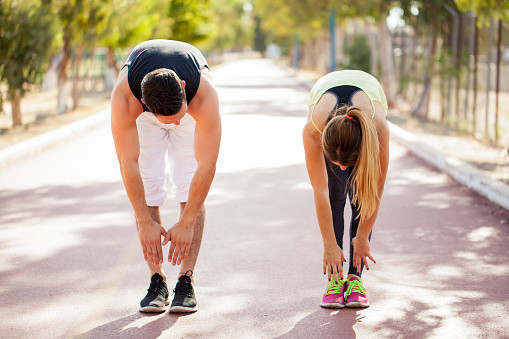
According to a literature review of several studies, there’s actually a correlation between lower levels of flexibility and better running economy, which refers to the amount of energy expended to maintain a particular speed. A study on untrained runners found that participants with the lowest flexibility happened to have the most naturally economic running styles. Researchers believe that this was a result of low range of motion, leading to better stabilization when the foot hits the ground. Basically, excessive range of motion means more energy is needed to stabilize muscles, and having a lower range of motion reduces that use of energy.
Carla Robbins is the owner of Vital Strength and Physiology in Calgary, Alta. She says she almost never prescribes static stretching to her clients – she’s all about strength work. “If stretching is something you do frequently, it’s technically possible to get more length in the muscle, but I don’t personally recommend it. I feel like there are other things that can check that box, for example, dynamic stretching or strength training. Strength training results in strength (and length), while also preventing injury.”
When To stretch - If static stretching (holding one position) isn’t recommended for runners, then what should they be doing to warm up? Robbins says ideally runners will integrate dynamic stretching (not holding the stretch, but moving with control in and out of the end ranges of the stretch) into their pre-run routine. A dynamic warmup will increase body temperature, which activates enzymes that are beneficial to running.
When not to stretch - Robbins says static stretching should be avoided by runners who are trying to prevent (or rehabilitate) an injury. “There isn’t enough evidence to support that stretching prevents injury,” she explains. “Some stiffness is required in the ligaments and muscles to run. For example, if you’re a hyper-mobile person with relaxed ligaments, you might be more prone to injury as your joints are more likely to move with loading. Lack of stiffness isn’t necessarily beneficial.”
Robbins also reminds runners never to stretch through pain. “Listen to your body, it’ll tell you if you’re doing something wrong.
”What about cramping?
When runners cramp up, many feel the need to “stretch it out,” but the research is divided on the topic. Muscle cramps can be caused by many factors including dehydration, fatigue and vitamin or mineral deficiencies. Leg cramps can also be a side effect of some prescription medications.
However, the reason for cramping and its exact cure eludes us. Several studies suggest that stretching out a cramp won’t hurt you, but it won’t necessarily help, either. If cramping is an issue for you, Hyland’s Leg Cramp Tablets, an official sponsor of the Boston Marathon, are one way to feel confident on the start line. Hyland’s Leg Cramps Tablets are taken without water, the quick dissolving tablets melt instantly in your mouth for fast-acting natural relief of leg, calf and foot cramps with no known side effects. They can be purchased on Amazon.ca and ship worldwide.
What muscles should runners pay attention to?
Robbins is a big fan of strength training, which both lengthens and strengthens muscles. In addition to making runners stronger, it’s a great way to prevent injury. “For example, if you’re super stiff and have no hamstring flexibility, but also continually injure your hamstrings, you could look at training that muscle,” she says. “Train at the end of a muscle’s range of motion (a deep deadlift is an example) so that you not only develop length, but also strength in the long term. Studies comparing stretching protocols to strengthening protocols have shown that a runner can improve injury-resilience with strength training and joint mobility without ever stretching.”
When strength training, runners should pay special attention to their quads and hamstrings, along with ankle and hip mobility. These are the areas where the most-common running injuries tend to happen.
(06/16/2020) ⚡AMPby Running Magazine
Majority of Tokyo Olympic sponsors undecided on extension
A survey in Japan has revealed two-thirds of corporate sponsors of the Tokyo 2020 Olympics and Paralympics are unsure if they will extend their contracts beyond this December.
Japan’s public media organization NHK conducted a survey of 78 Olympic and Paralympic sponsor companies in May, with 57 of them responding.
NHK says about 12 per cent plan to extend their contracts with the Organizing Committee, while about 65 per cent said they have not started any discussions with the committee and are undecided on extending agreements.
The sponsors who plan to extend their contracts said reports the Games would face cancellation if they cannot take place in 2021 were alarming, the same firms believed that Games without spectators in the stadium would be a reason for withdrawing sponsorship.
The Covid-19 pandemic was highlighted as the main concern for most sponsors with 68 per cent of them saying their financial situation this year has been deteriorating.
The social distancing restrictions due to Covid-19 had also prevented sponsors holding promotional events as they would potentially be held in crowded situations.
In their report NHK said companies failed to respond on how they will react if the committee asks for further financial contributions should they extend their contracts. Fourteen per cent said it would depend on the asking price on whether they will extend or not.
SportBusiness understands that the decision to ask sponsors to make extra payments will be taken in the June-July period and will determine whether domestic partners will be asked to pay more and, if so, at what percentage of the annualised fee.
During an online meeting this week the International Olympic Committee and Games organisers agreed to host a “simplified” games, cutting the financial burden caused by the postponement while prioritising safeguards against Covid-19.
(06/16/2020) ⚡AMPTokyo 2020 Olympic Games
Fifty-six years after having organized the Olympic Games, the Japanese capital will be hosting a Summer edition for the second time, originally scheduled from July 24 to August 9, 2020, the games were postponed due to coronavirus outbreak, the postponed Tokyo Olympics will be held from July 23 to August 8 in 2021, according to the International Olympic Committee decision. ...
more...The Great North Run has been Cancelled
This year’s Great North Run in September has been cancelled due to the coronavirus pandemic.
The iconic half marathon race, which raises more than £25 million for charity, was due to take place on 13 September, but race organisers have now confirmed it will not go ahead due to health risks.
A statement read: “Today, we have confirmed the cancellation of the 2020 Great North Run. The impacts of the COVID-19 pandemic mean it isn’t possible to stage the event as planned this year.
The 40th Great North Run is now scheduled to take place on 12 September 2021, while the Great Manchester Run on 6 September has also been cancelled, with its next edition of the race set for 23 May, 2021.
Runners who had their place confirmed by the 2020 Ballot or through membership have the option of rolling their entry over to next year. While charity runners should wait to be contacted directly in the coming days or weeks to secure a place at next year’s race.
While the rescheduled London Marathon remains on for now, with 4 October the revised date.
(06/15/2020) ⚡AMPGreat North Run
Great North Run founder Brendan Foster believes Britain is ready to welcome the world with open arms after the launch of the event's most ambitious plan to date. The Great World Run campaign seeks to recruit one runner from every country in the United Nations – 193 in total – to take part in the iconic half marathon in...
more...

